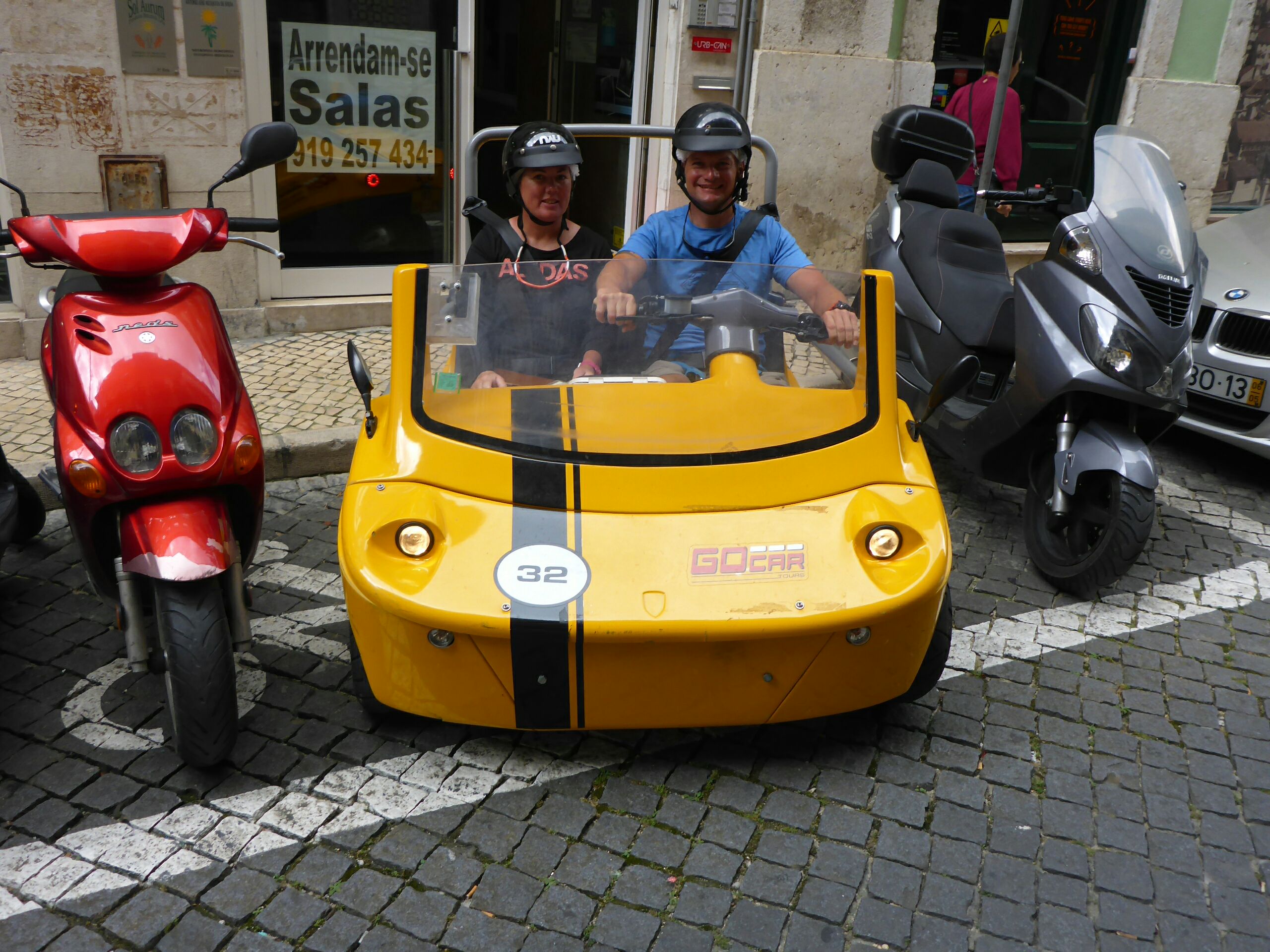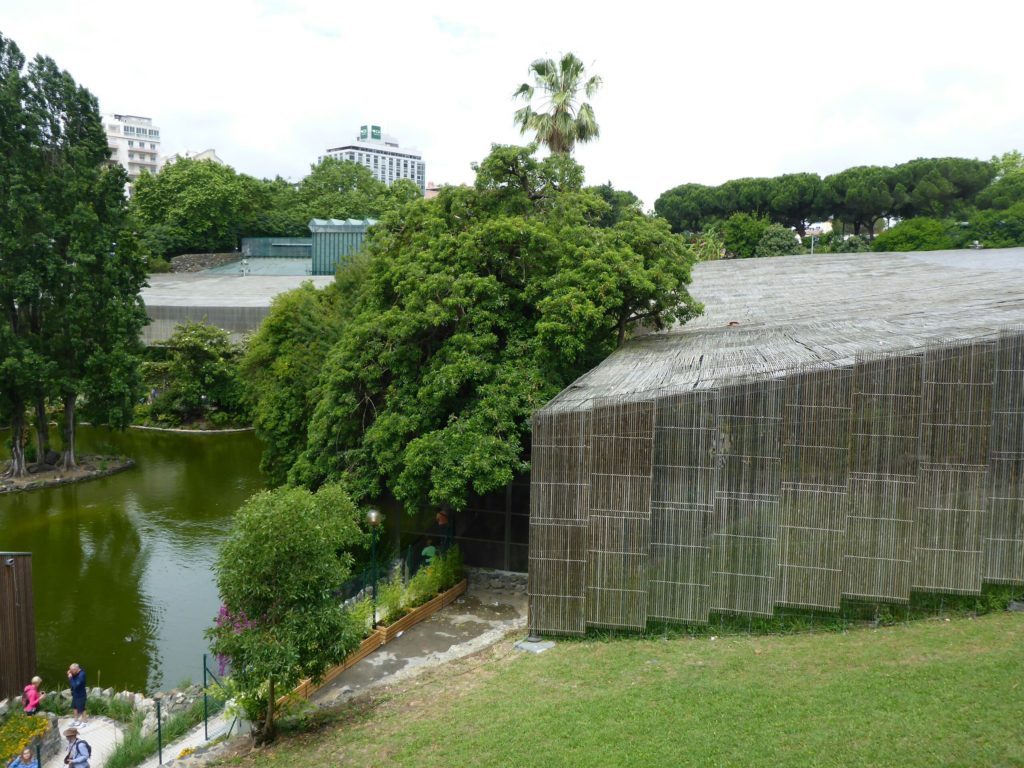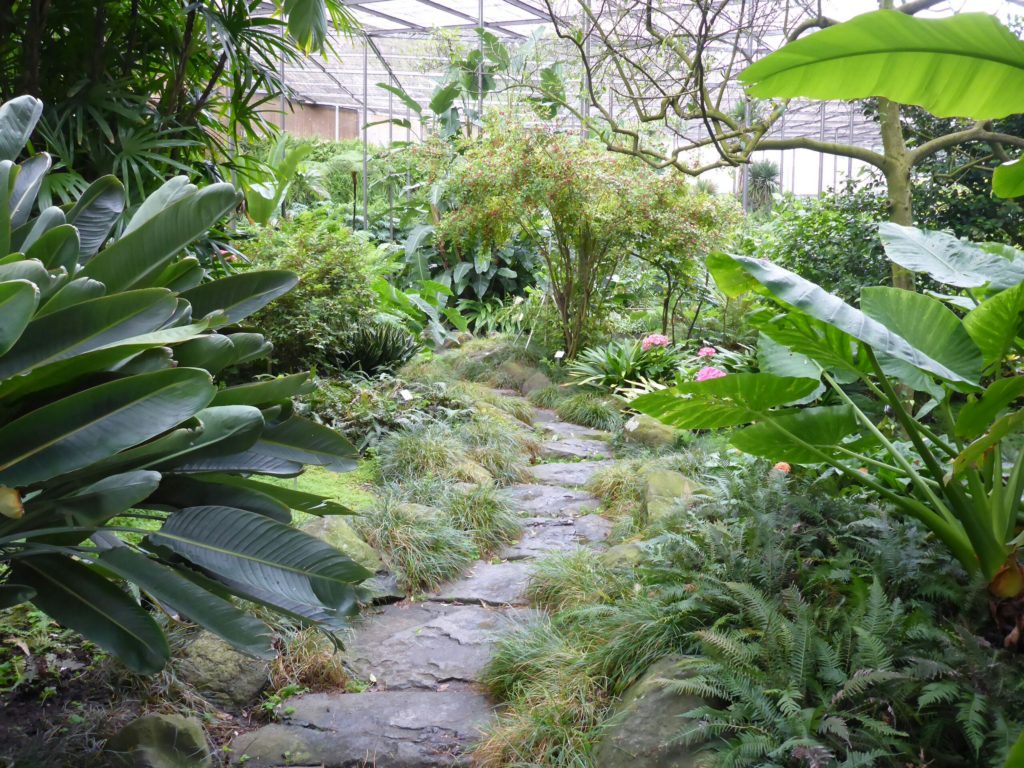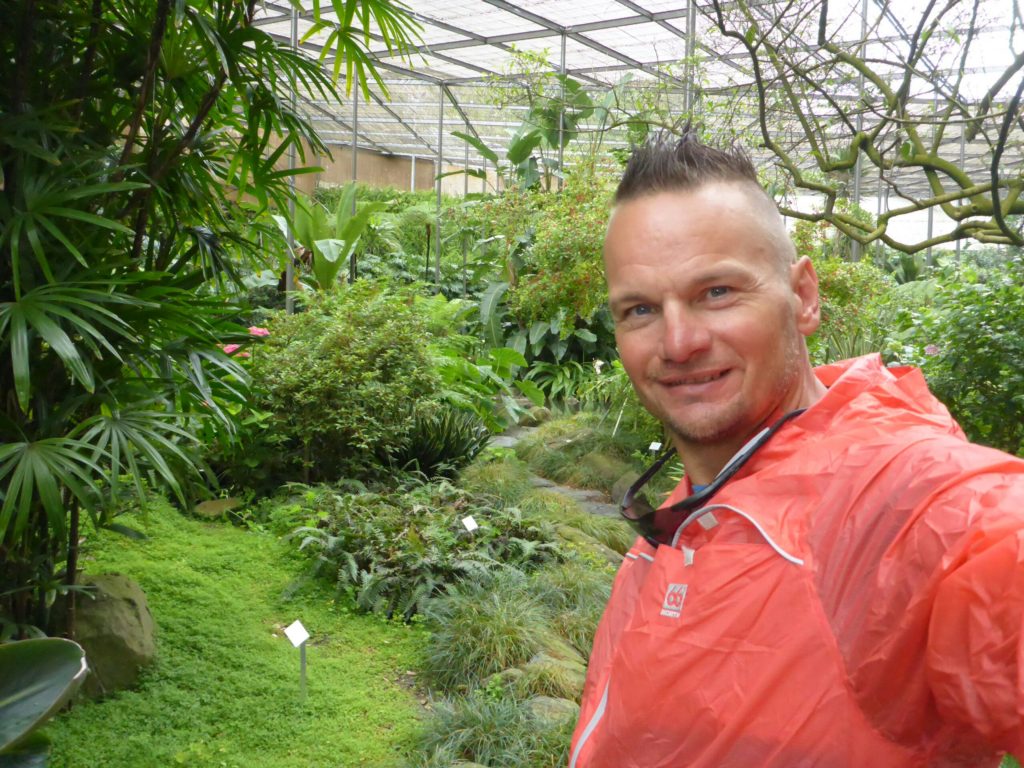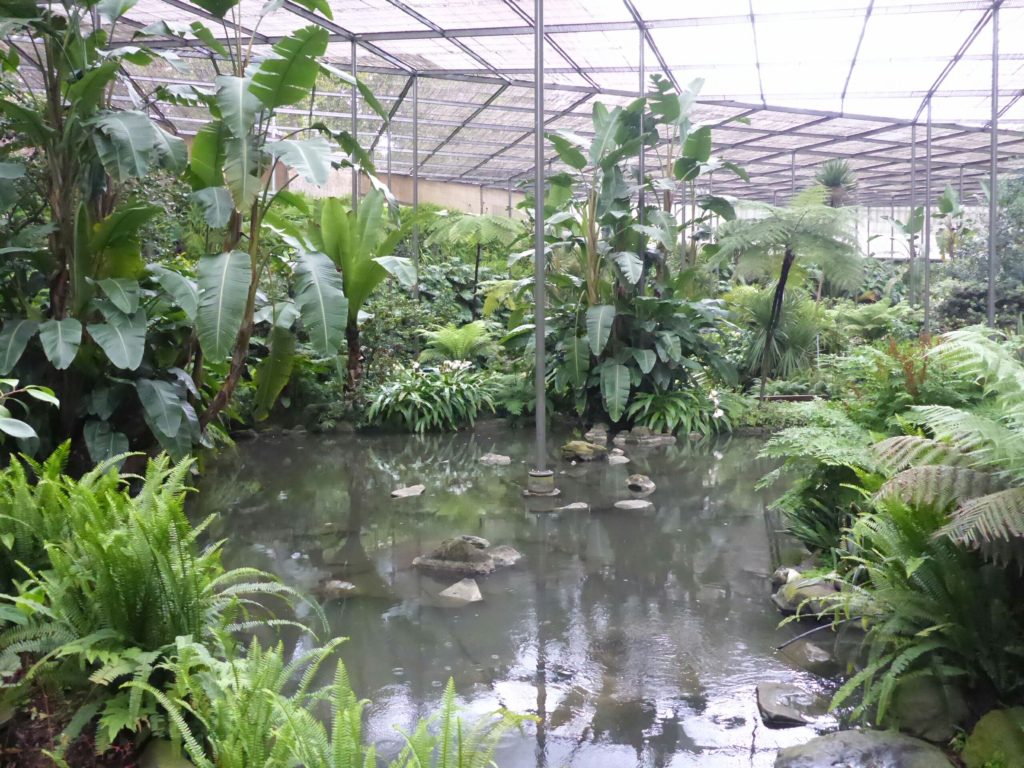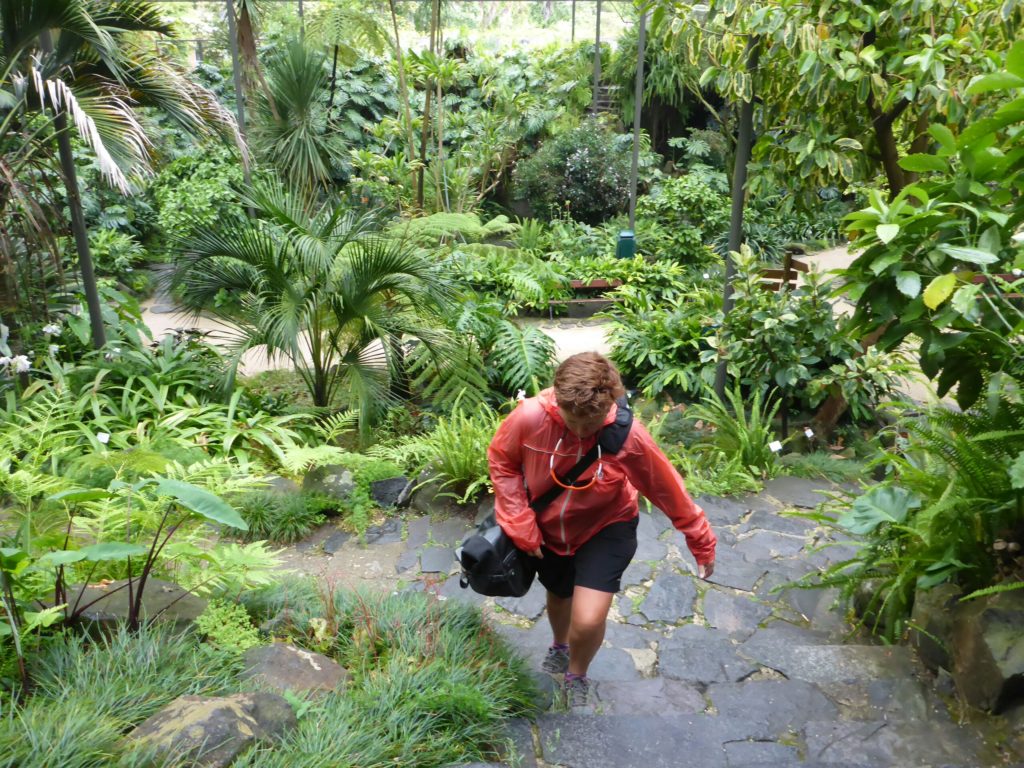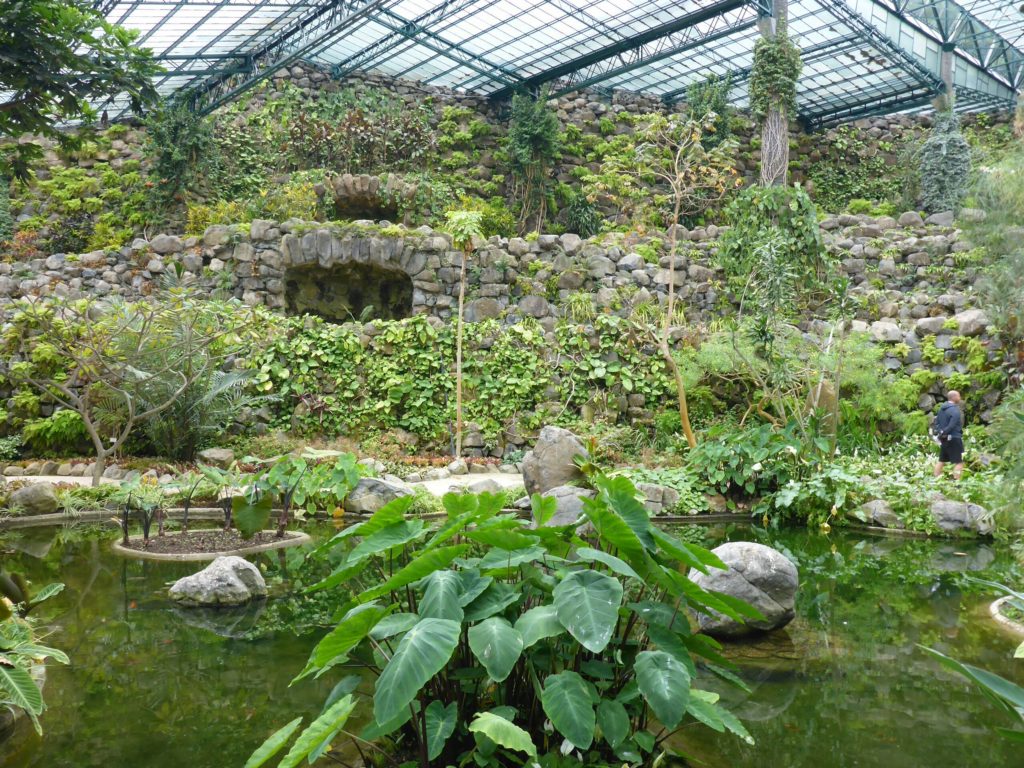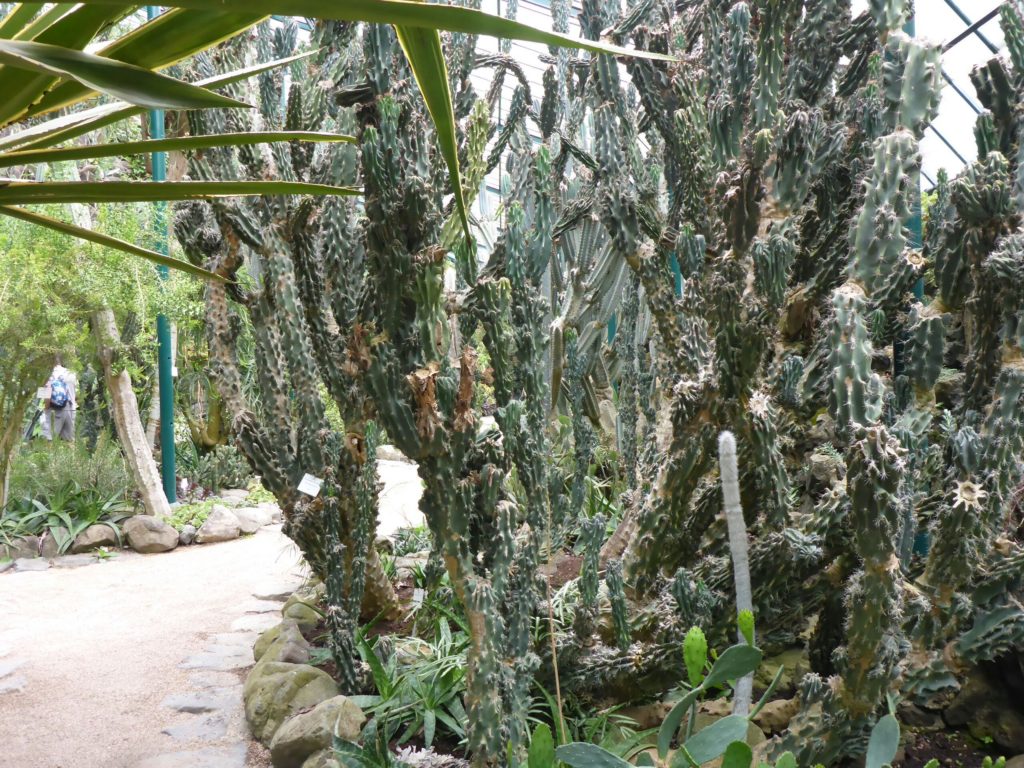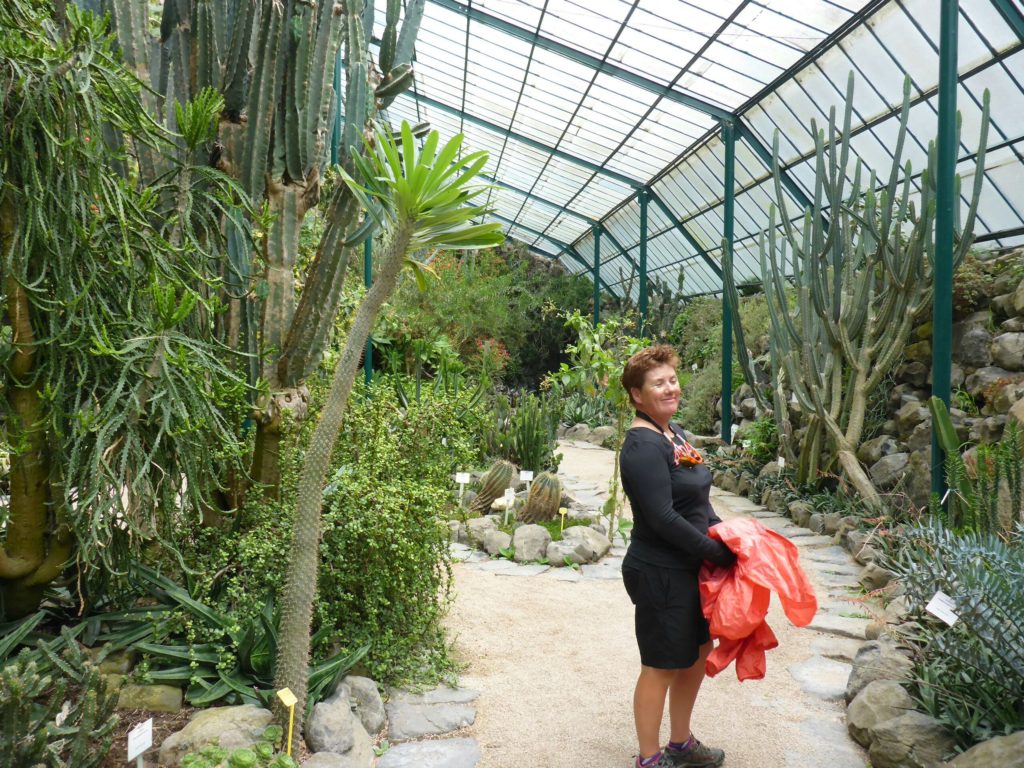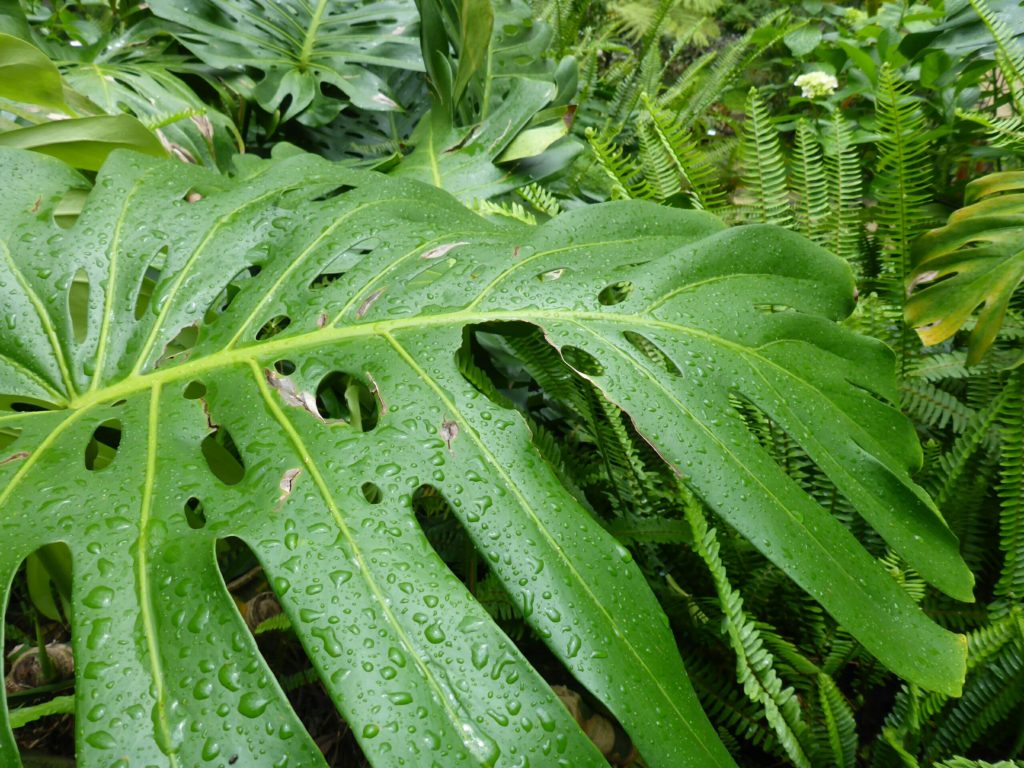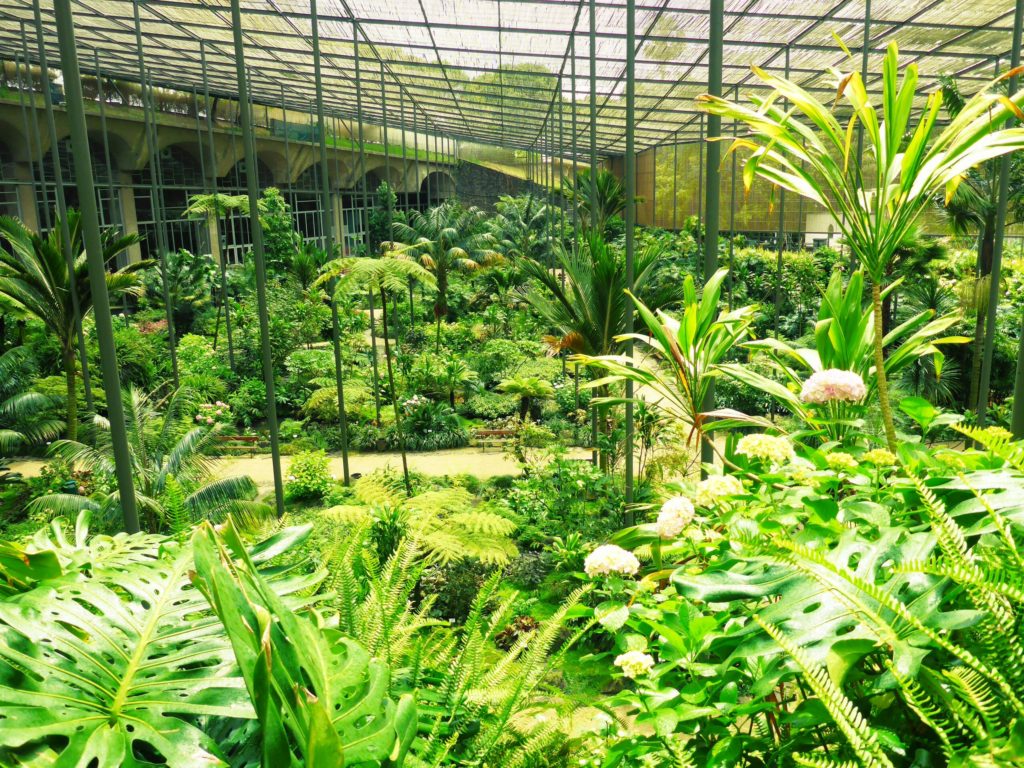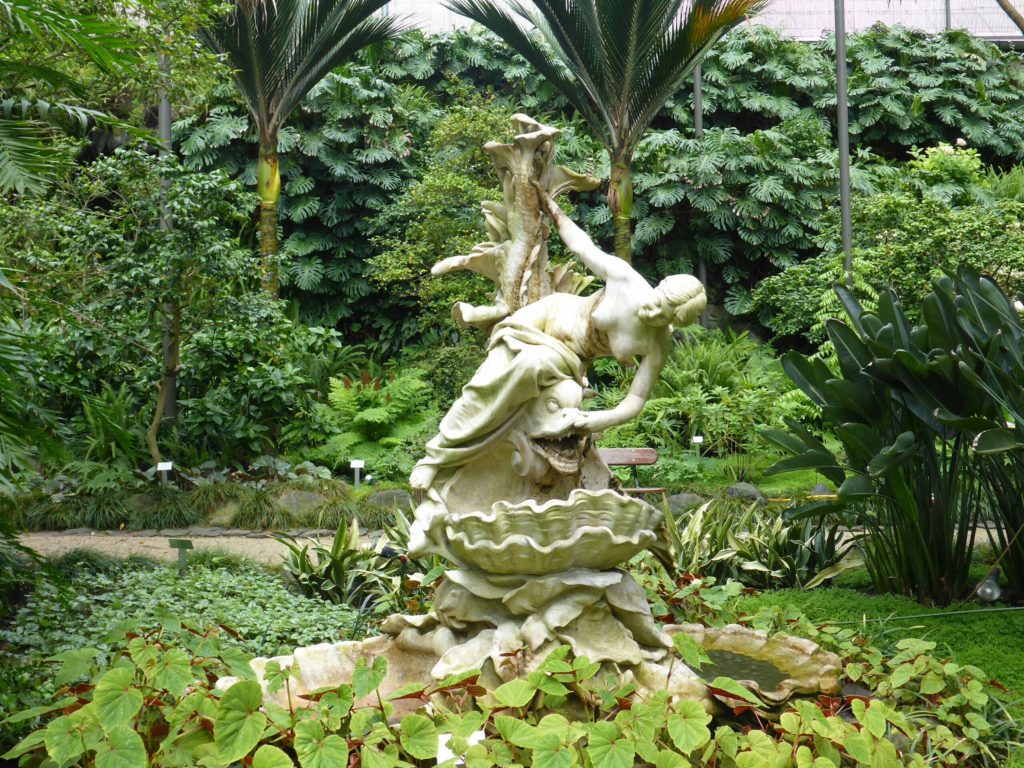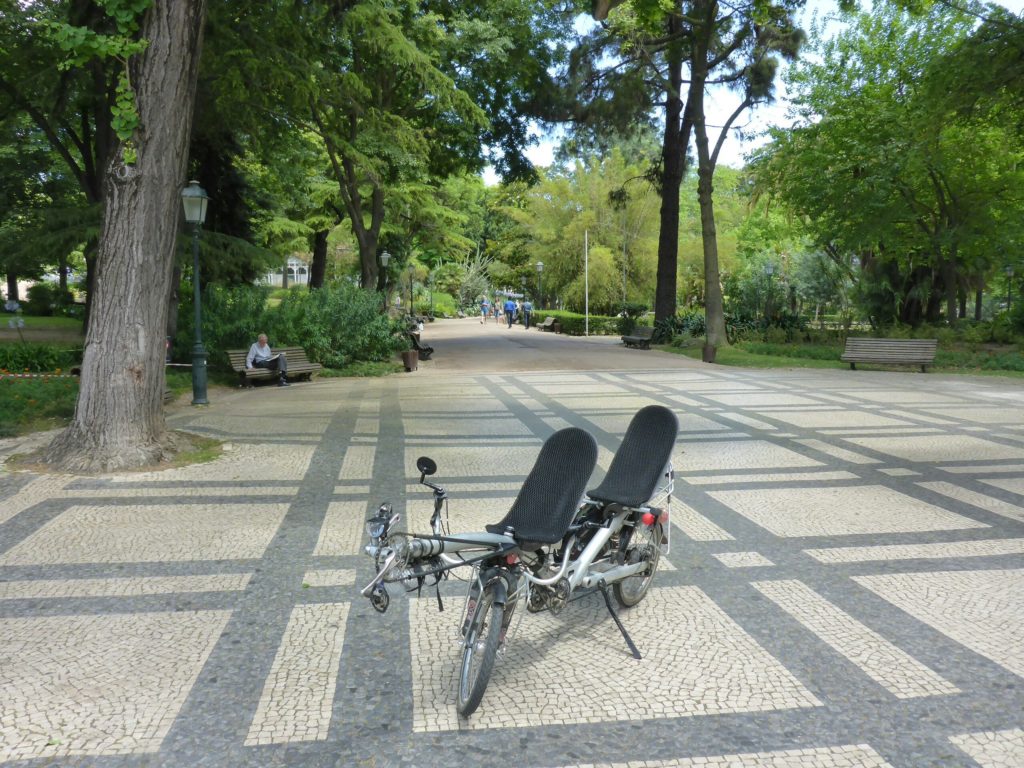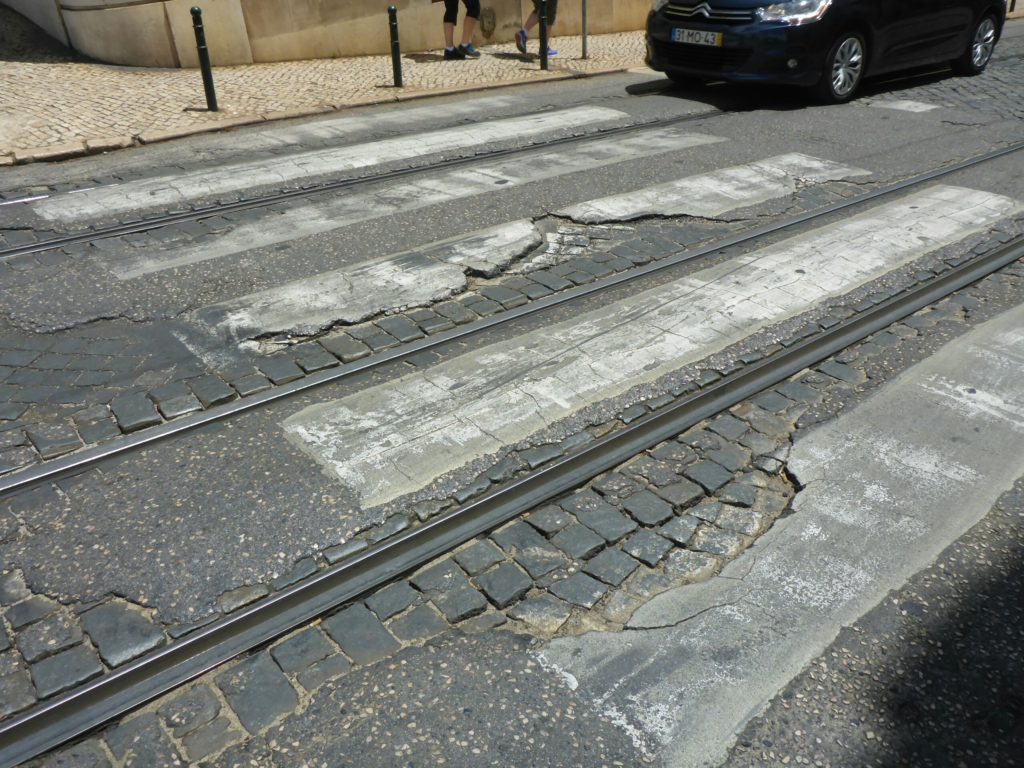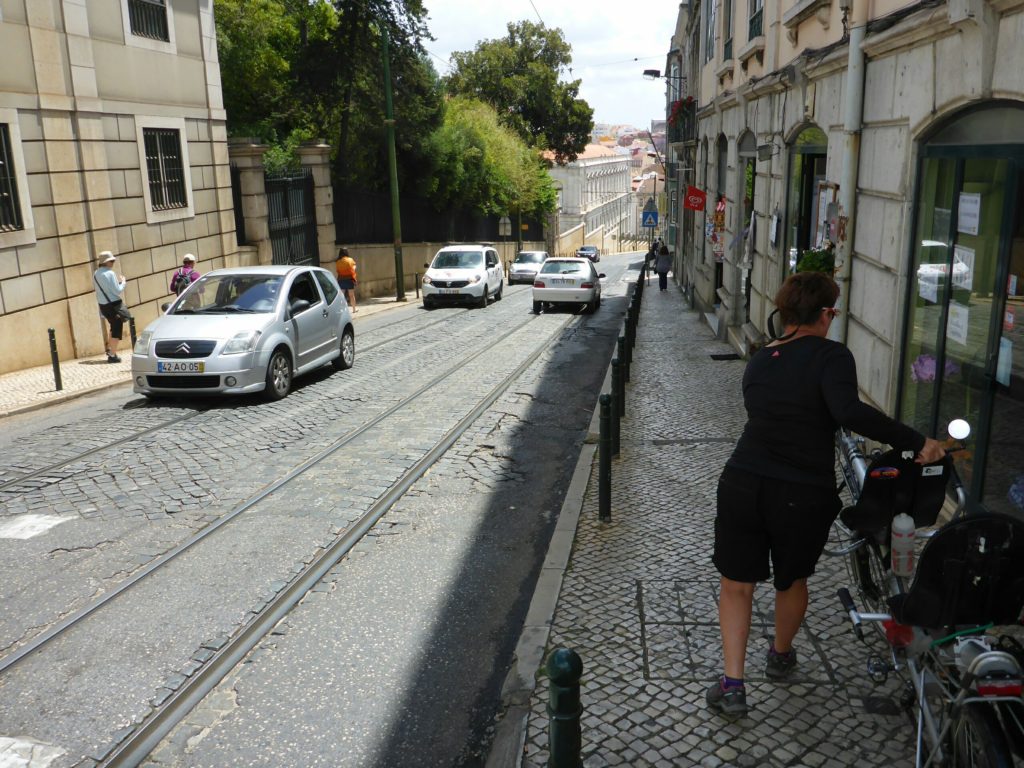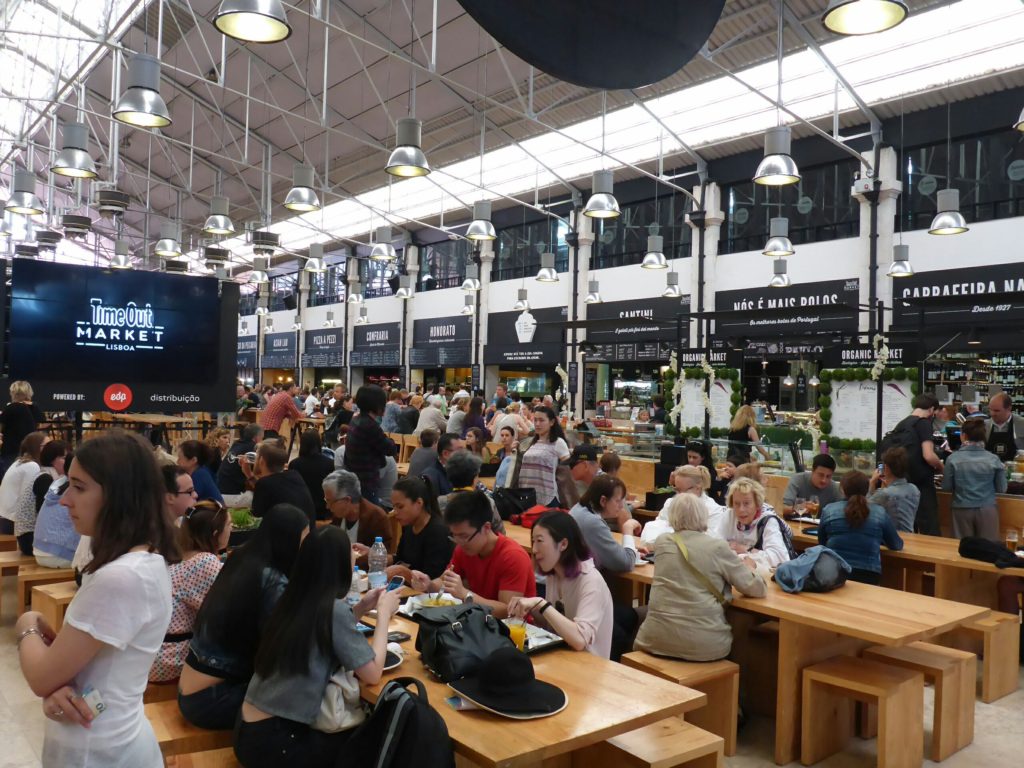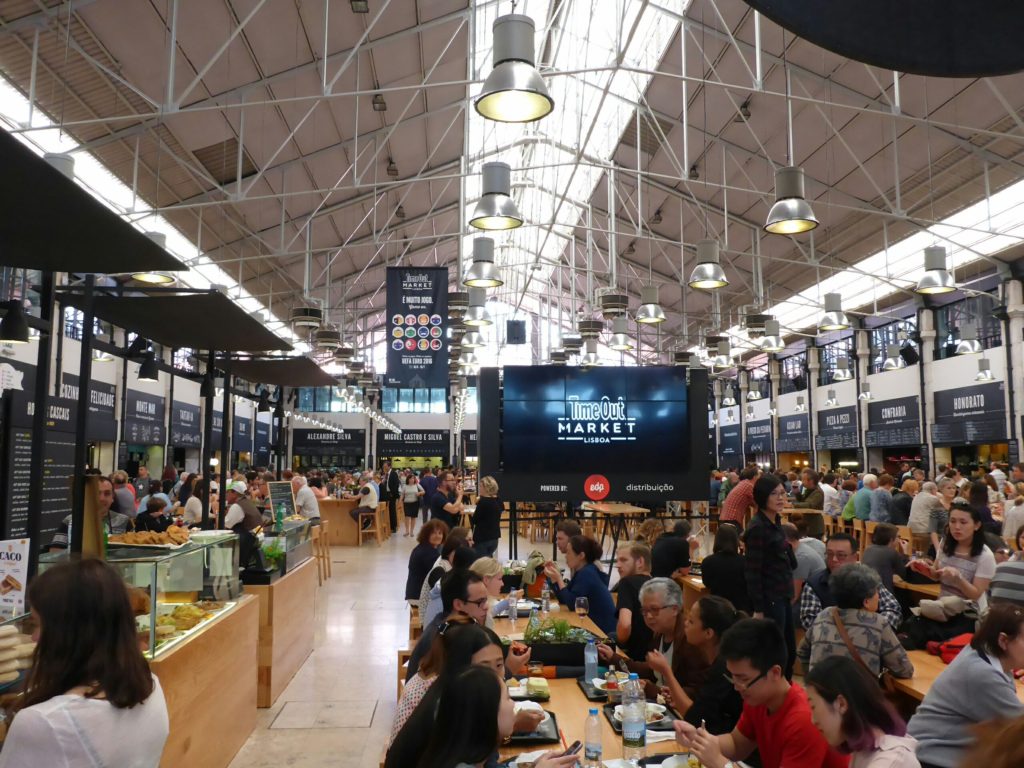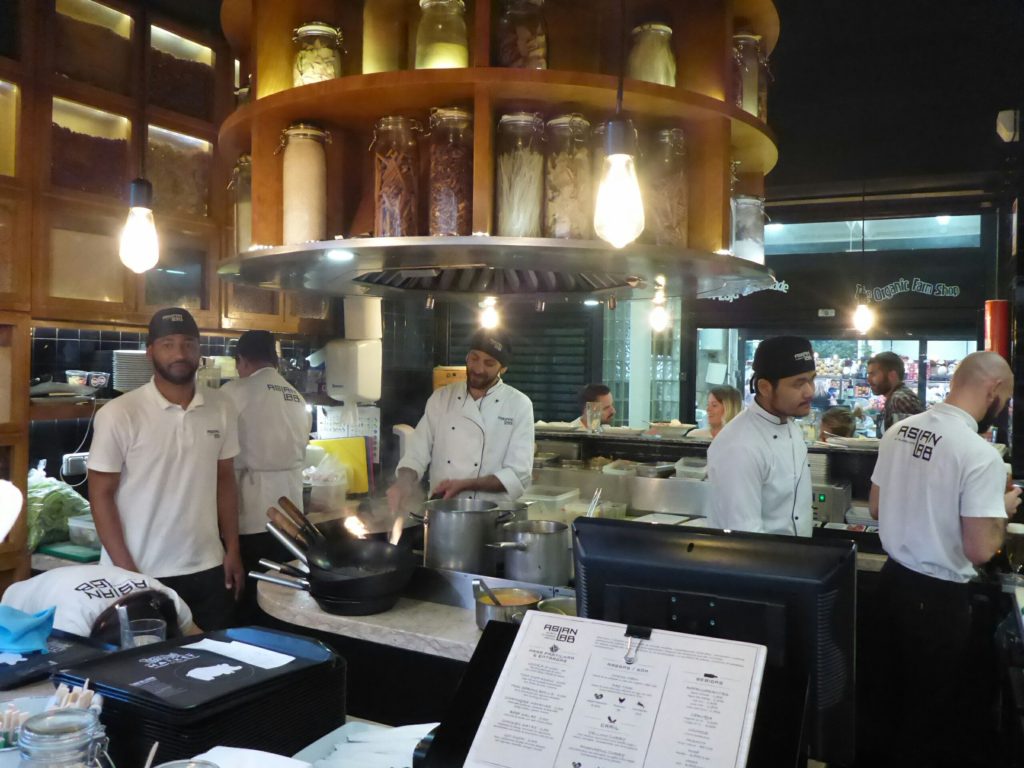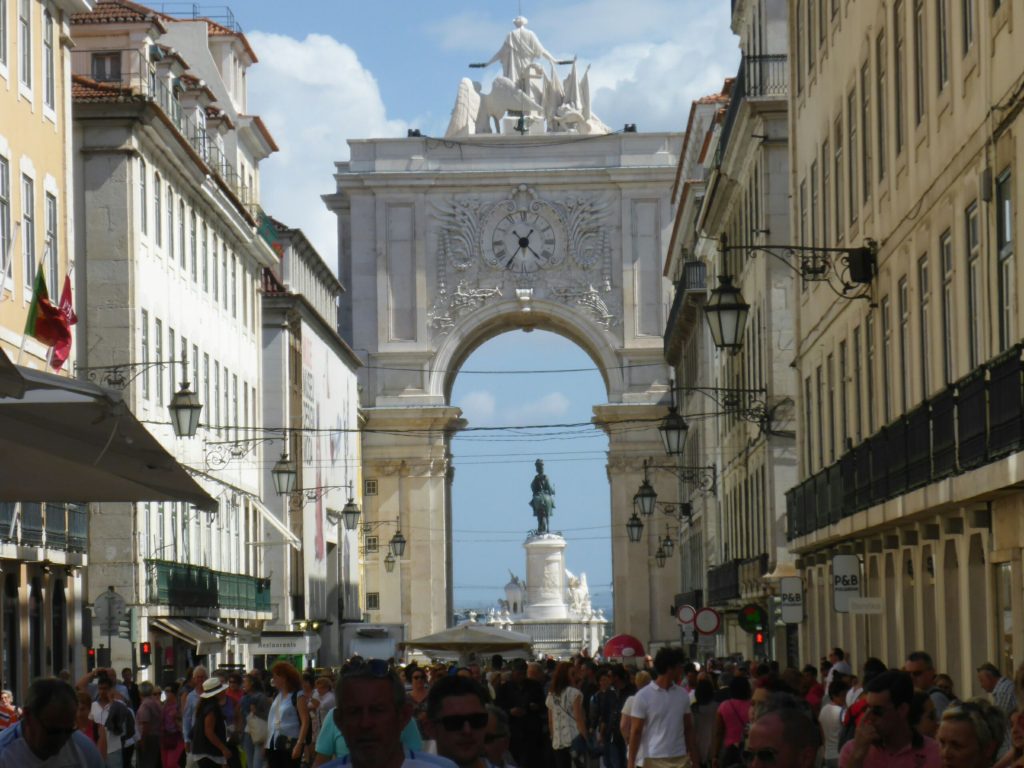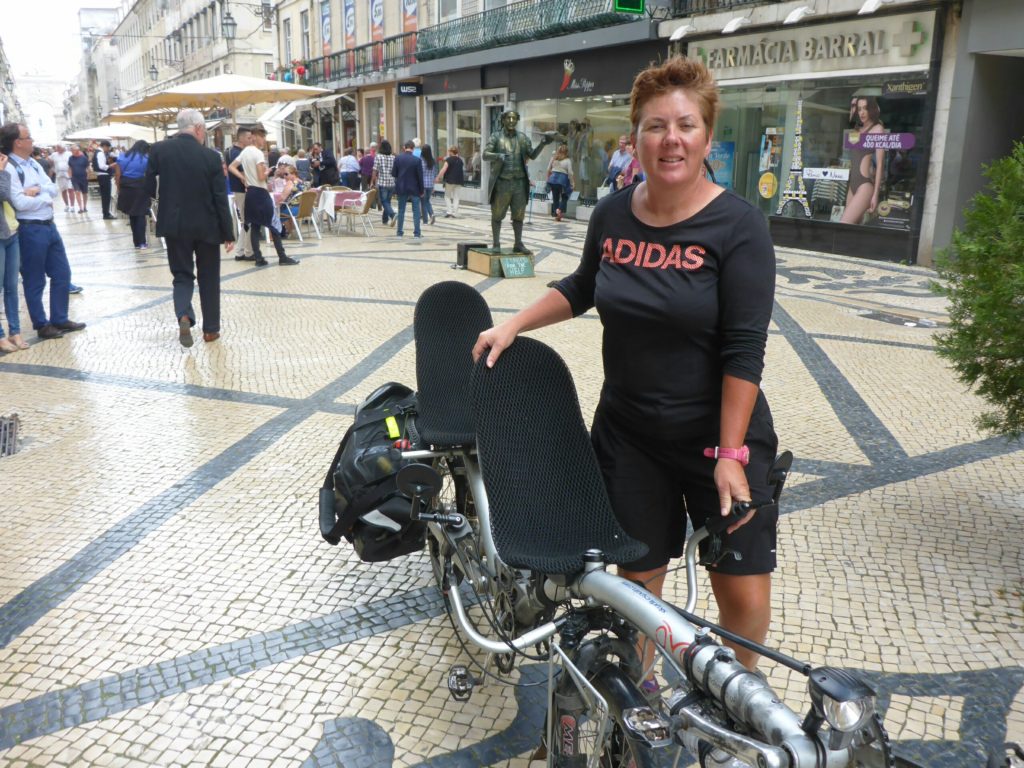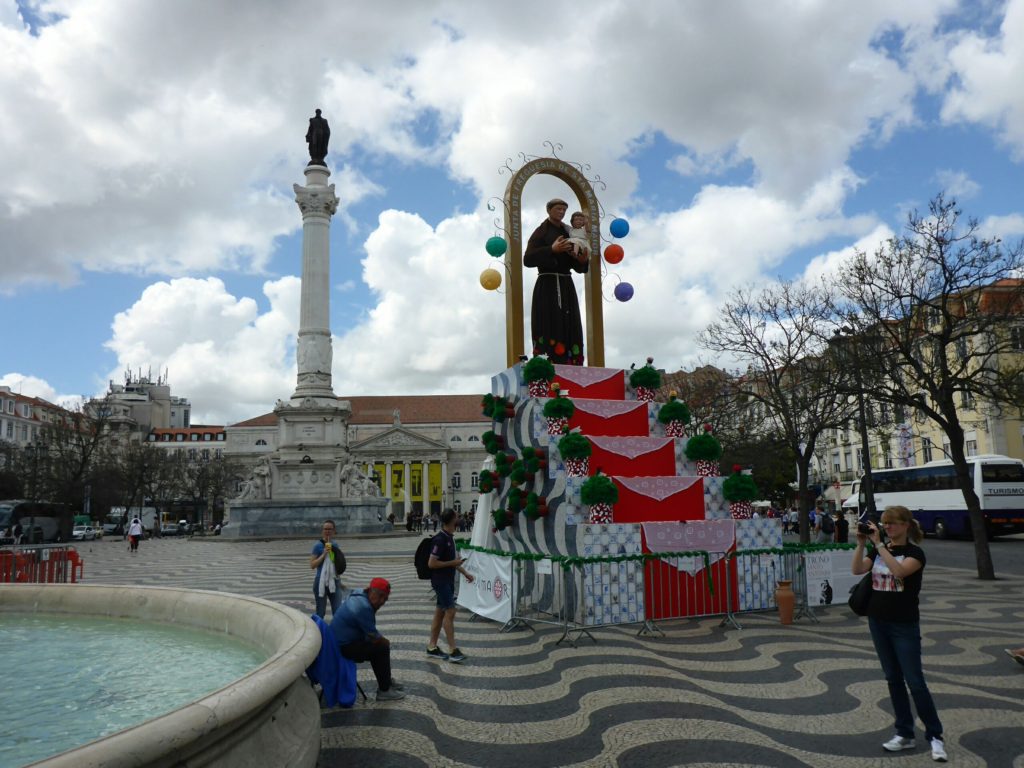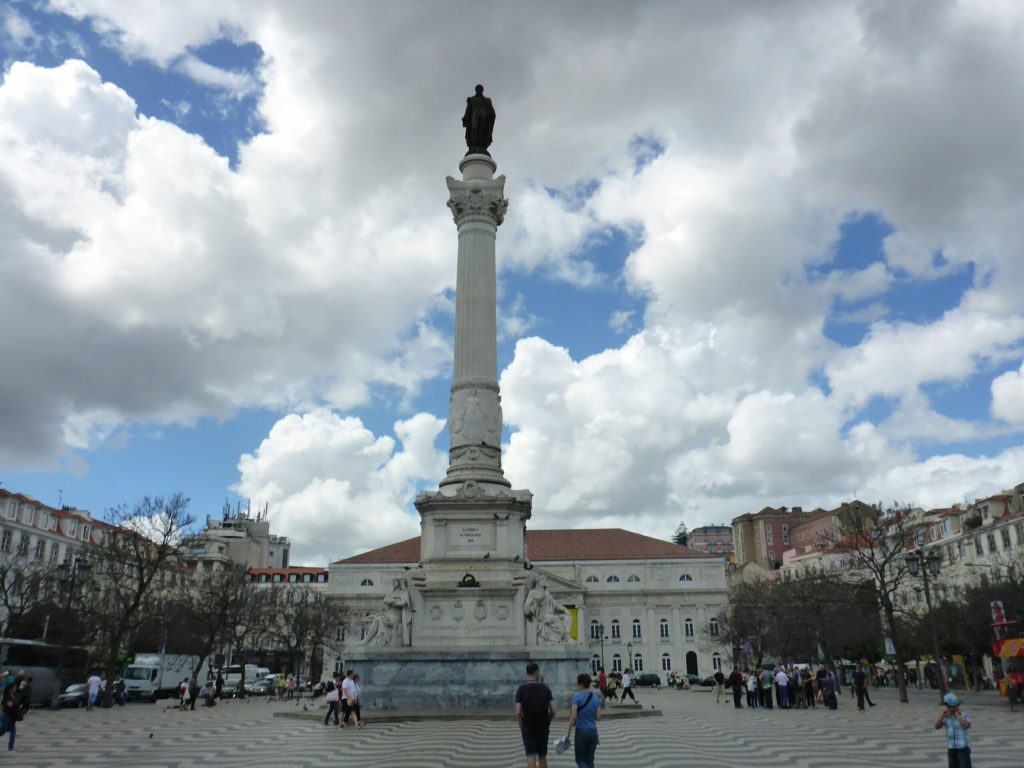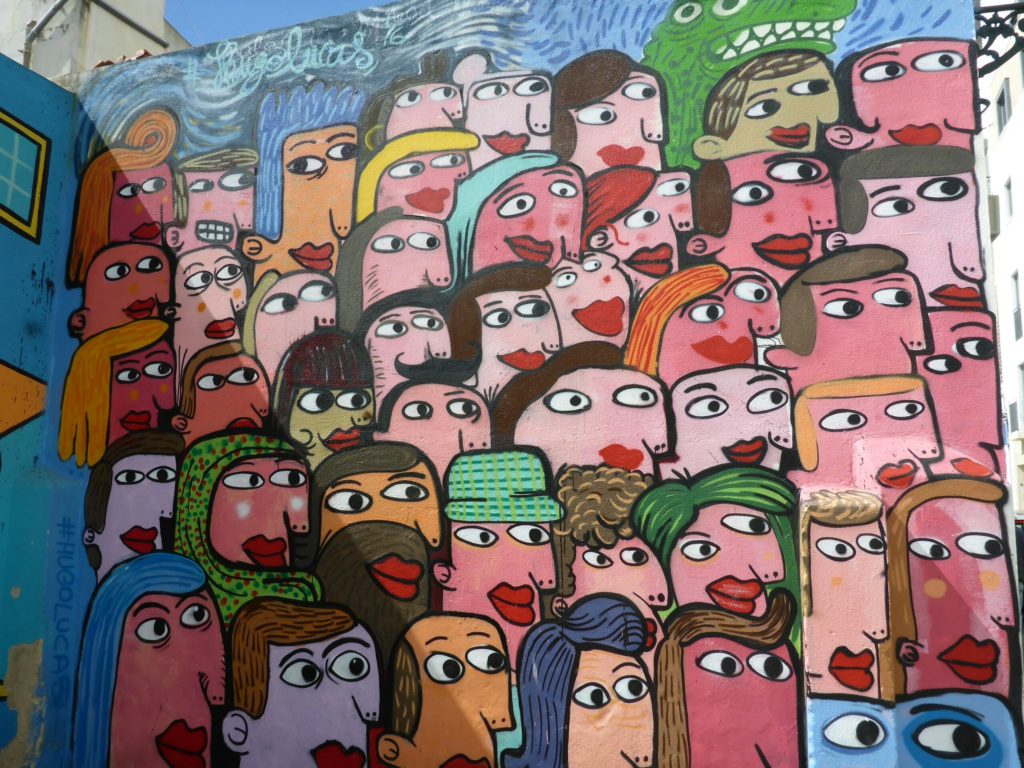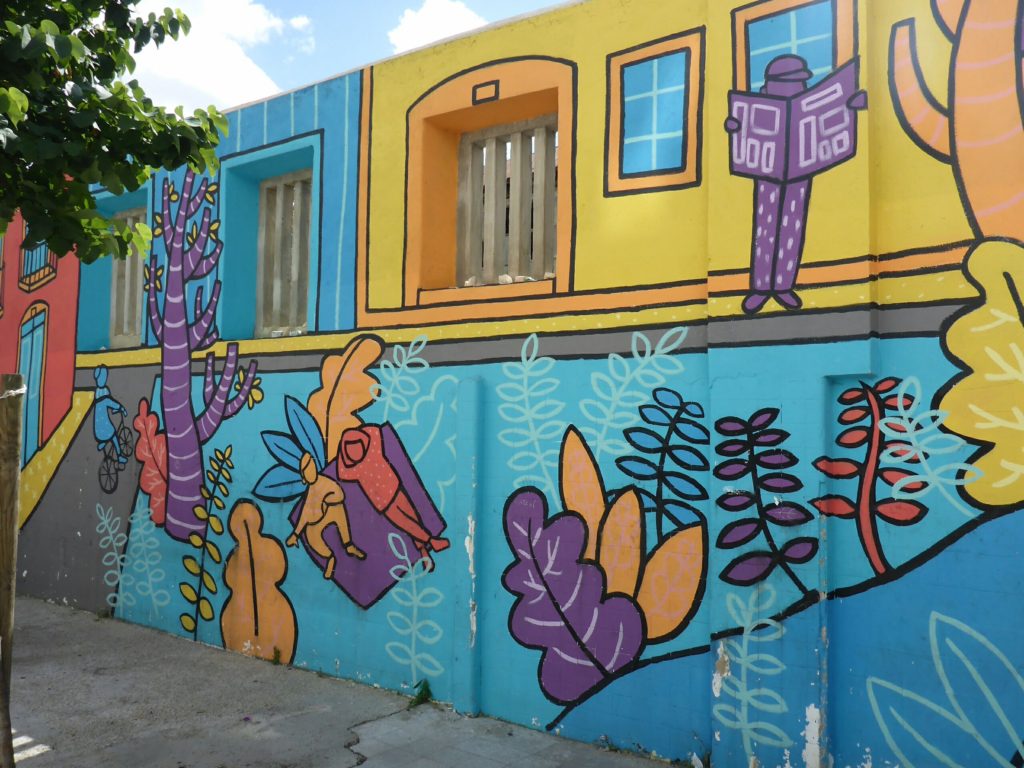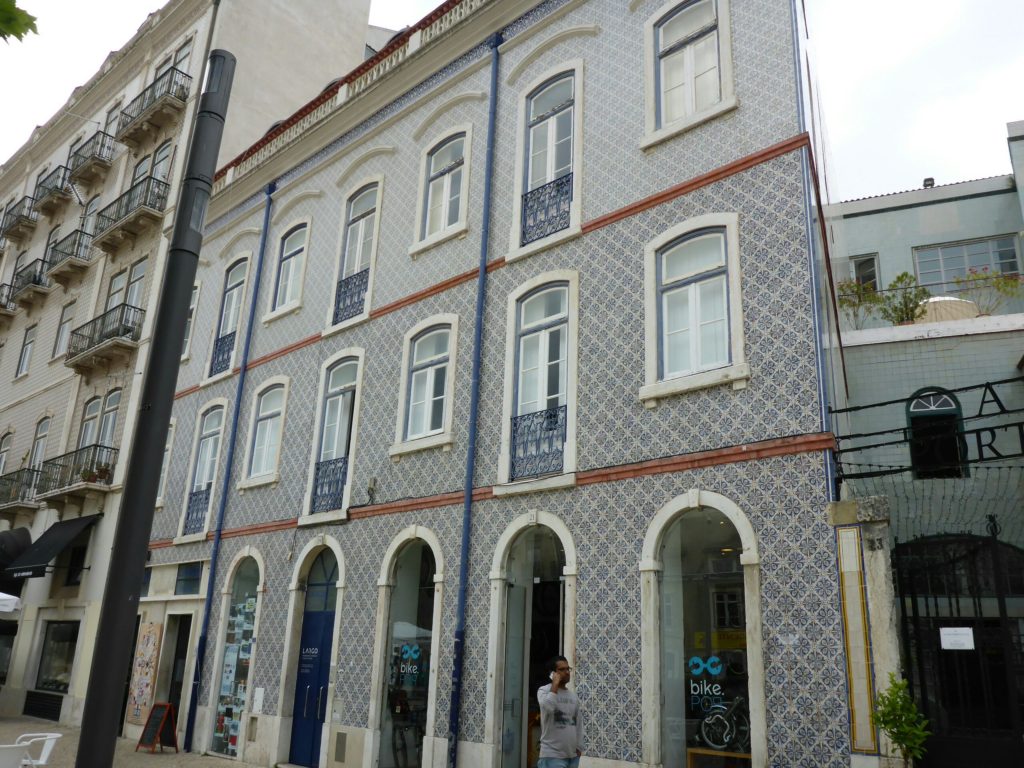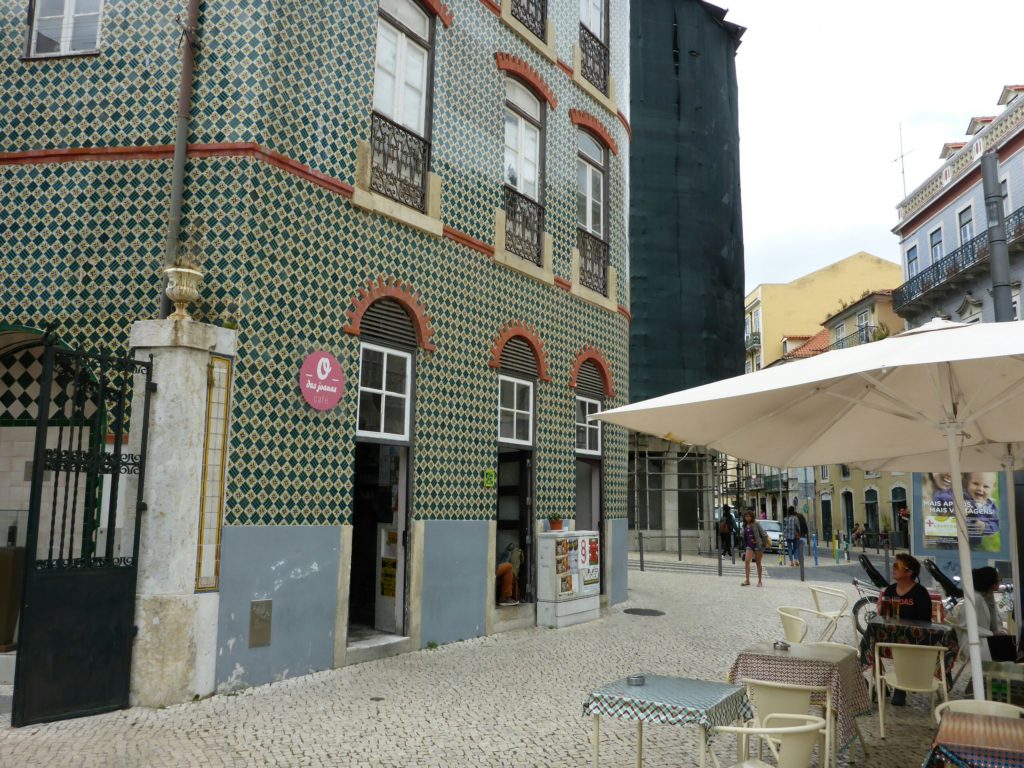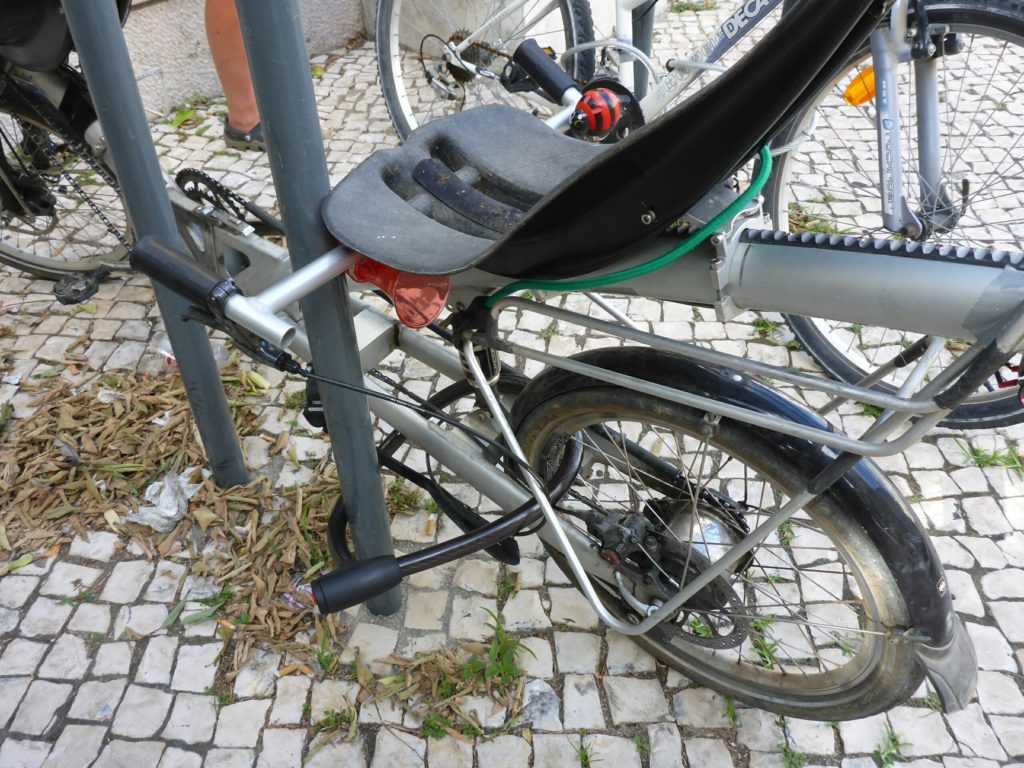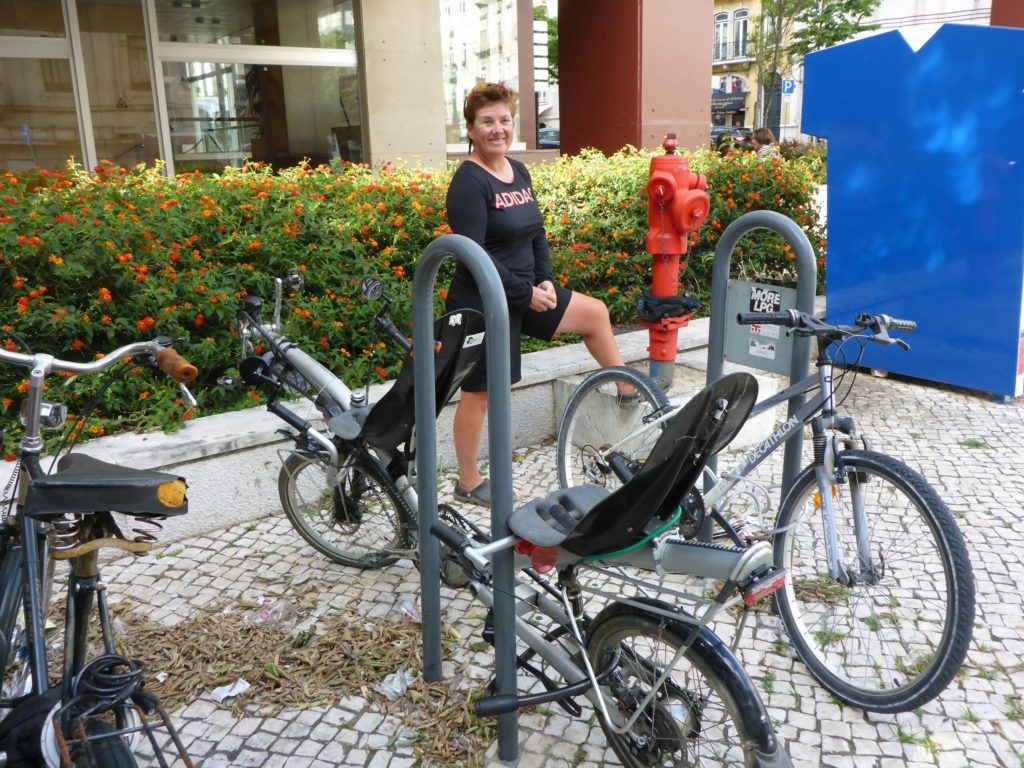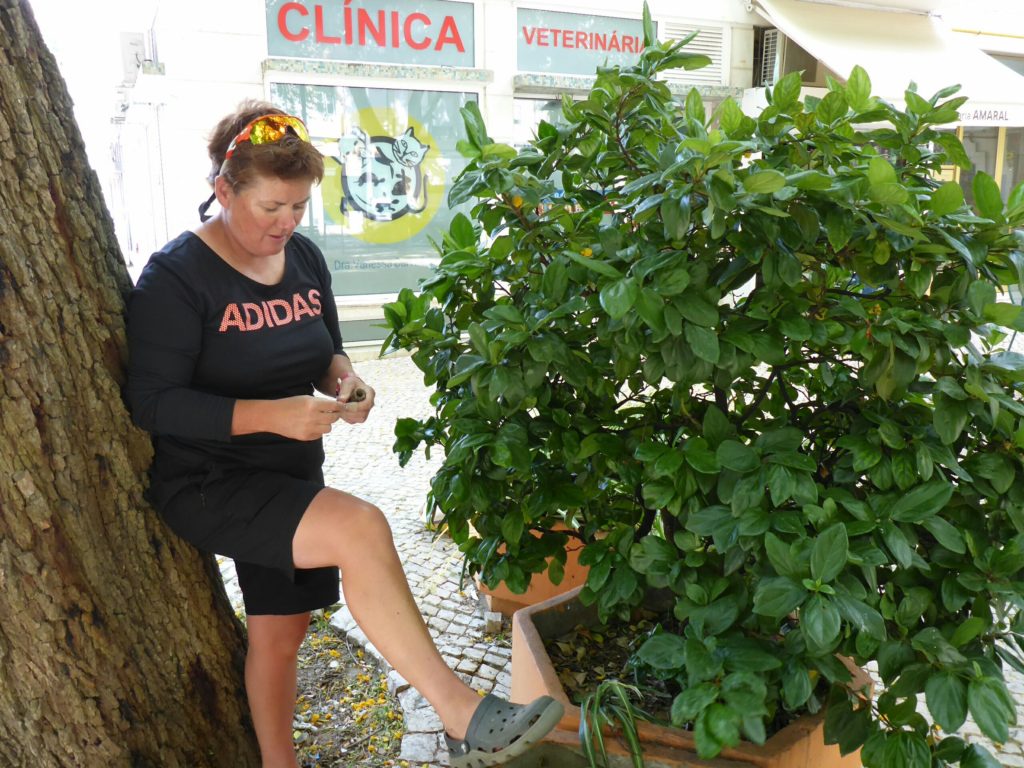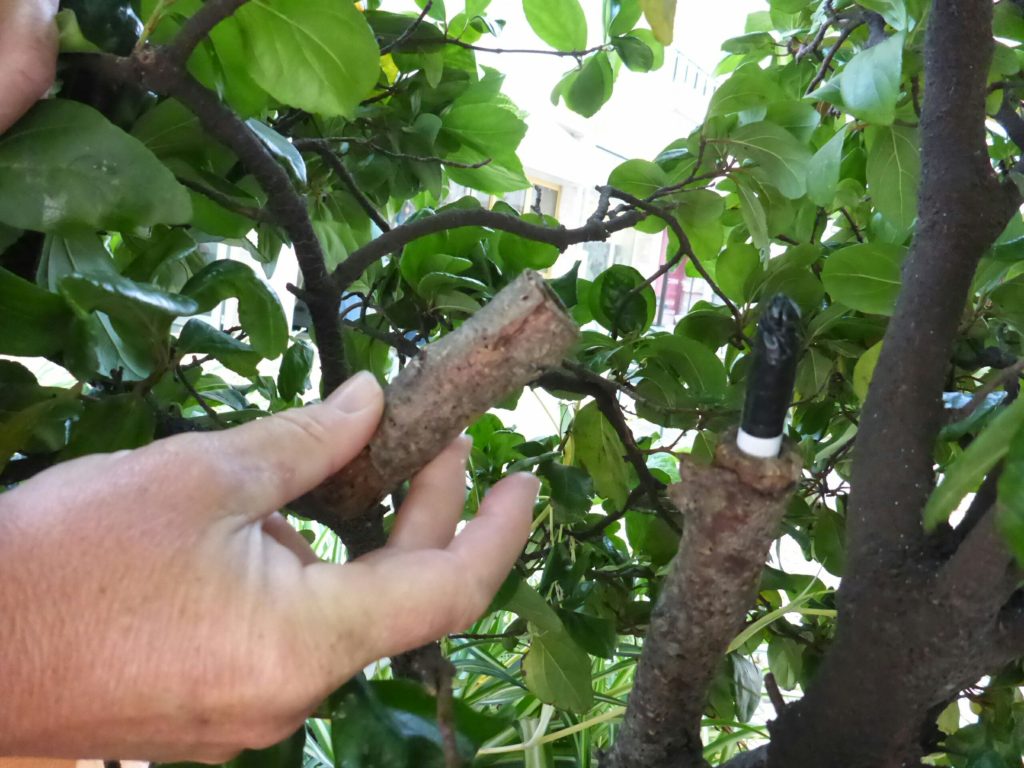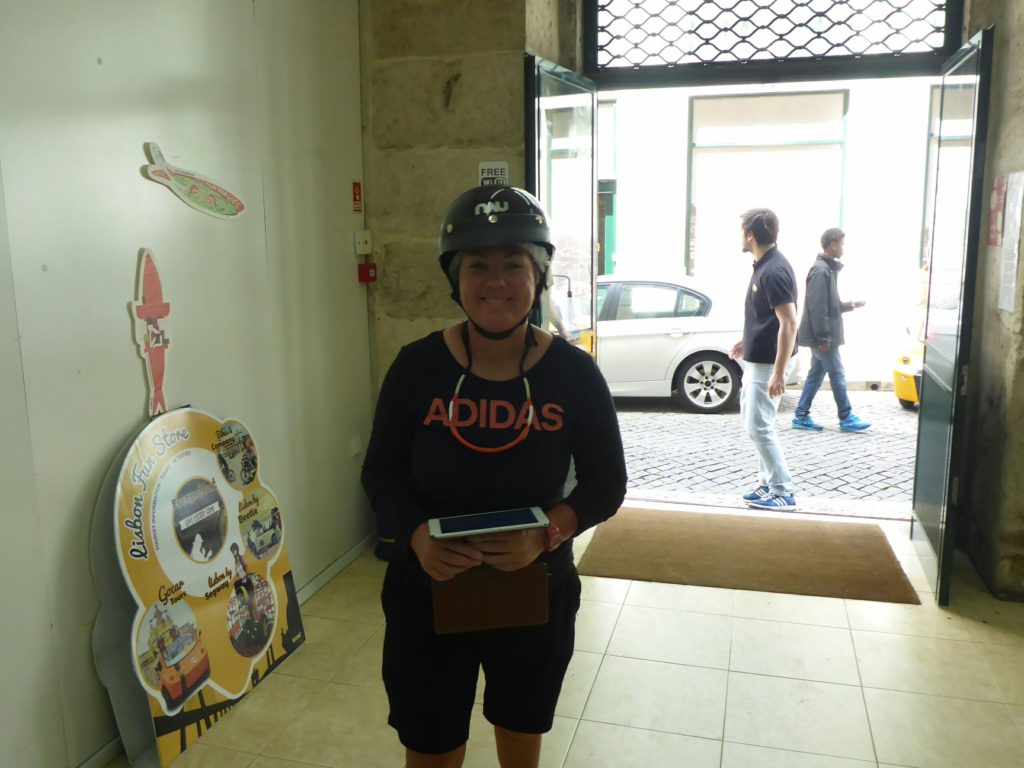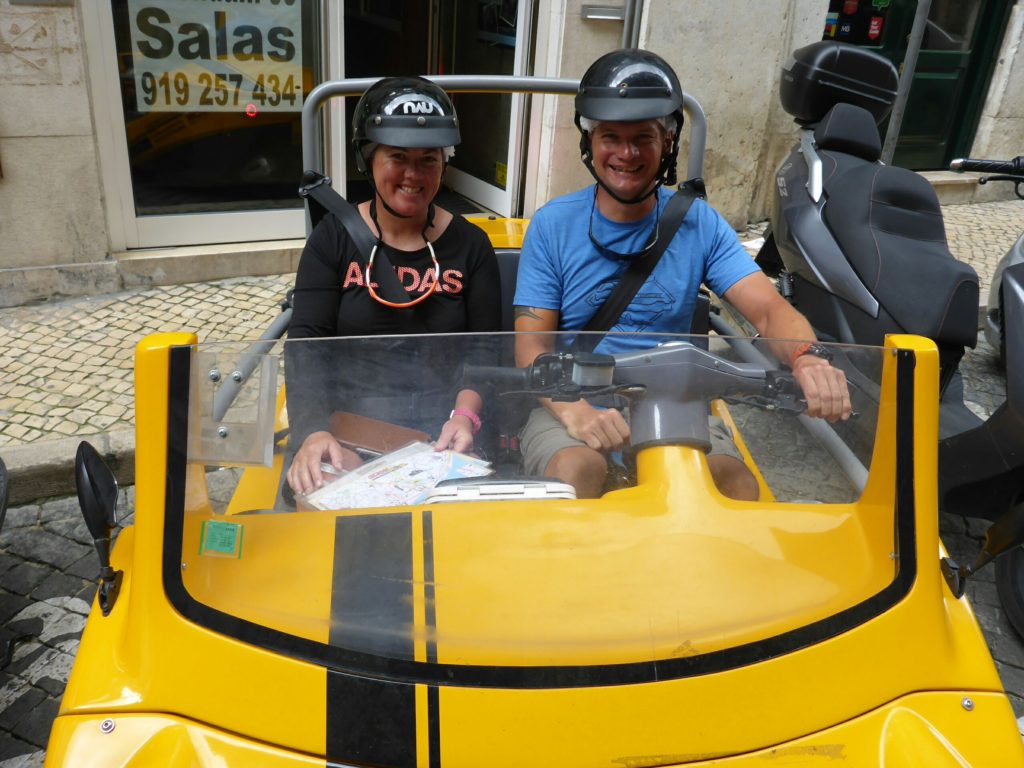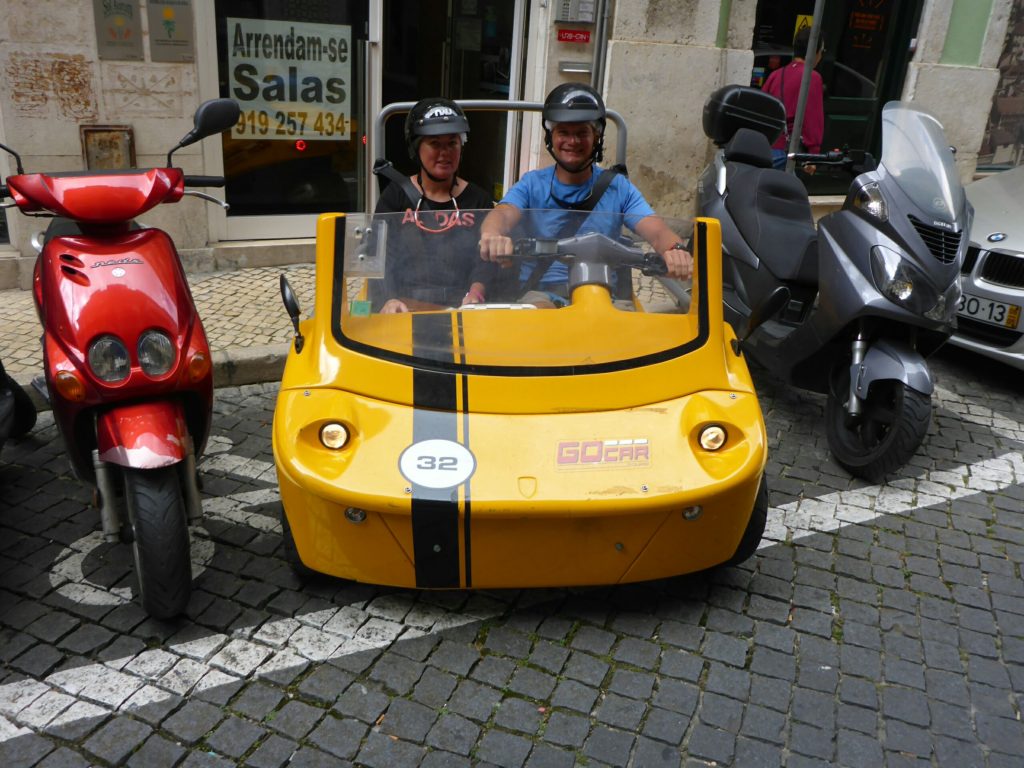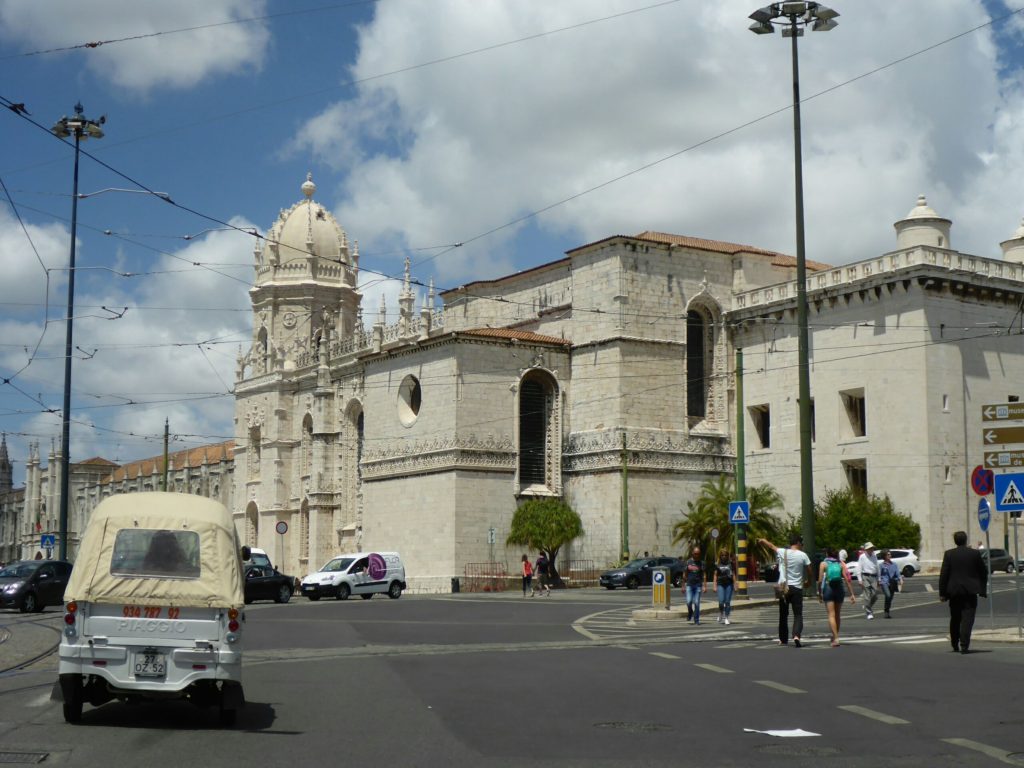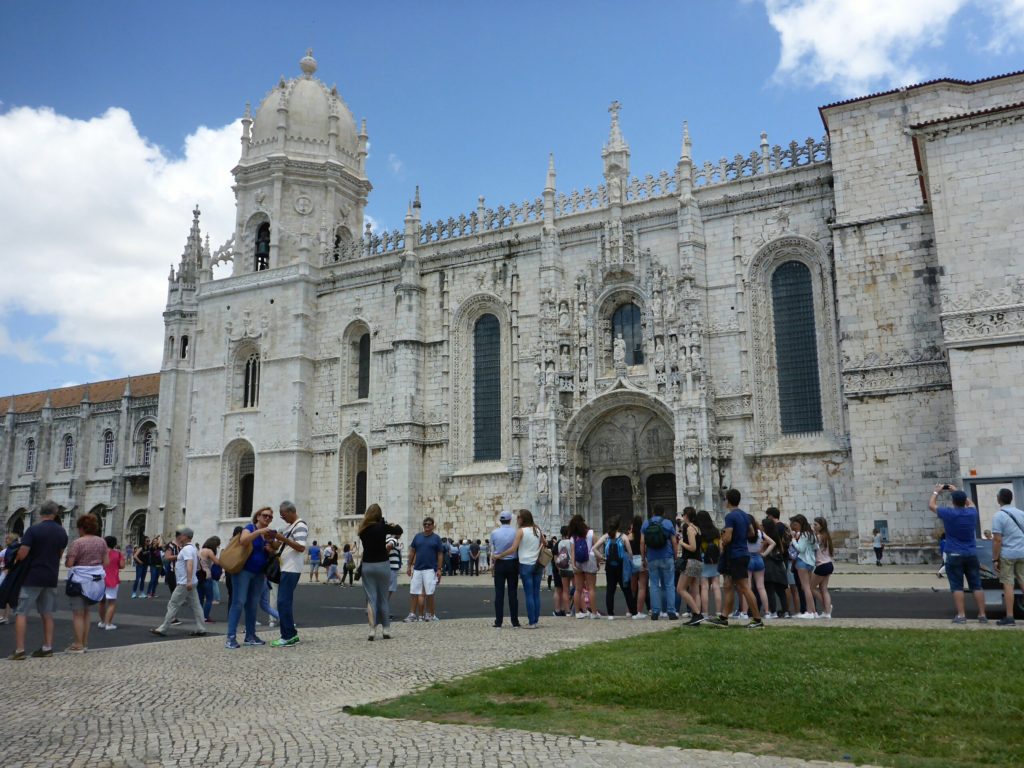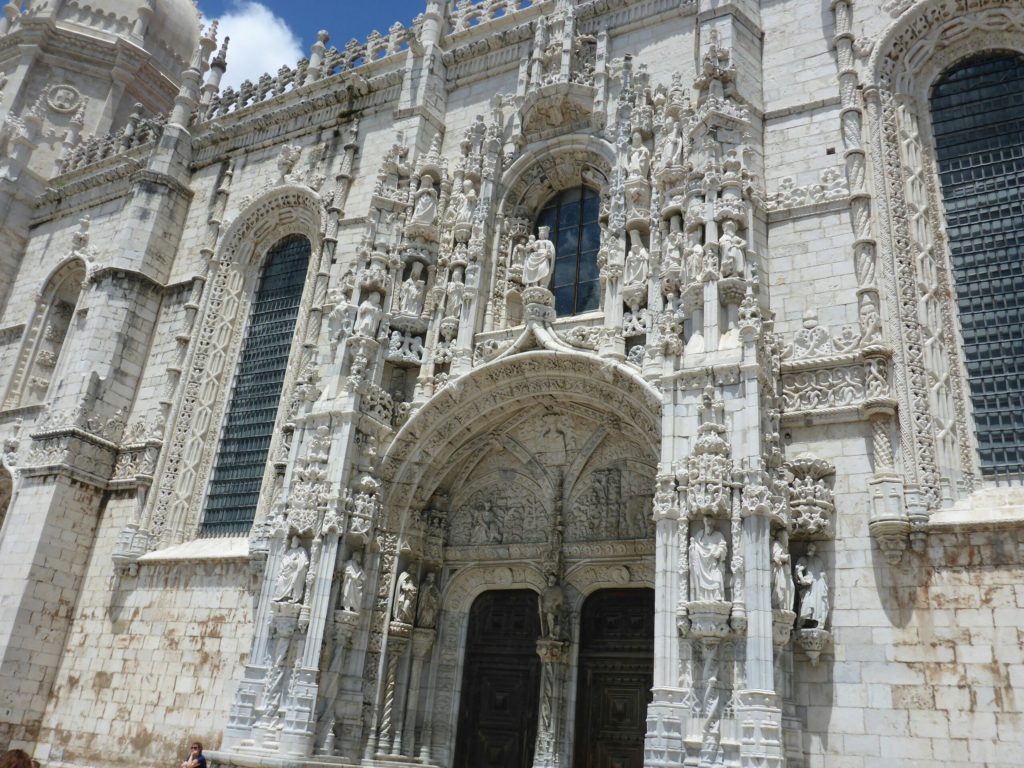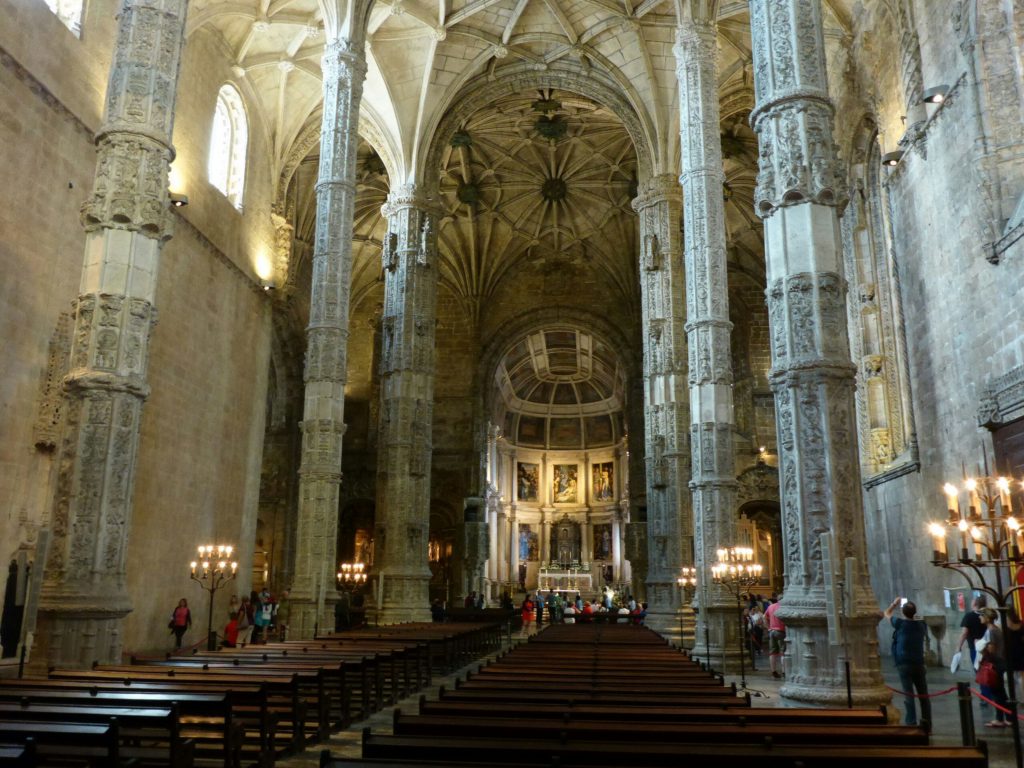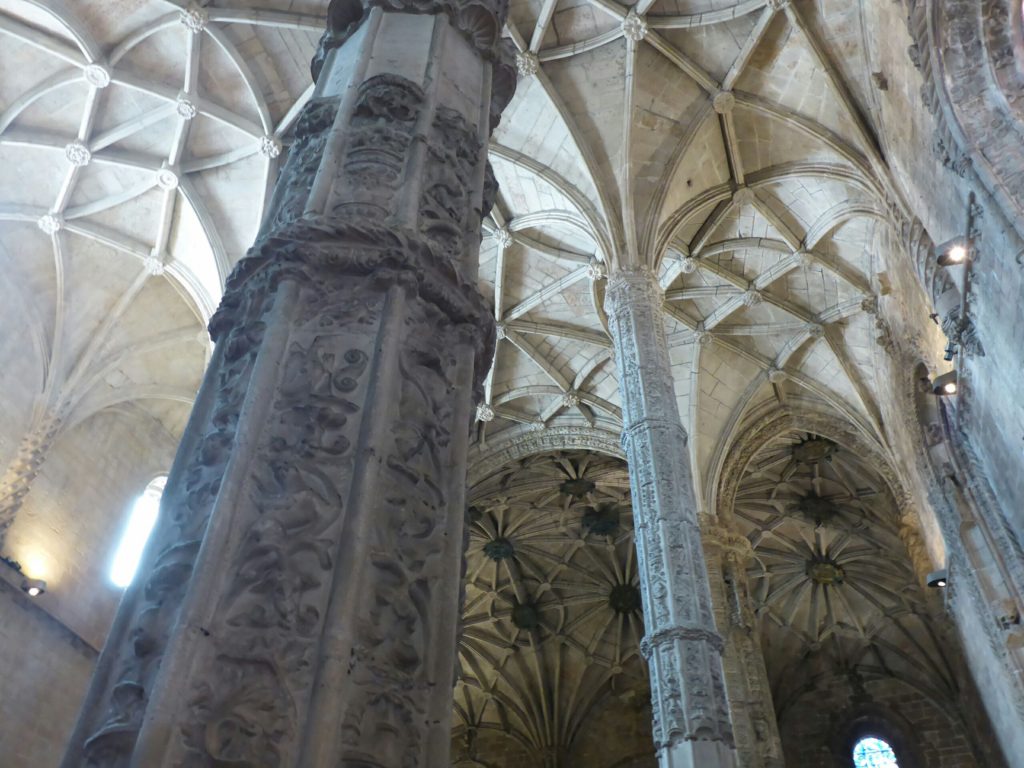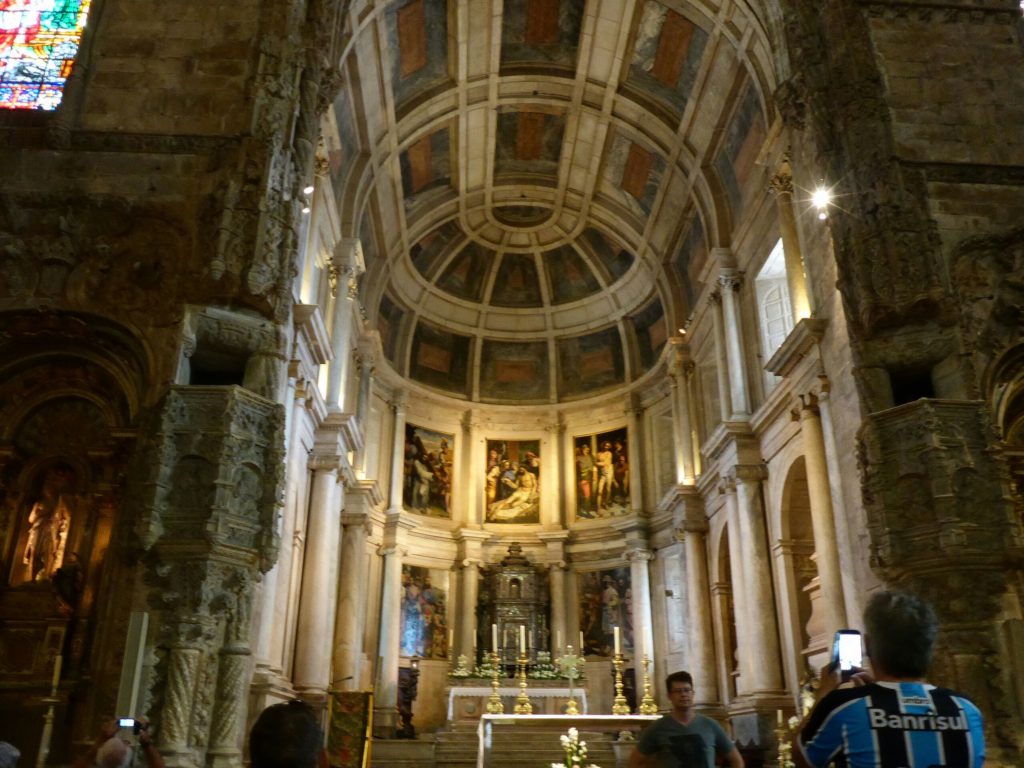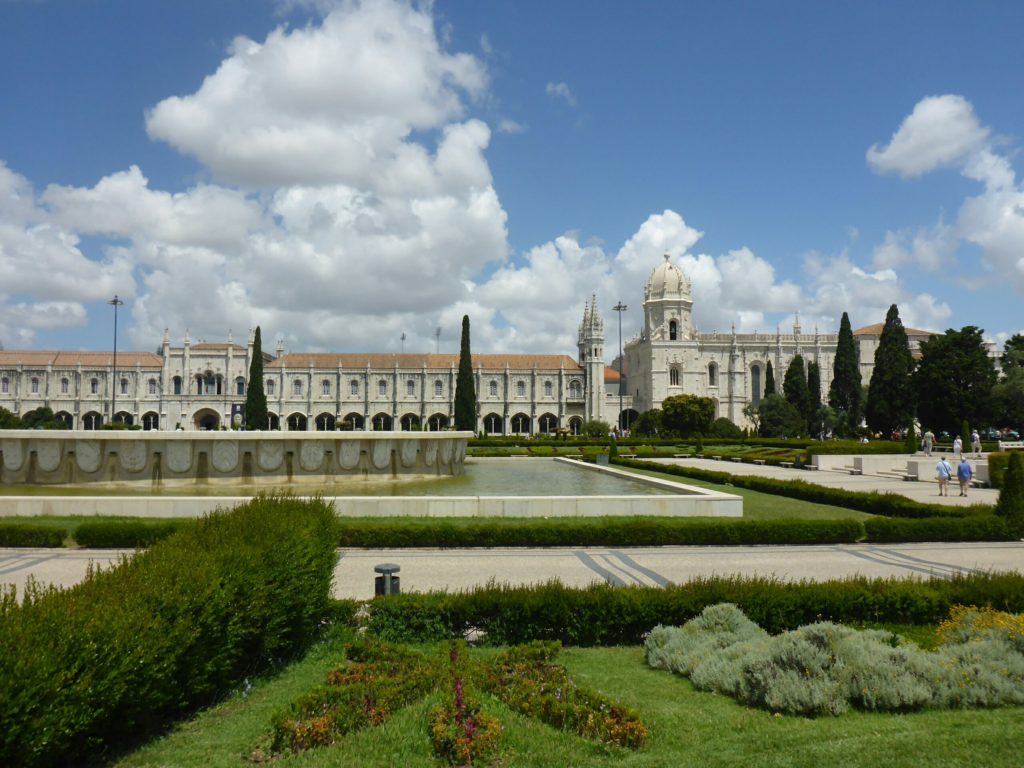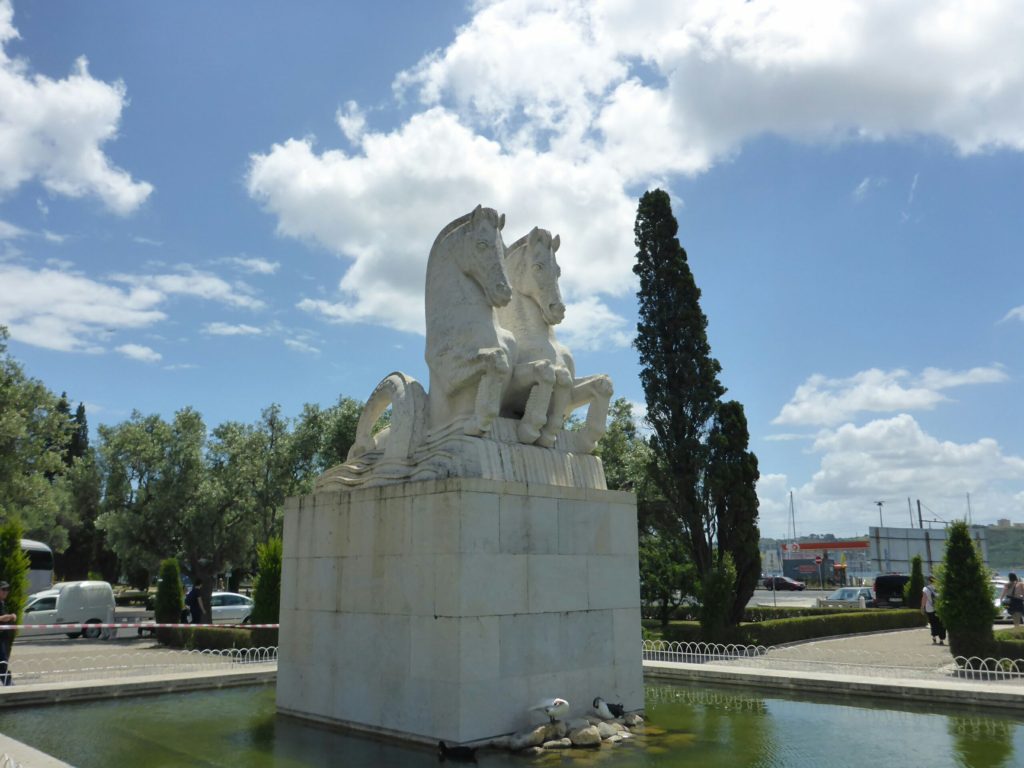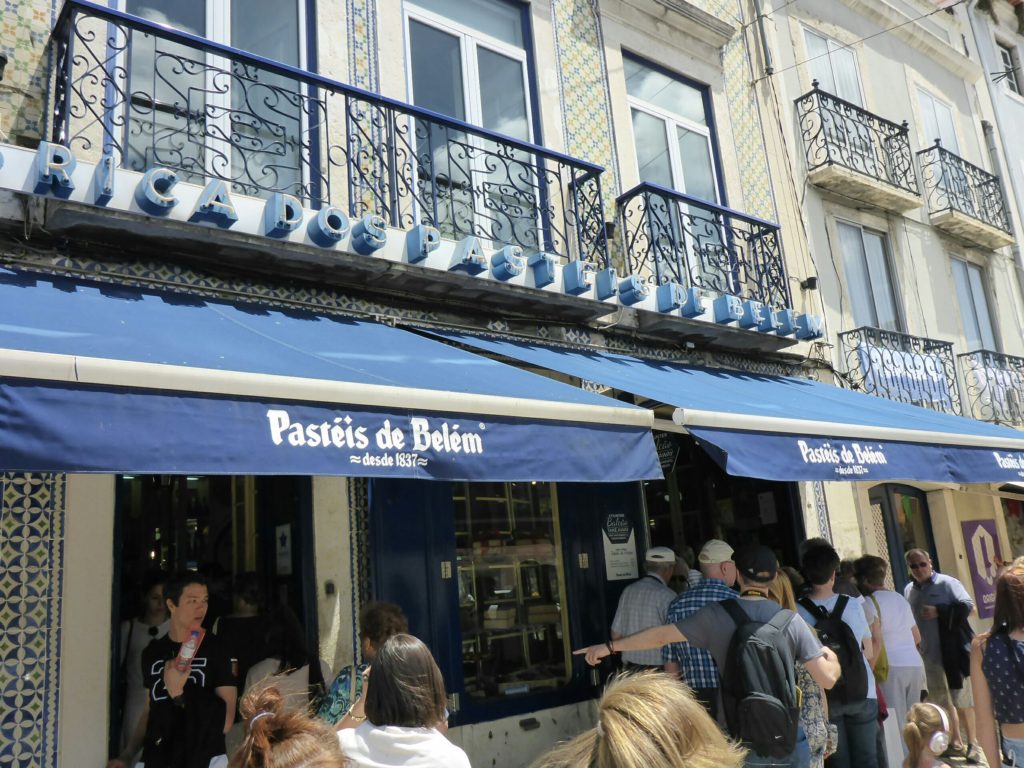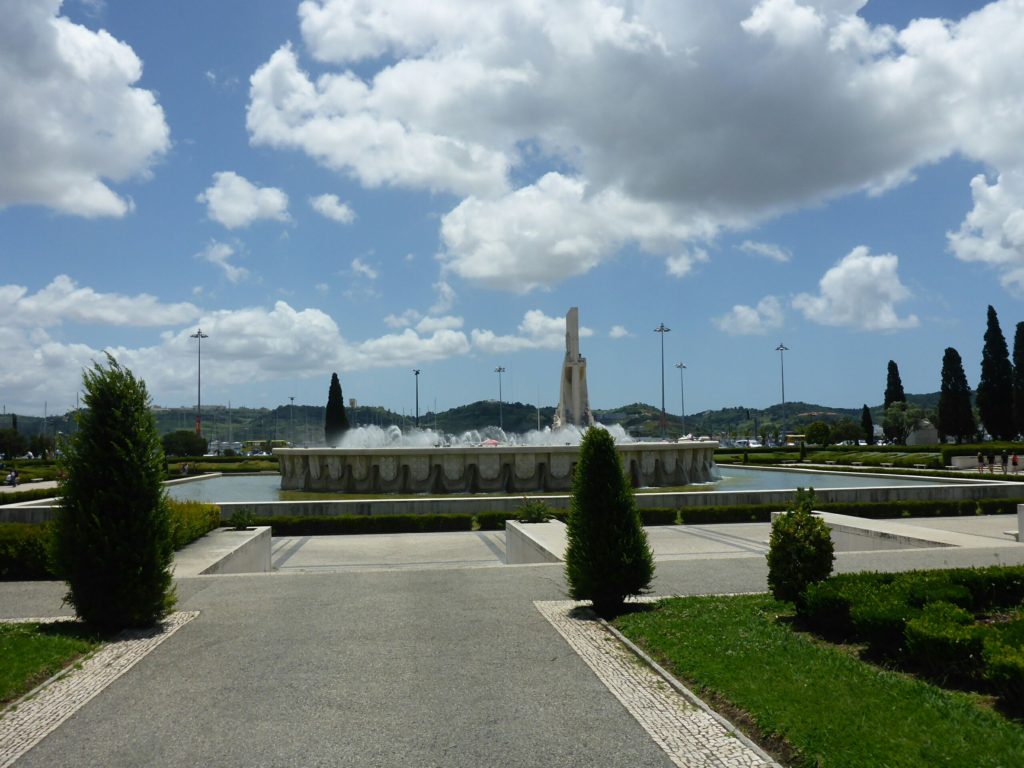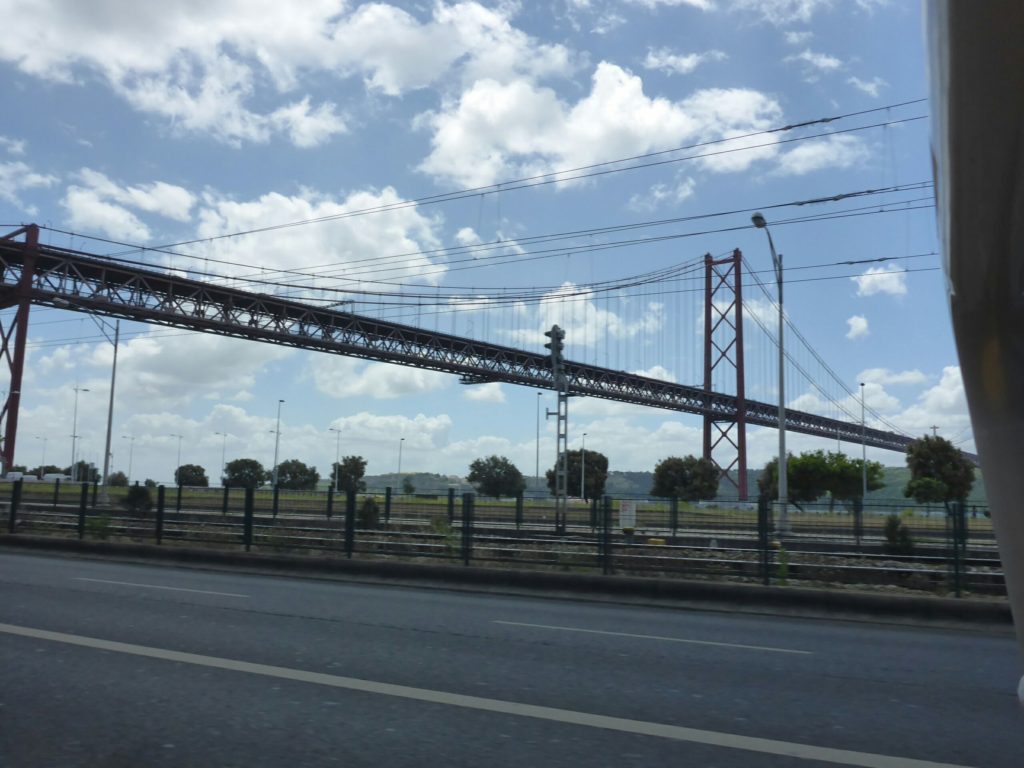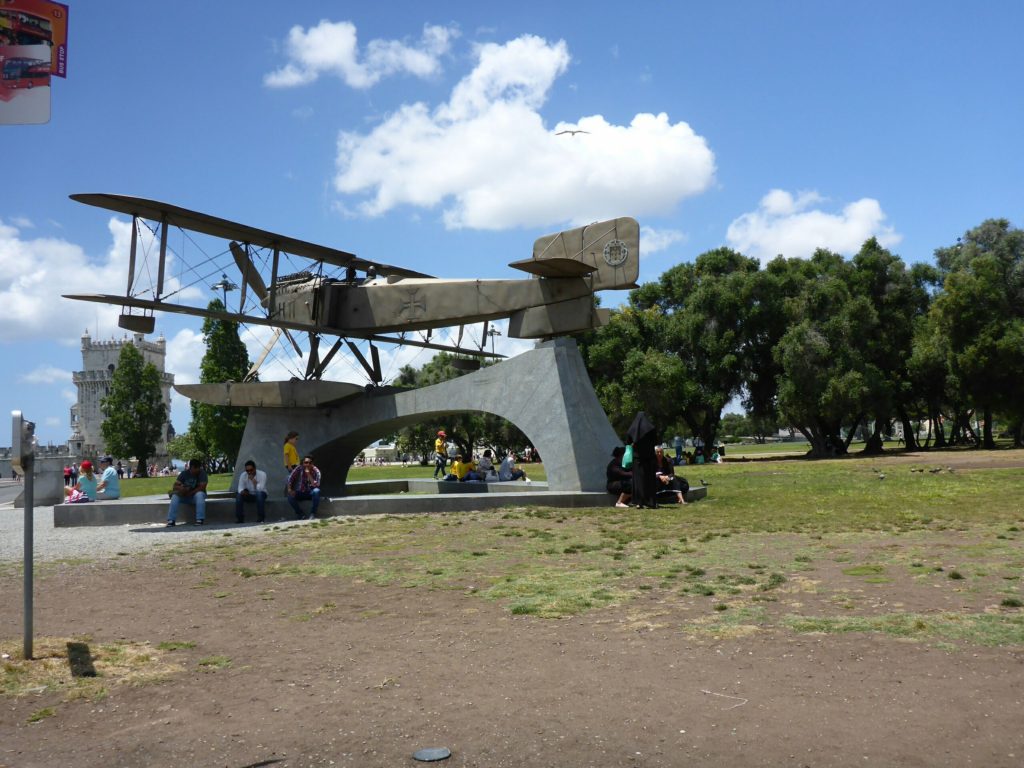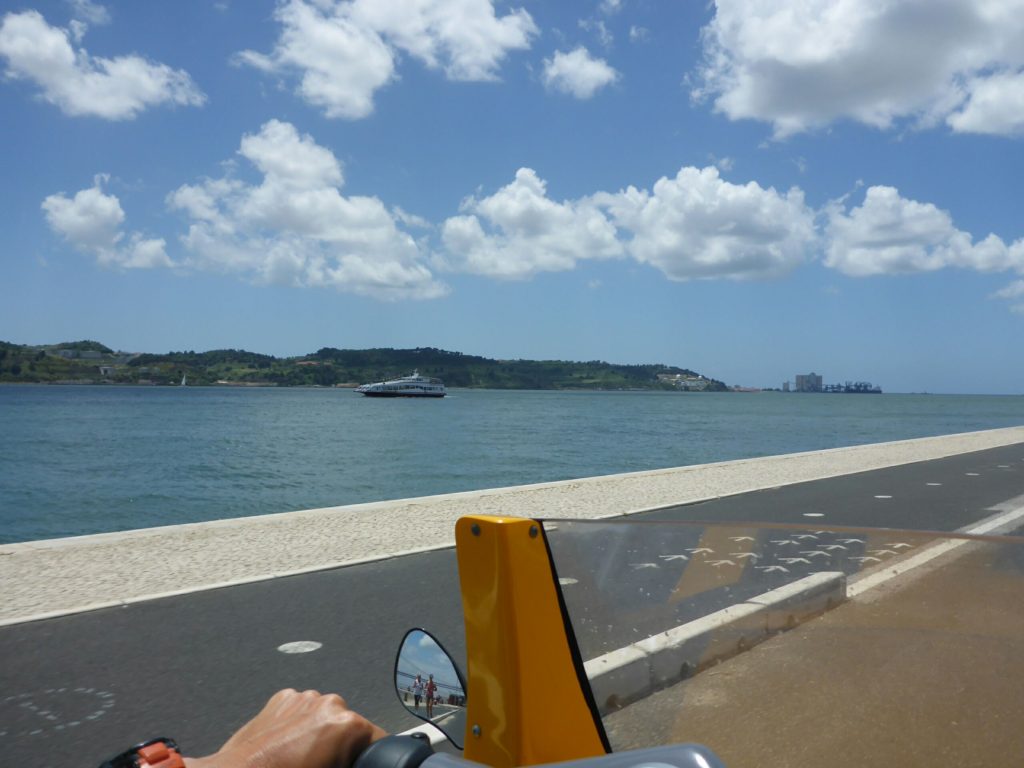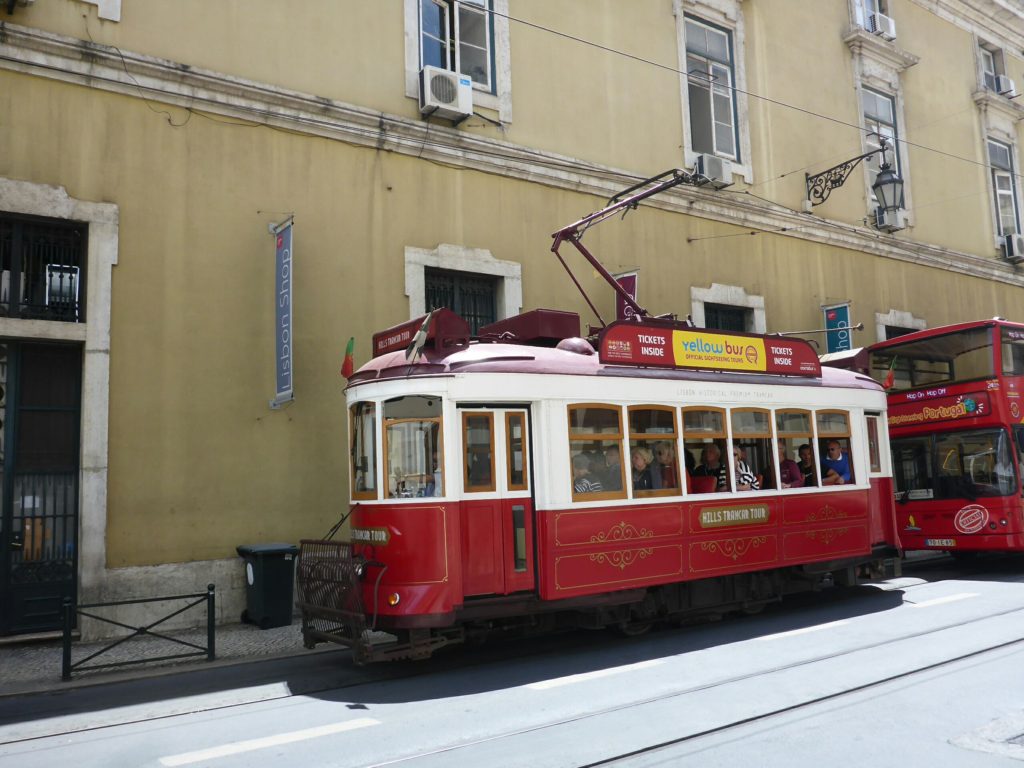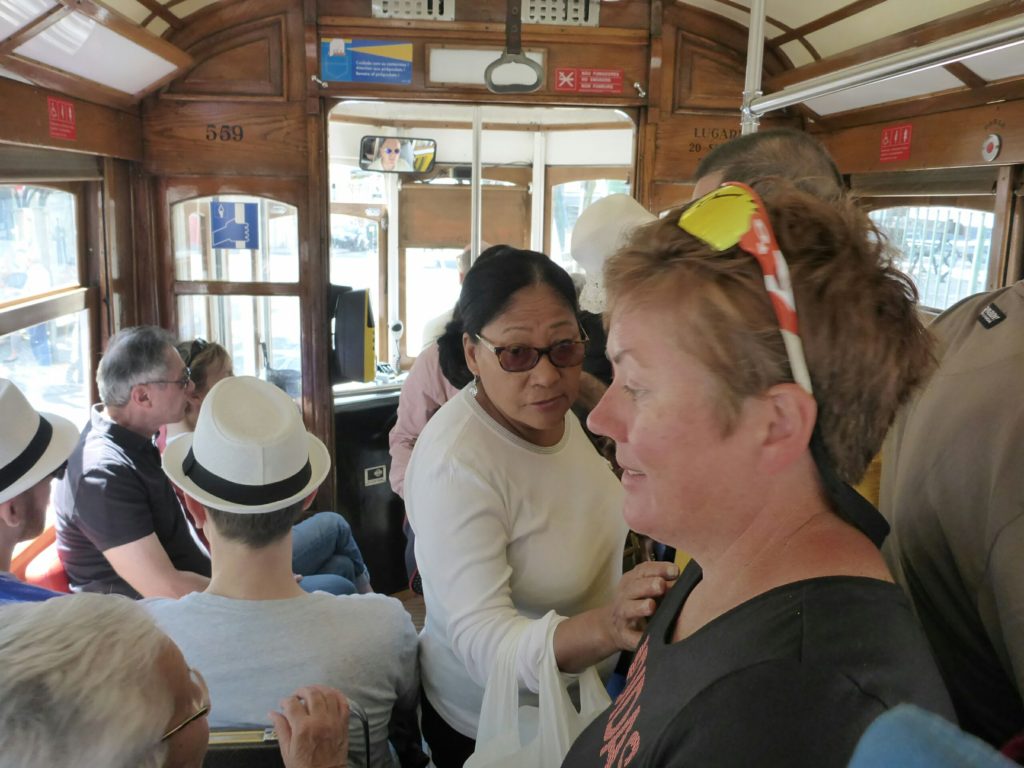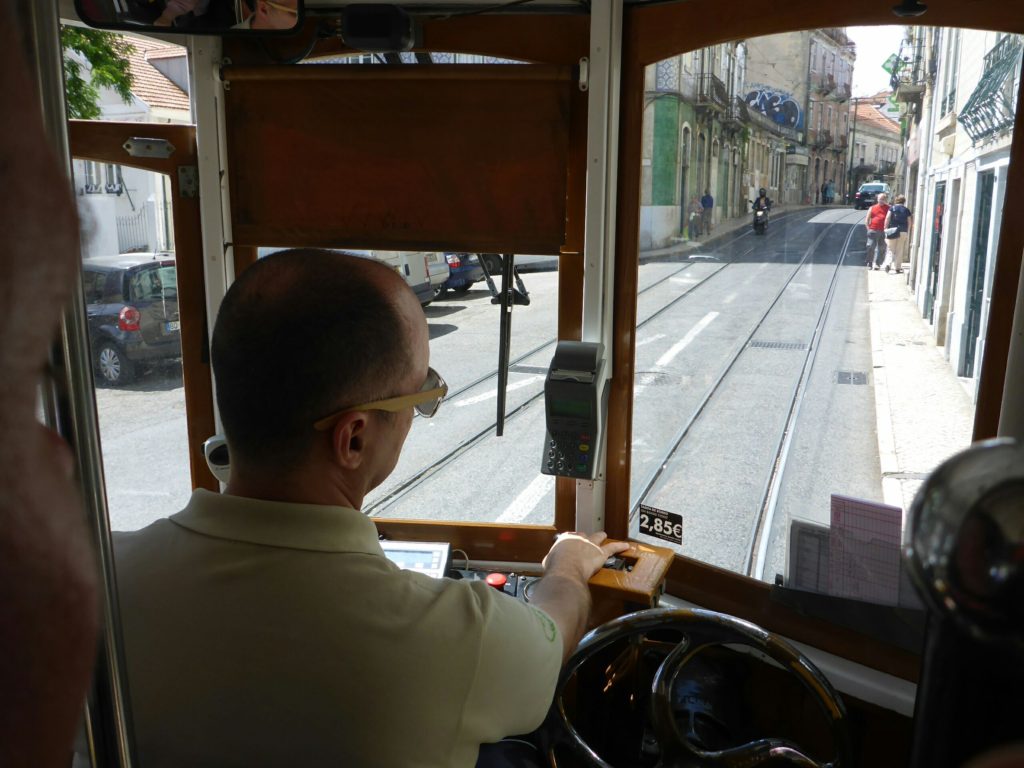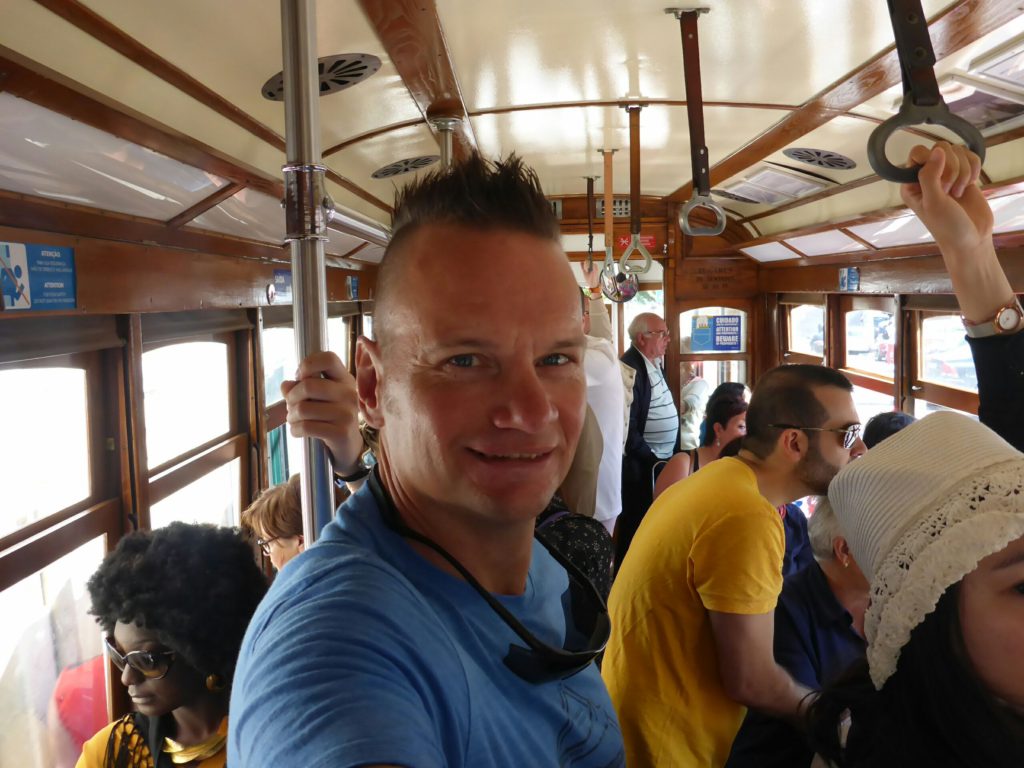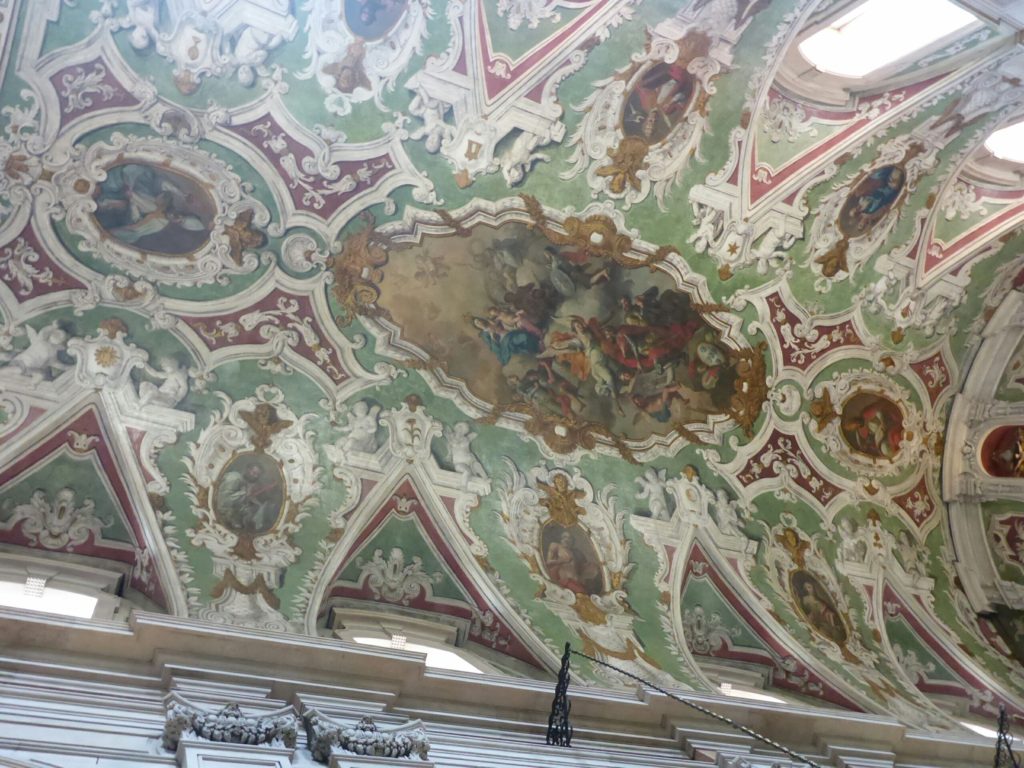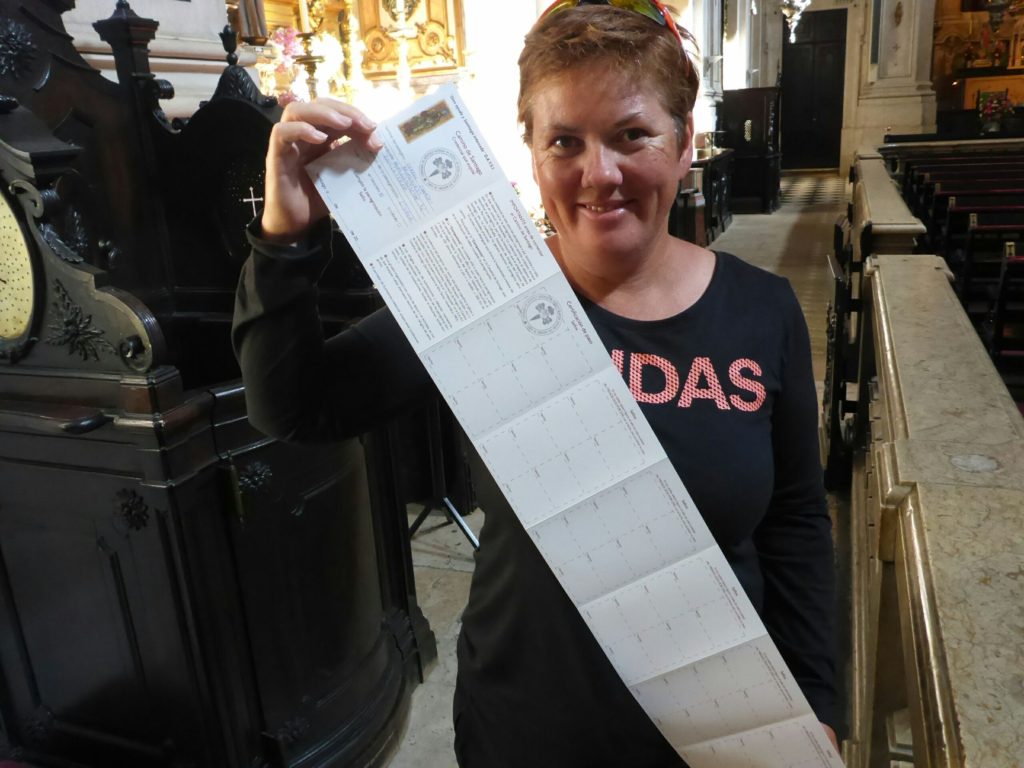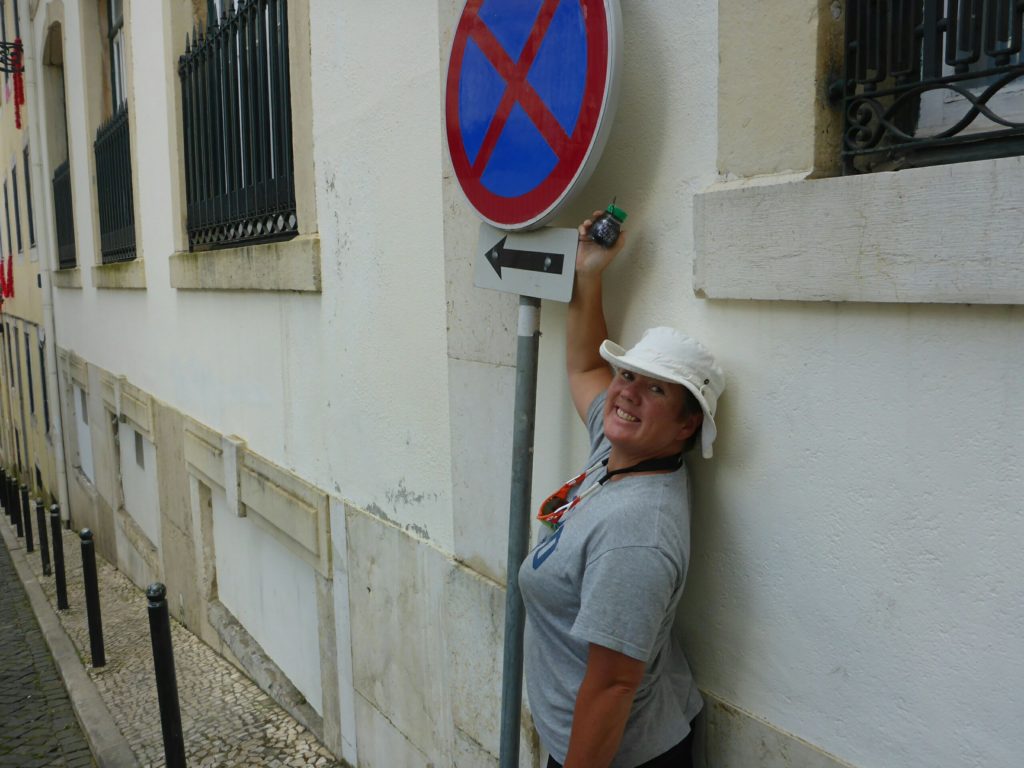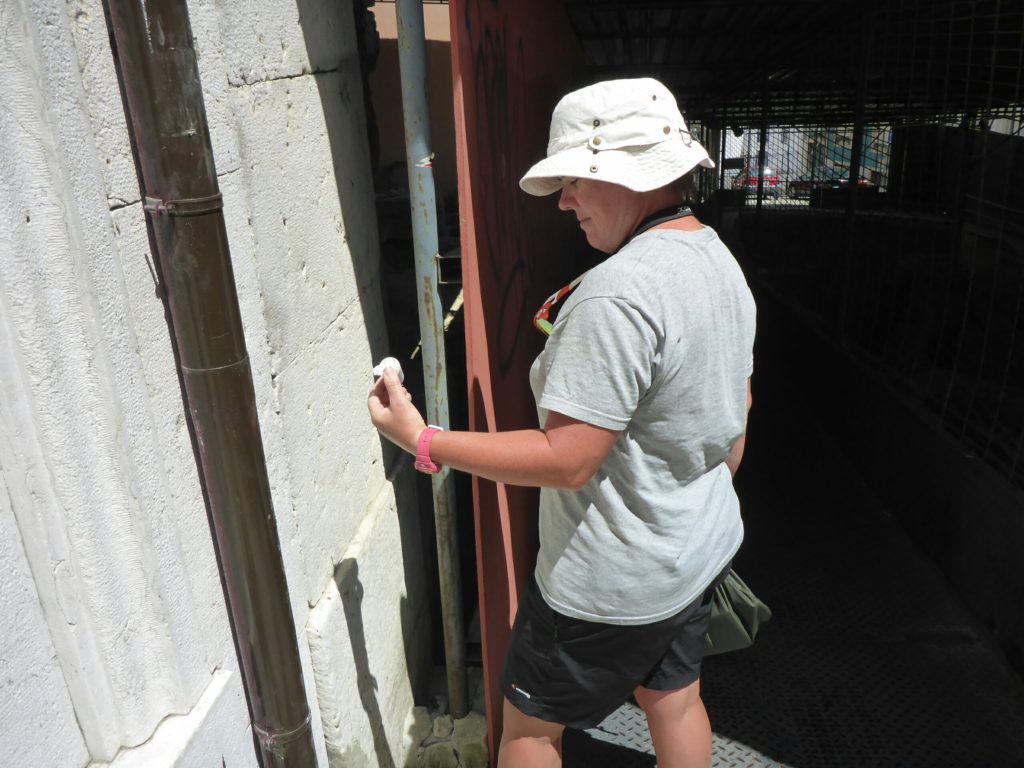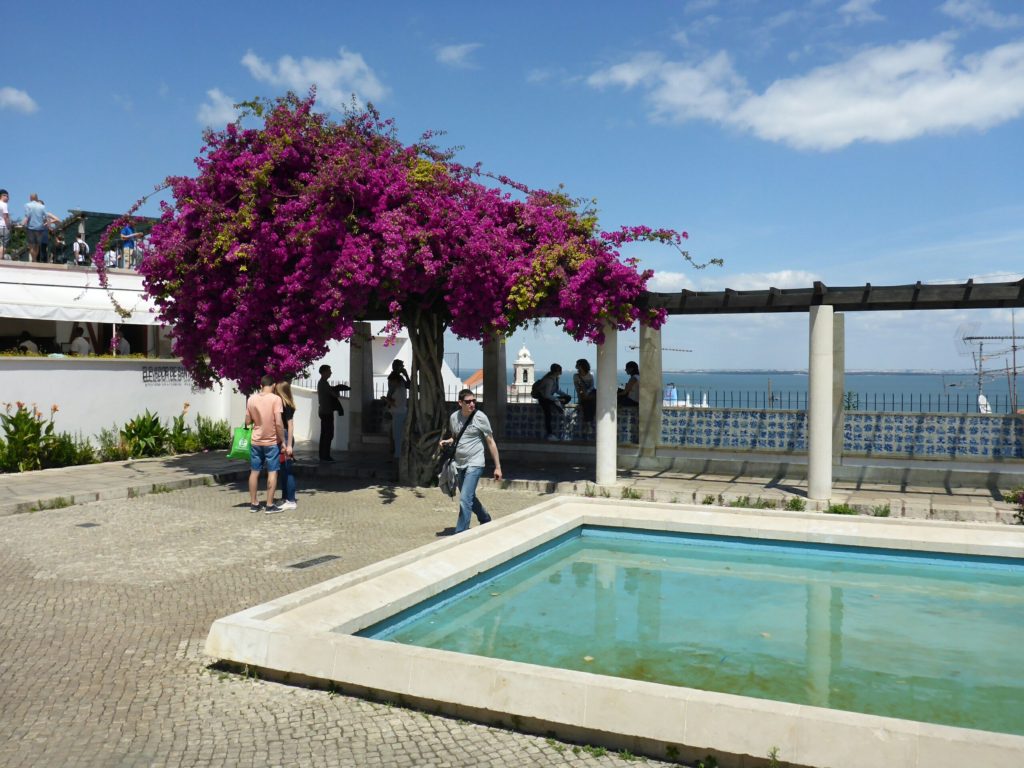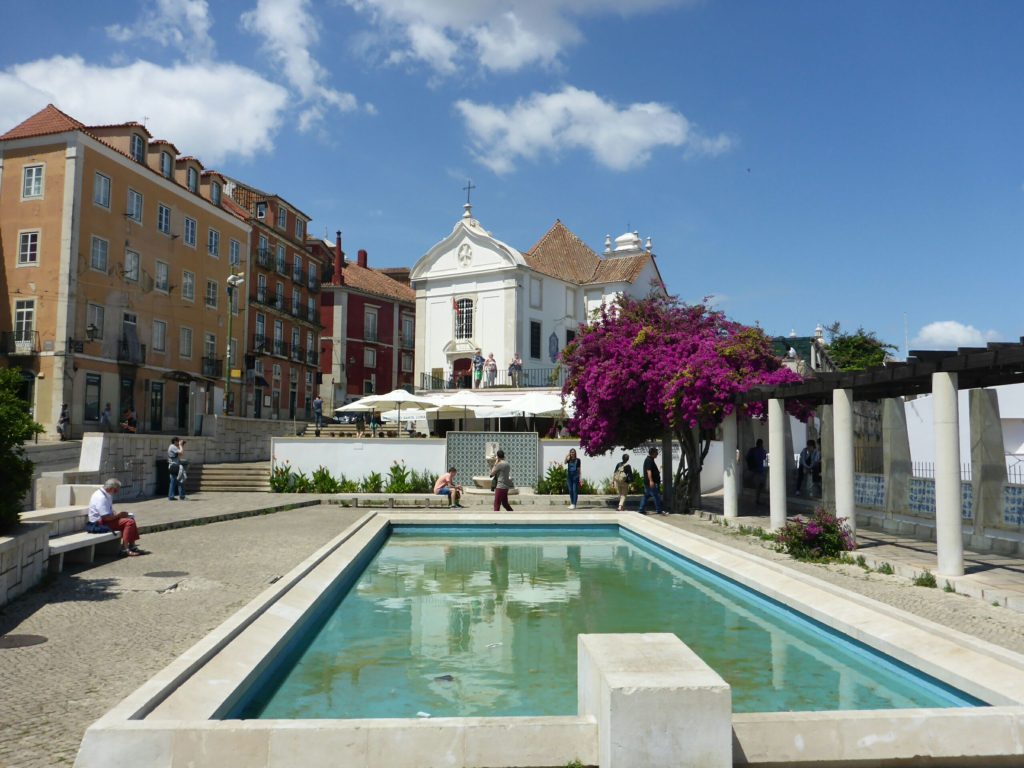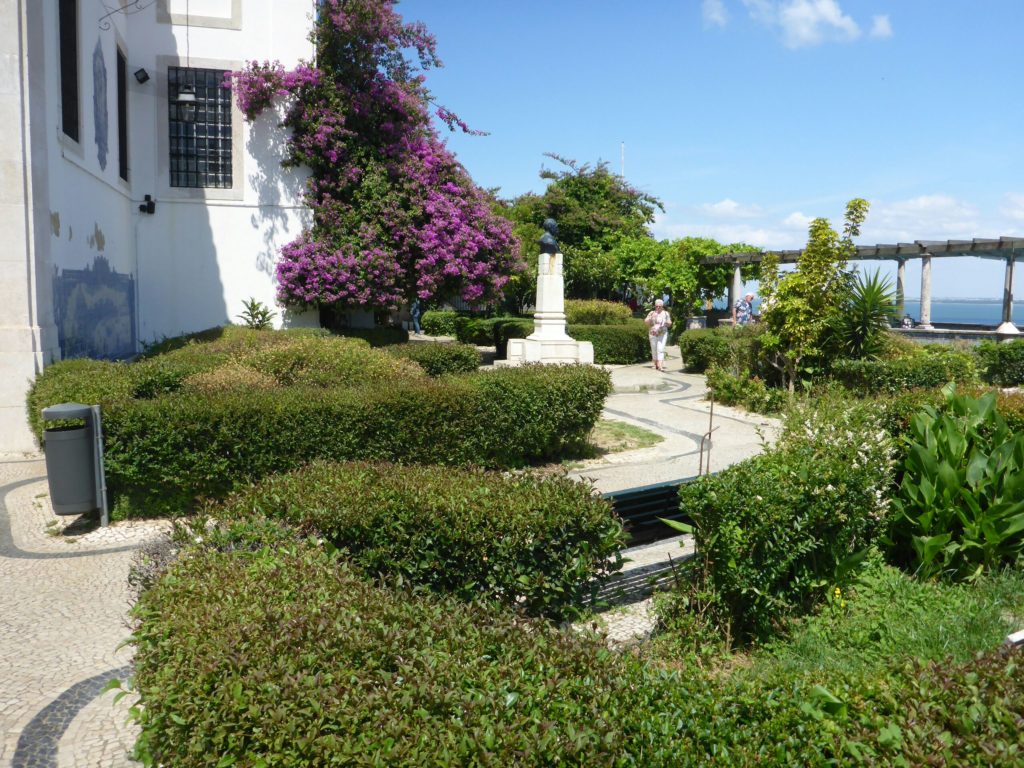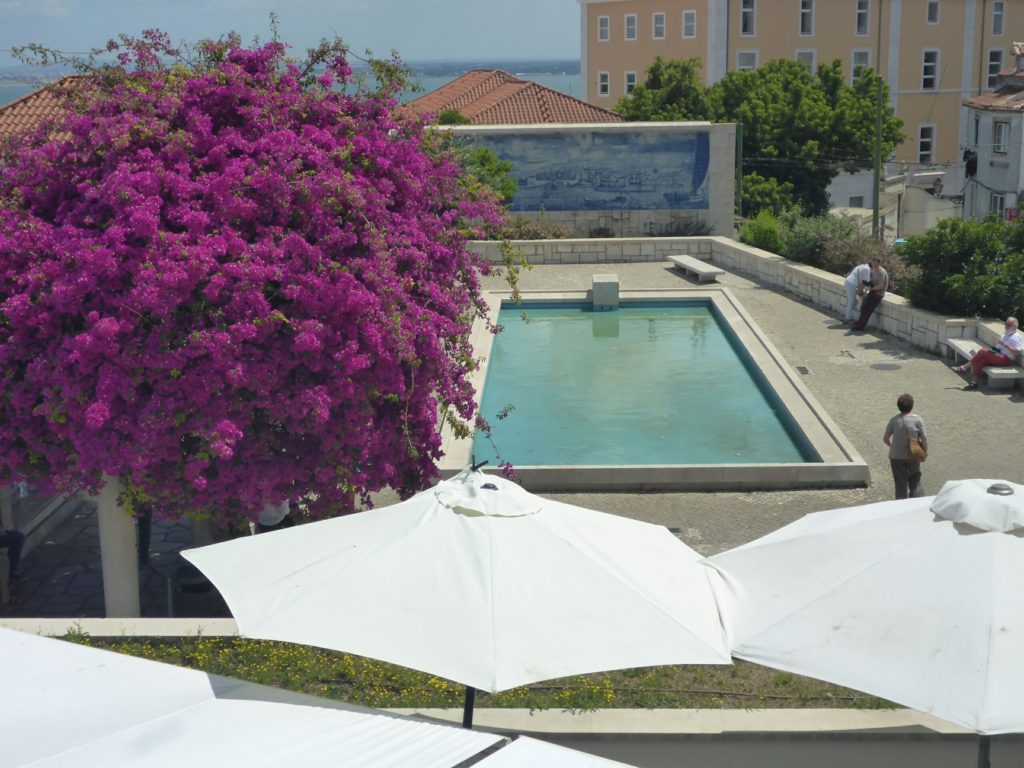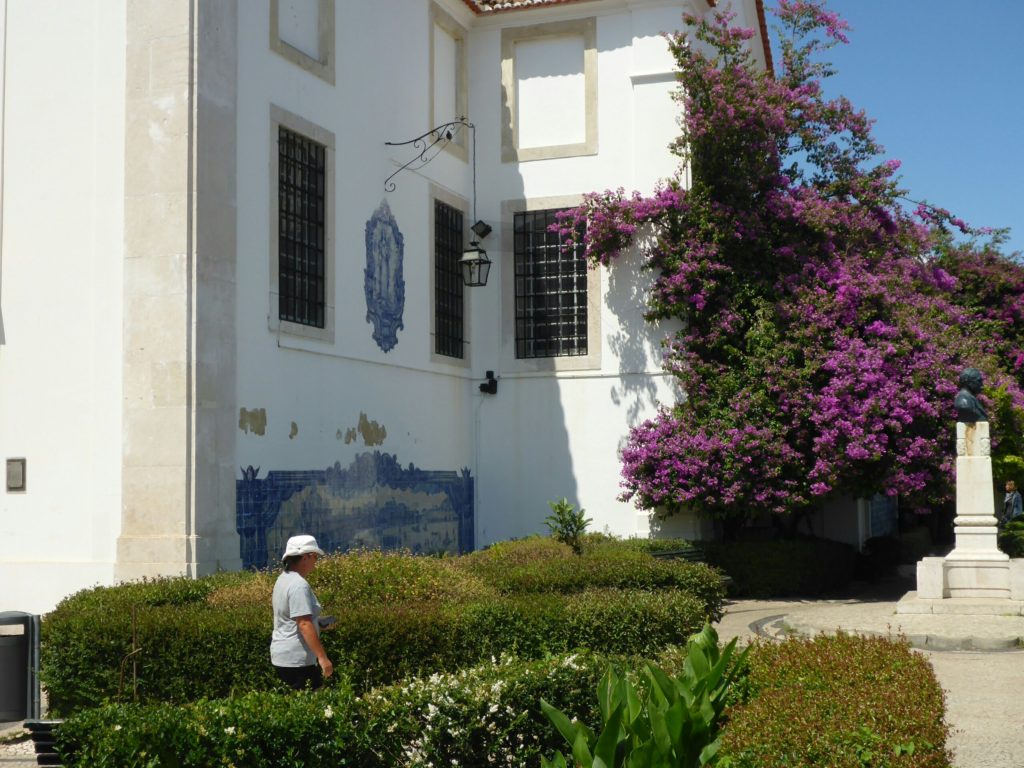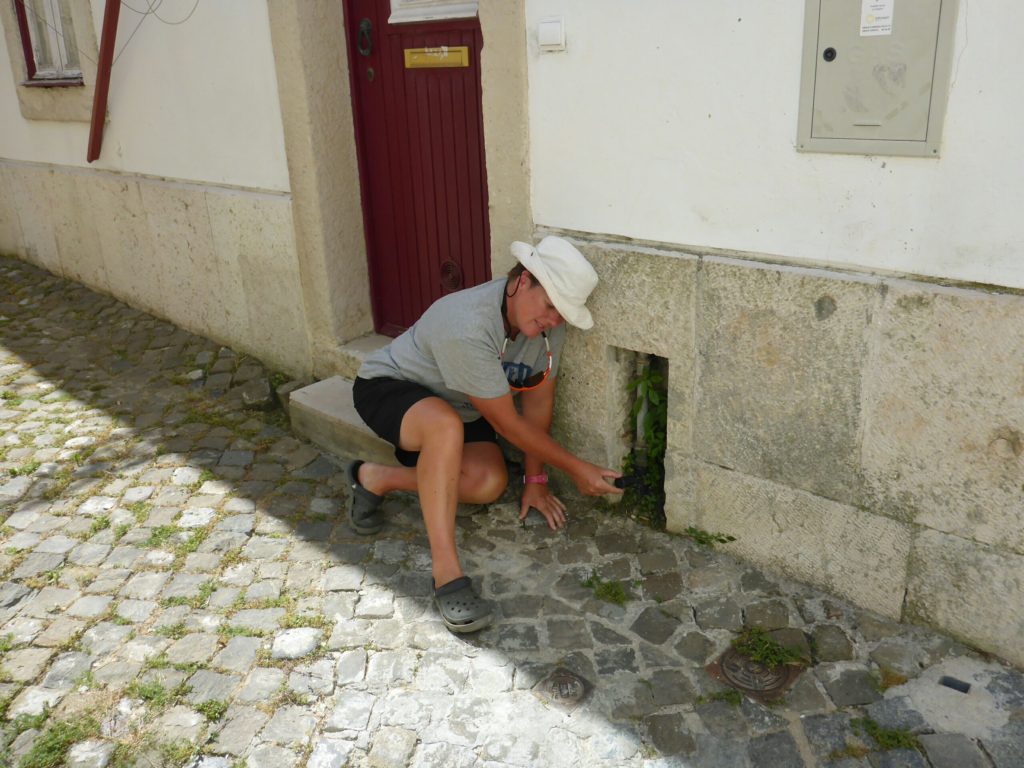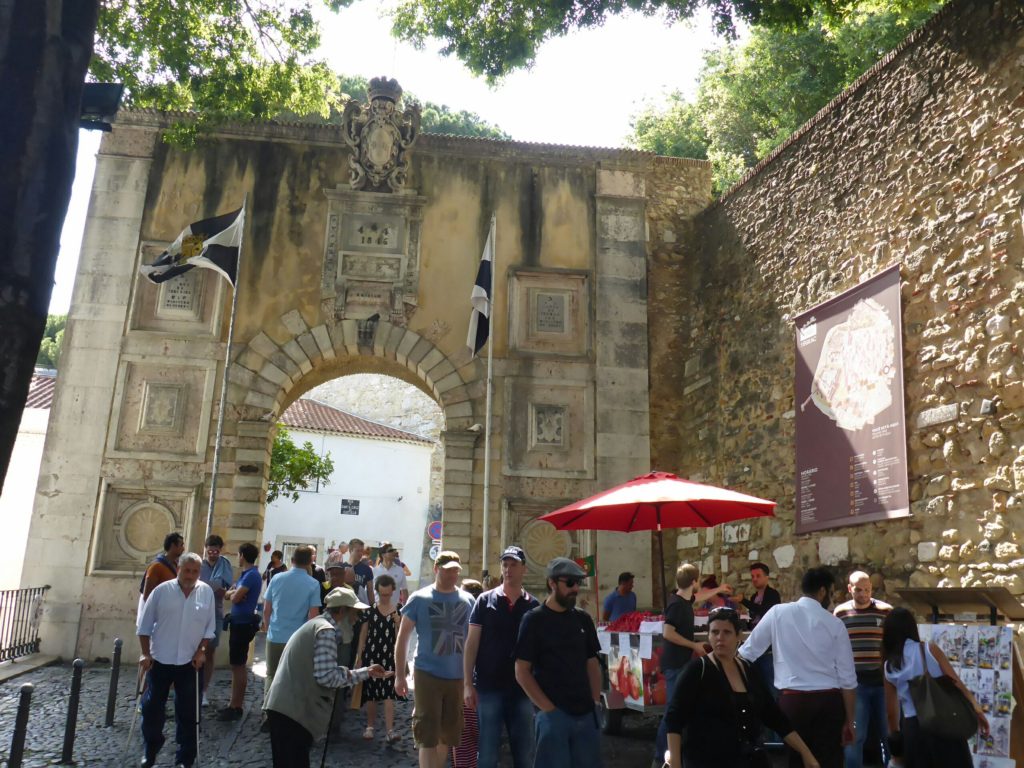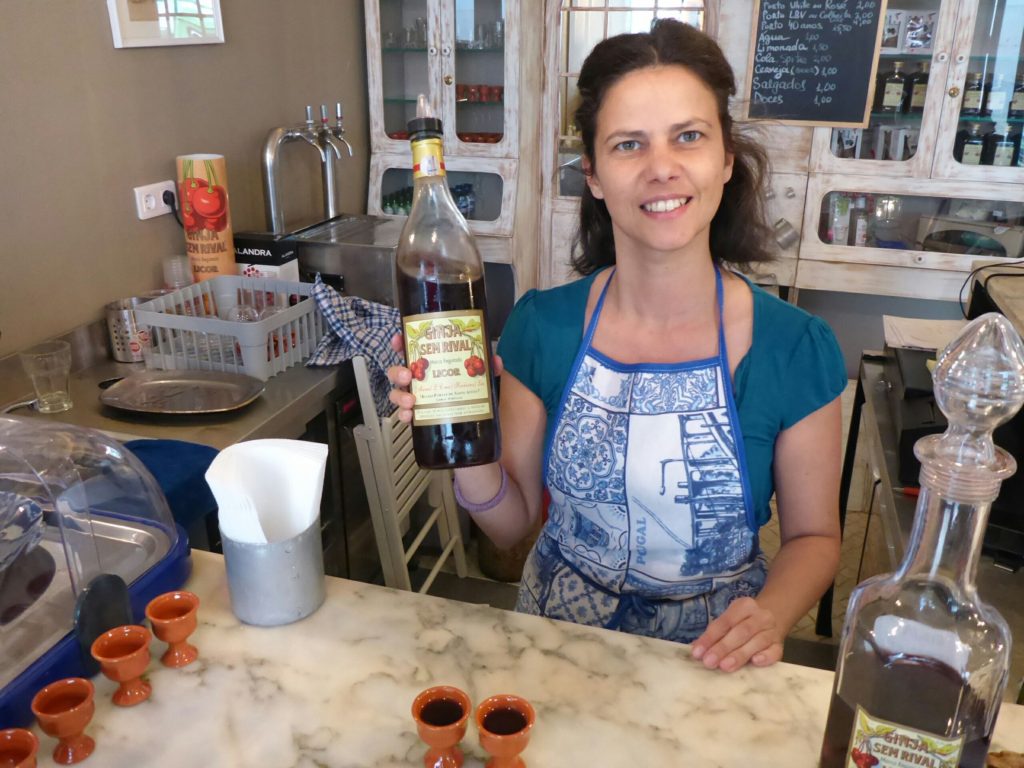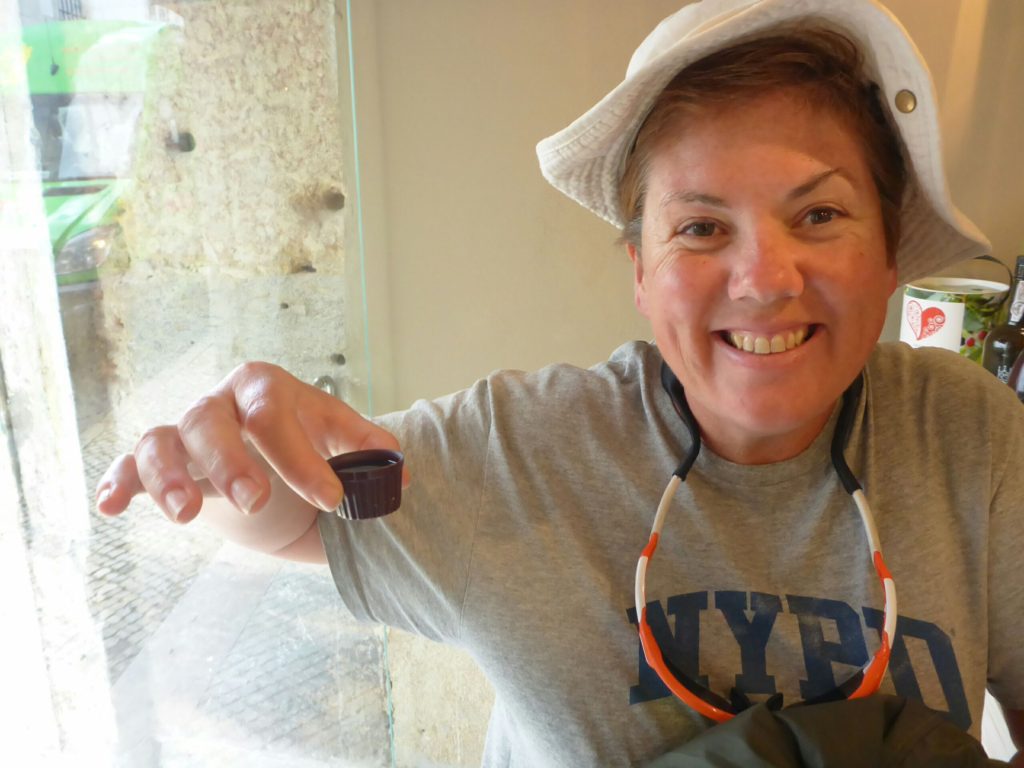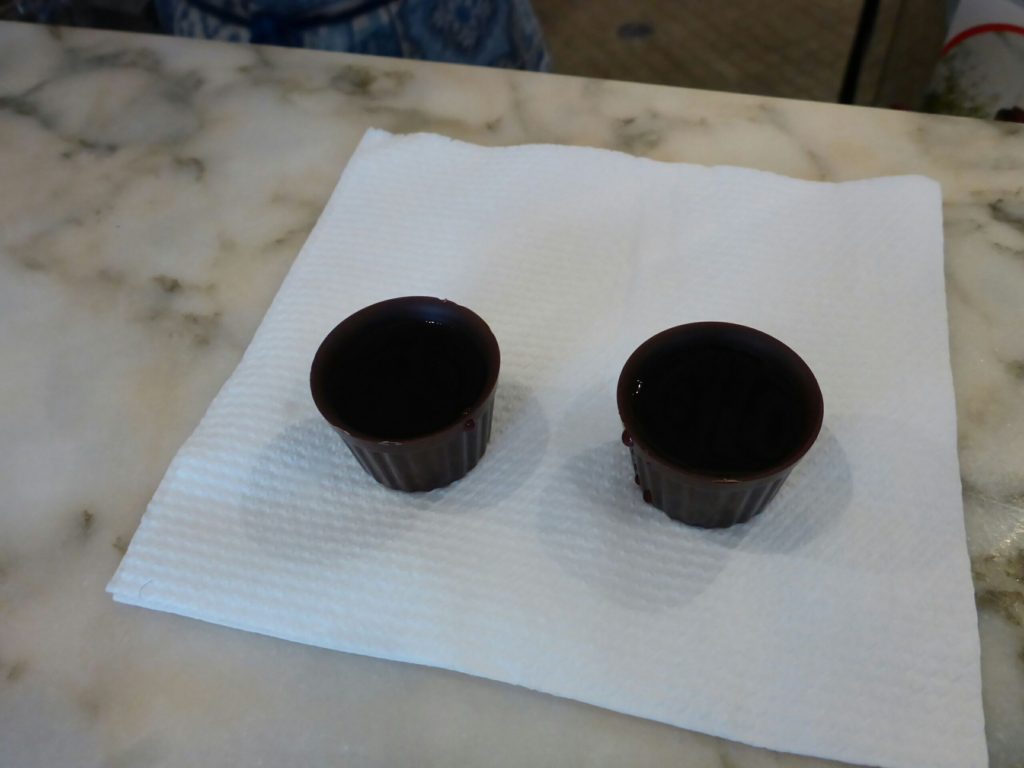Wednesday 15th June
Our first full day in Lisbon and today we plan to visit a bike shop that is listed as an Azub dealer (a Czech recumbent bike specialist) to check out their bikes and seats. So off we cycle. A truly shit decision. We soon realise that it’s very hilly and the roads are horrendous but we persevere and en route visit the Eduardo VII Park, Lisbon’s largest central park. The park is named after Britain’s Edward VII who visited the city in 1903 to reaffirm the Anglo-Portuguese alliance, this is the largest park in central Lisbon. With neatly clipped box hedging flanked by mosaic patterned walkways, it stretches uphill from Marquês de Pombal Square to a belvedere at the top with fine views. The views are stunning from here.






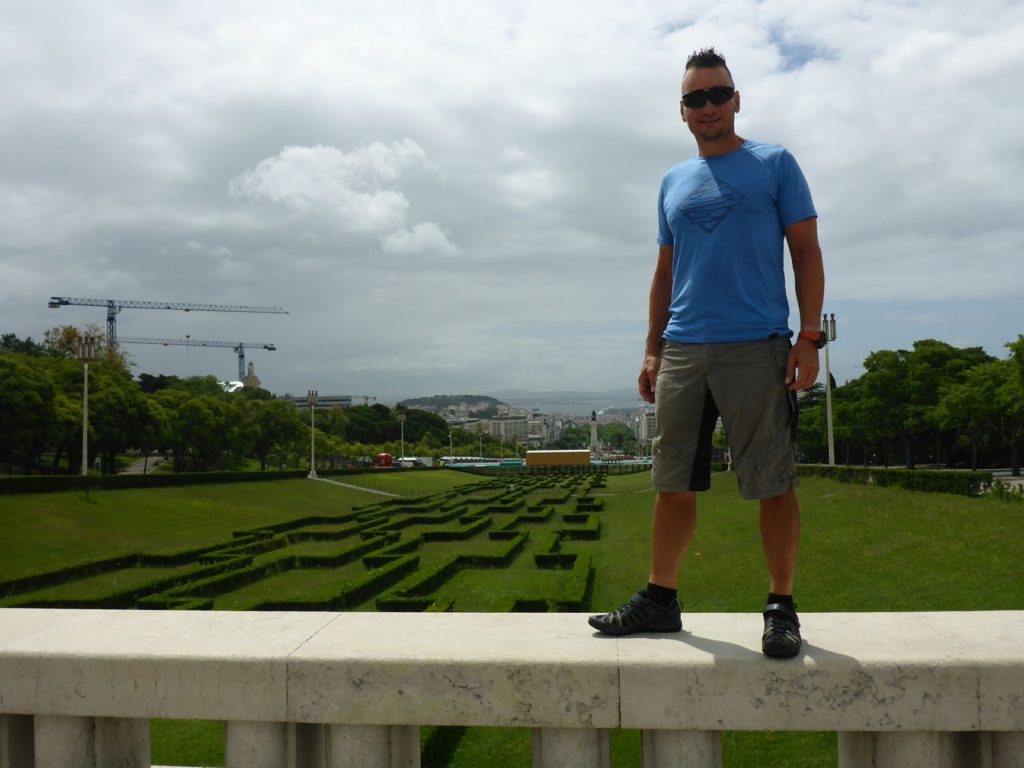
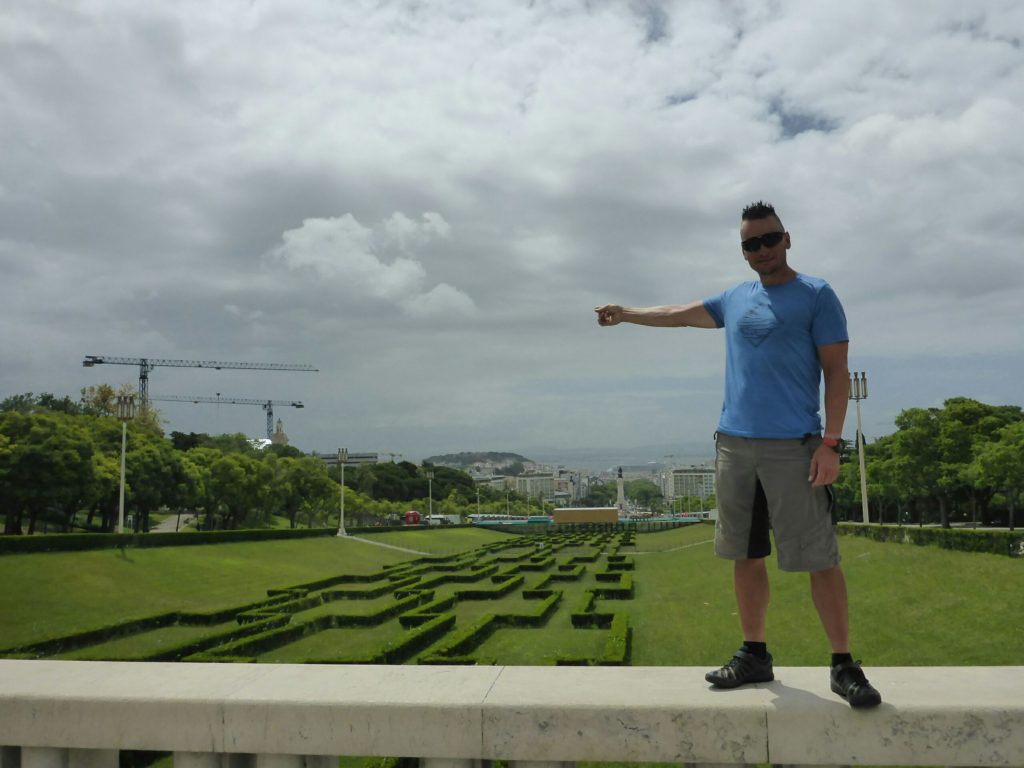



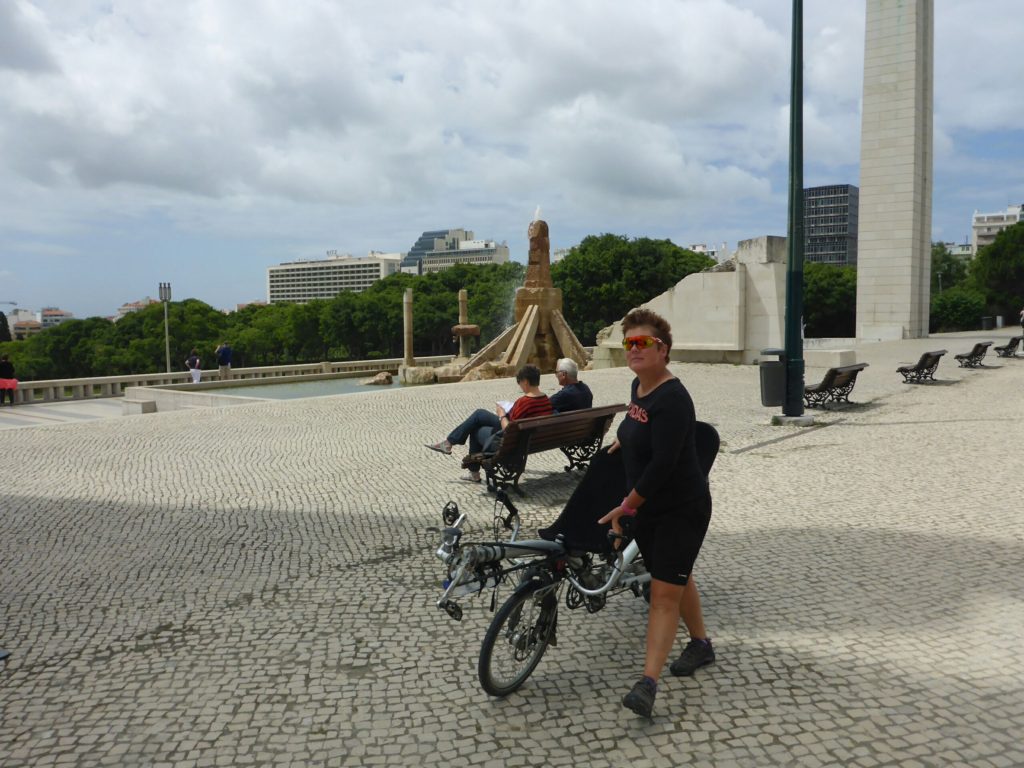

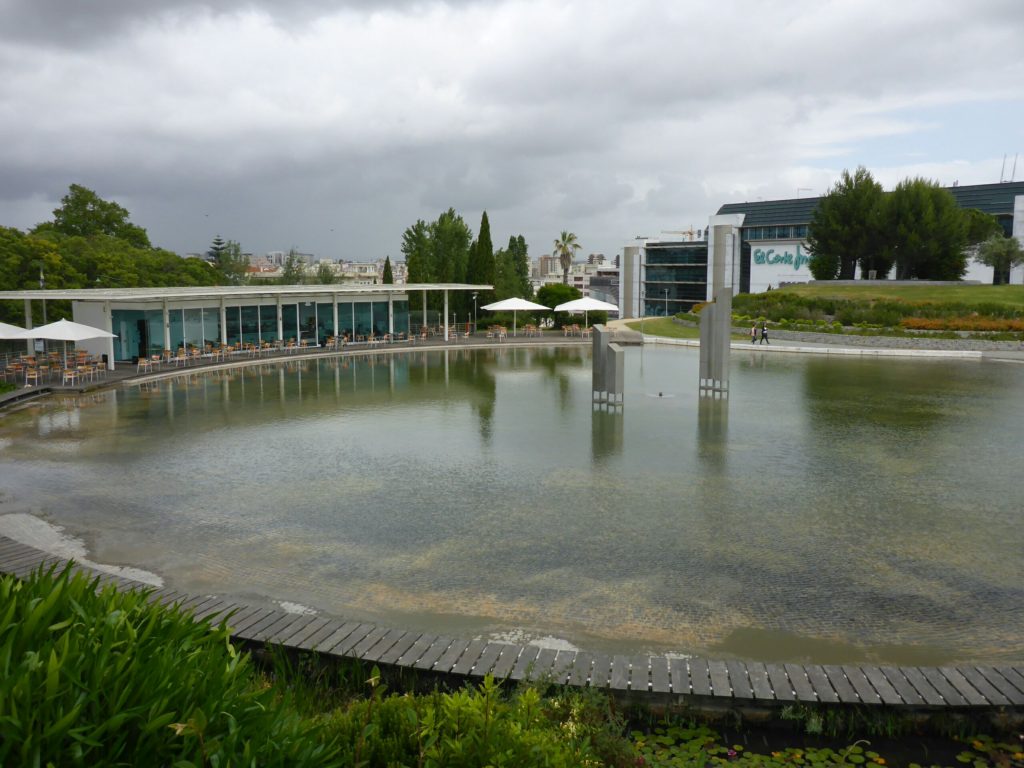 The big attractions within the park are the two estufas, the hothouse (with the more exotic plants) and the greenhouse (“Estufa Fria”) filled with tropical plants, ponds, and endless varieties of palms and cacti. We manage to get in here for free, as the receptionist seems to have disappeared and the grumpy security guard (he wouldn’t let us park the bike too close to the entrance!) just let us wander in!
The big attractions within the park are the two estufas, the hothouse (with the more exotic plants) and the greenhouse (“Estufa Fria”) filled with tropical plants, ponds, and endless varieties of palms and cacti. We manage to get in here for free, as the receptionist seems to have disappeared and the grumpy security guard (he wouldn’t let us park the bike too close to the entrance!) just let us wander in!
Opposite the estufas on the eastern side of the park, sits an ornately tiled sports pavillion dedicated to Carlos Lopes, the Portuguese athlete who won the marathon at the Los Angeles Olympic Games, and that doubles as a venue for occasional concerts and cultural events. and then Jardin Amalia. Rodrigues.
From here we continue to the shop. But where is it? We look everywhere, check the Azub website, check the map, ask a few people – yup the shop has moved. Great. One helpful passerby shows us where the shop is now so off we go again. More hills, more cobbles, more potholes and more tramlines to get caught by. This is how Lonely Planets describes Lisbon: ‘Seven cinematic hillsides overlooking the Rio Tejo cradle Lisbon’s postcard-perfect panorama of cobbled alleyways, ancient ruins and white-domed cathedrals – a captivating recipe crafted over centuries’.
But we think ‘ruttiest, cobblediest, tramliniest, potholiest, hilliest, shittiest streets of a European capital that we’ve ever had the misery to cycle through’. Yup it’s our worst nightmare on the bike.
However, a brief distraction is the discovery of the Mercado da Ribeira which has had many guises – its roots can be traced back to the 13th century, and it was once one of the most famous fish markets in Europe. Many of its traders have been selling fruit, vegetables, meat, fish and flowers there for decades – the place is part of the fabric of Lisbon. When Time Out learned in 2010 that the city council was seeking bids for the chance to manage a large part of the iconic attraction, it couldn’t pass up the opportunity. The Time Out Mercado da Ribeira now brings together some of the city’s most loved names in food and drink. We stop to investigate and enjoy a spot of lunch.
We also check on the bikeshop – yup it’s nowhere near here. In fact it’s a long way away and it appears to open only one day a week. There’s no way we’re attempting a visit until we’re positive they can help so we phone (no answer) and email. Now we’re not visiting the bike shop we just want to get rid of the bike so we find the most direct route back to the hotel and off we go! More bad roads; this time the tramlines are the problem. In order to stay away from these little ‘death-trap’ shiny ruts we have to cycle in the middle of our lane and because traffic is heavy, cars can’t get passed and get impatient because they think we’re hogging the road. We arrive at the Commercial Square which has been called the ‘reception room of Lisbon’. Built on the edge of the Tagus river, the square became a warm sunlit welcome to visitors. With the port lying at one end and grand buildings surrounding it, Praça Comércio provided a regal and proud gateway into Lisbon. At this point I refuse to cycle any further; it’s so fraught for us and actually there’s no rush. In the square there’s a huge TV screen showing the Euro ‘16 games and a fan zone, beer tent and great big Green carpet for everyone to sit on.
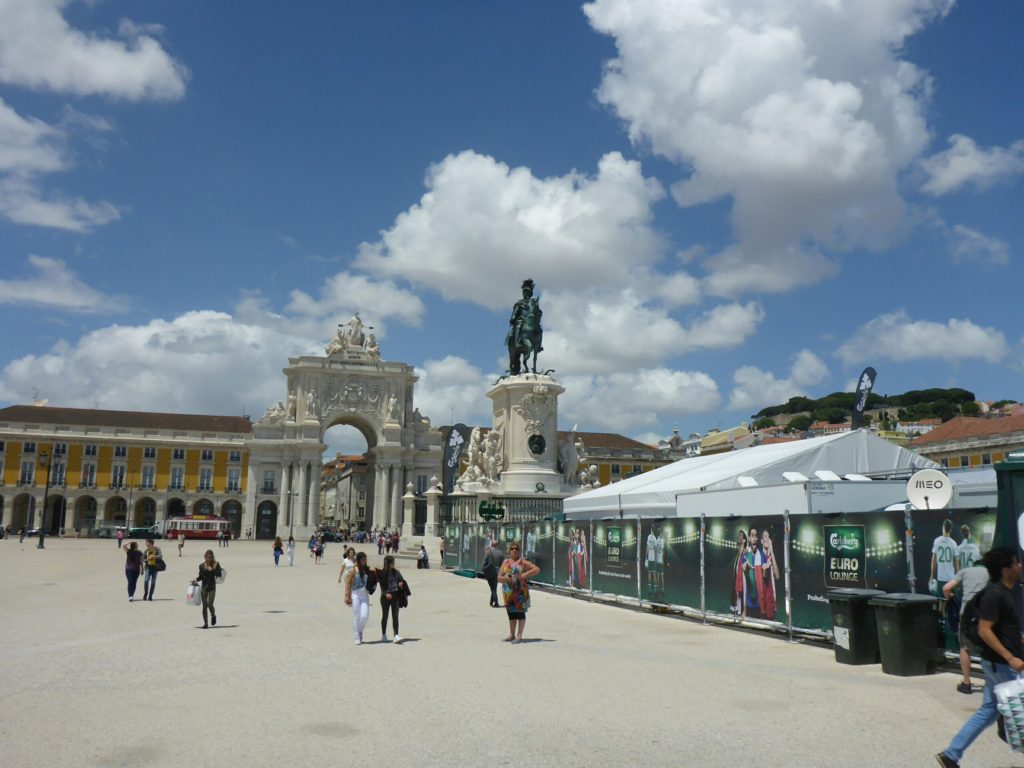
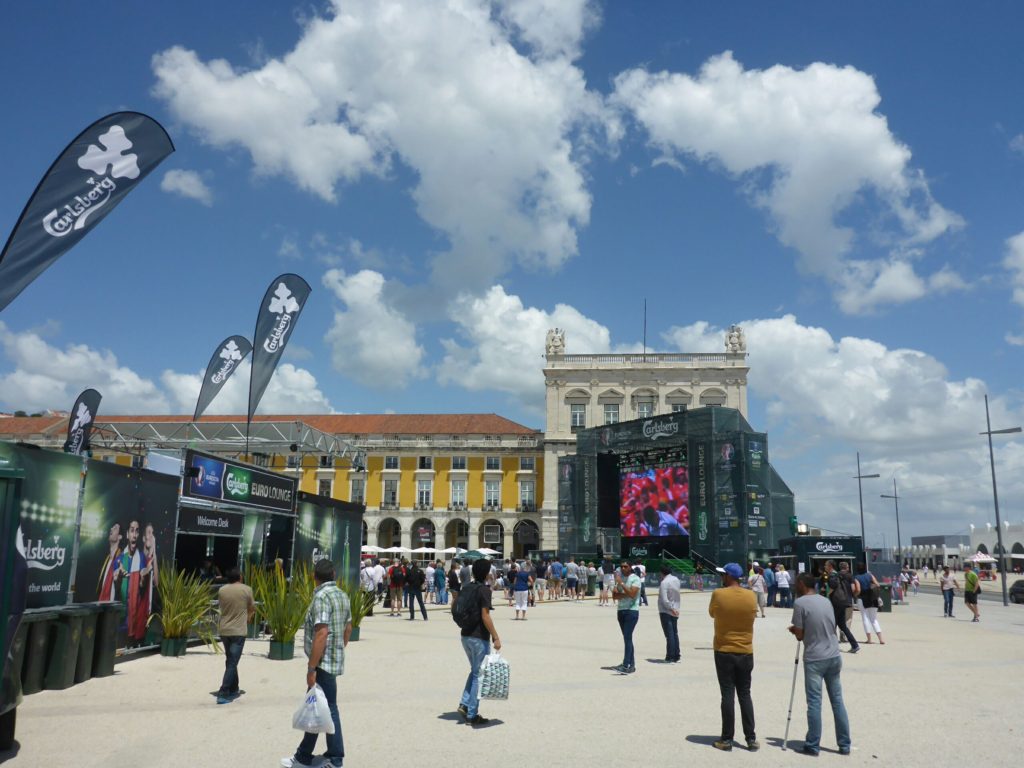

Crossing into Commercial Square you walk under the Arco do Triunfo or Triumph Arch. This colossal piece of architecture was only completed in 1875 and designed by Veríssimo da Costa. Take a moment to look up and you will see representations of Portugal’s glorious history carved upon it. The Marquis has a place here, as does the famous pioneer of the seas; Vasco de Gama. On either side of the Arch are figures representing the two main rivers of Portugal, namely the Douro and the Tagus and crowning the Archway is a statue to Glory, Ingenuity and Valour, three attributes of the spirit of Lisbon. The Archway above all captures the strength of Lisbon in it how it rose from the rubble of the earthquake to be rebuilt.
From here we find a route back to the hotel, pushing the bike.
Last night we parked our bike on the street outside our hotel, padlocked to a lamppost. However everyone (especially our guesthouse owner) seems to have extremely strong opinions about its safety and is convinced it’ll be stolen. They suggest it should be parked a couple of blocks away, outside a bank. Apparently the police regularly patrol outside the bank and it must be considered a ‘safe area’ because there are loads of motorcycles and bikes outside.
Thursday 16th June
First we head off to find a geocache, which is pleasingly ingenious but only ruined by the shopkeeper that ran outside within our first 10 seconds of search and pretty much showed us exactly where it was. Good cache though.
From here we head into the centre for our Go Car and Segway tour. We thought we were going to be driven out in a car with a tour guide but actually we’re in a 3 wheeled Go- Cart for 2, with motorbike controls. It has a GPS guidance and tour guide system, so we drive the route and it tells us the pertinent points.
Daz doesn’t enjoy the drive; it’s uncomfortable with the vibrations running up through his arms and the heavy traffic and dreadful roads stress him out. Surprisingly we’re late back – whoops.
Whilst on the tour we visited the Jeronimos Monastery which is the most impressive symbol of Portugal’s power and wealth during the Age of Discovery. King Manuel I built it in 1502 on the site of a hermitage founded by Prince Henry the Navigator, where Vasco da Gama and his crew spent their last night in Portugal in prayer before leaving for India. It was built to commemorate Vasco Da Gama’s voyage and to give thanks to the Virgin Mary for its success. Vasco da Gama’s tomb was placed inside by the entrance, as was the tomb of poet Luis de Camões, author of the epic The Lusiads in which he glorifies the triumphs of Da Gama and his compatriots. Other great figures in Portuguese history are also entombed here, like King Manuel and King Sebastião, and poets Fernando Pessoa and Alexandre Herculano.
We visit the Park: Belem is home to many green spaces including gardens, squares, and large parks. The Garden of the Empire Square is across from Jeronimos Monastery and hosts an impressive fountain and manicured gardens. The neighboring Afonso de Albuquerque Square, named for the second governor of Portugese India, is spacious and well-kept, with views of Belem Palace.
Drop by Pasteis de Belem for one of their renowned custard cakes and enjoy them in the park on one of its many benches. There are also unexpected statues and figures to admire in the park, like a Thai-style pagoda at the edge of the park.
We visit the famous bakery: In 1837 we began making the original Pastéis de Belém, following an ancient recipe from the Mosteiro dos Jerónimos. That secret recipe is recreated every day in our bakery, by hand, using only traditional methods. Even today, the Pastéis de Belém offer the unique flavour of time-honoured Portuguese sweet making. It’s just like an egg custard tart – what’s the big deal???
And for much of the tour we can see the bridge. The 25 de Abril Bridge, Golden Gate’s twin sister. Completed in 1966 and originally named after dictator Salazar, this suspension bridge across the Tagus River changed its name after the revolution of April 25, 1974. It is a spectacular sight from any direction, with an overall length of 2278m (approx. 1.5 miles), and the longest central span in Europe (1013m/3323ft), longer than San Francisco’s Golden Gate Bridge, which it resembles. Its foundations also hold the world record by going 80m (262ft) below the riverbed to stand on basalt rock.
Back at base, having massively over run on time, we move onto the segway tour of Alfama. Last time we did a Segway tour was with Jac and Jane in Granada and it was a great laugh. I’m afraid Lisbon wasn’t such a hoot although negotiating the narrow streets of the Alfama is fun.
Alfama is Lisbon’s most emblematic quarter and one of the most rewarding for walkers and photographers thanks to its medieval alleys and outstanding views.

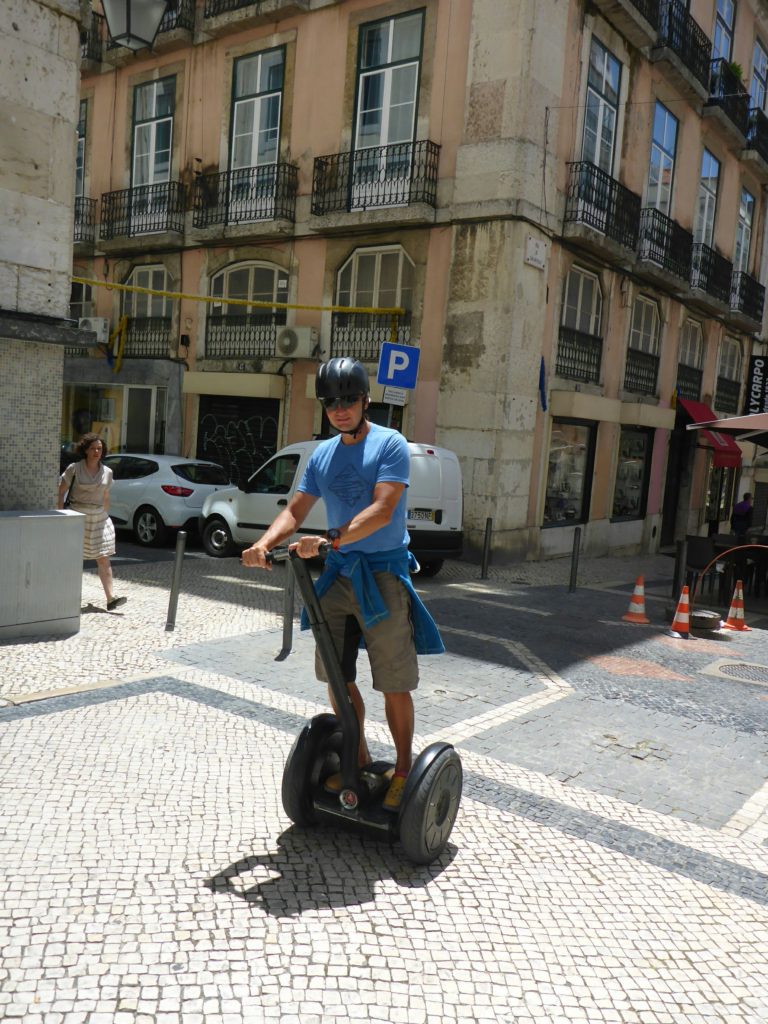
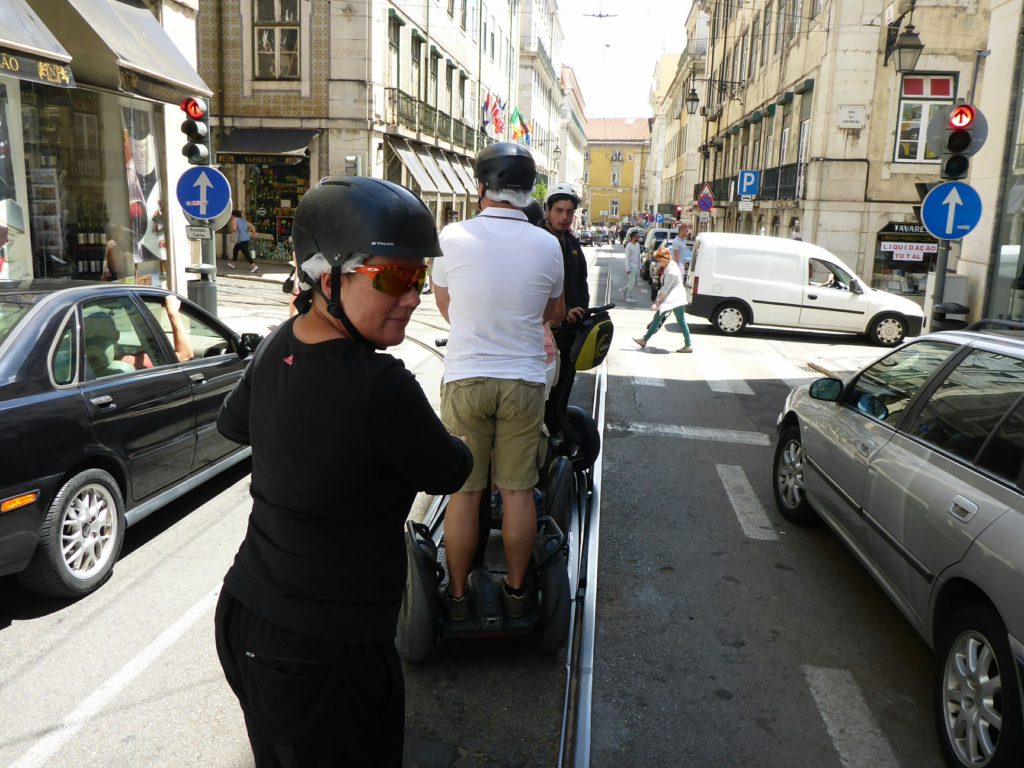
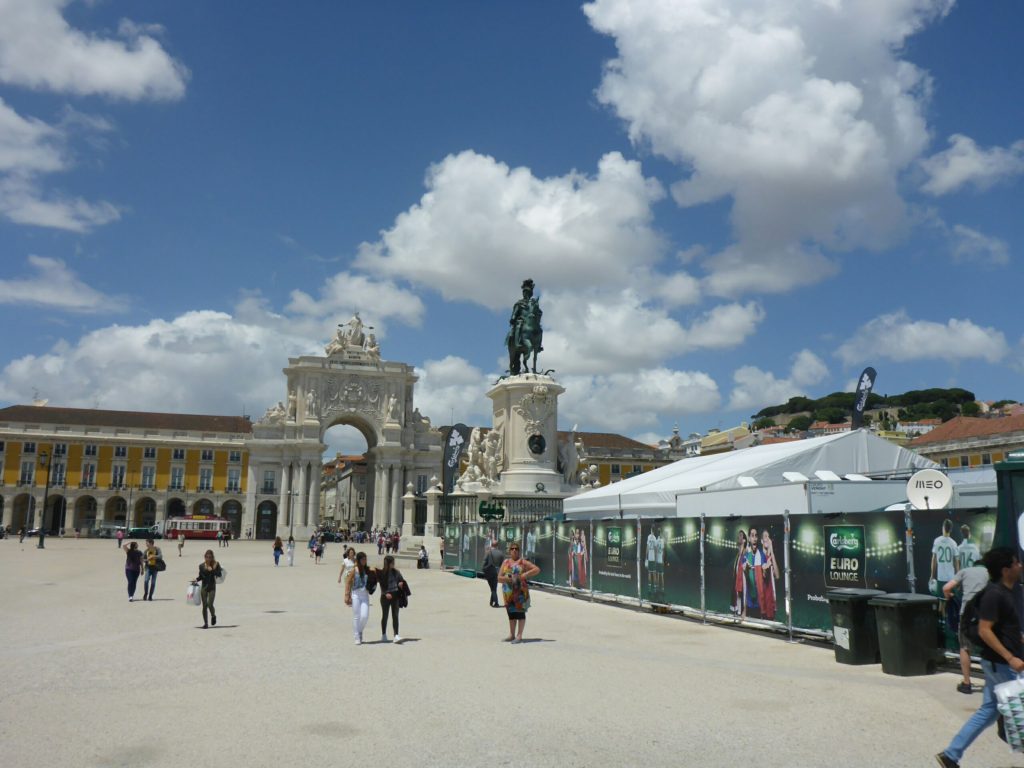


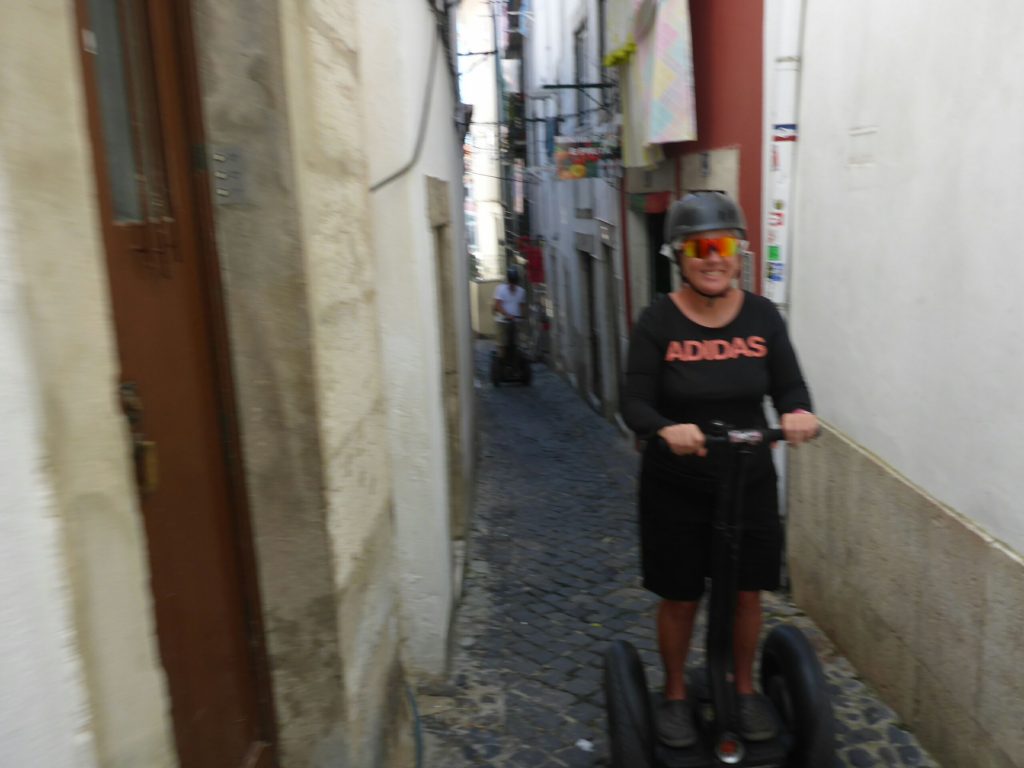
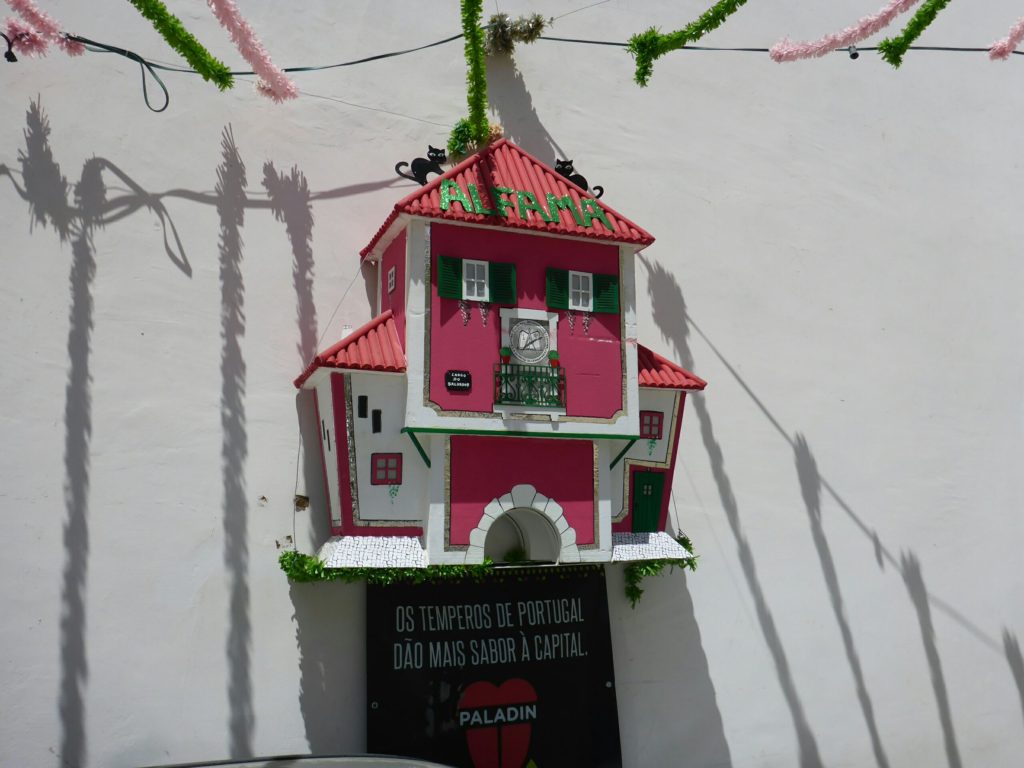
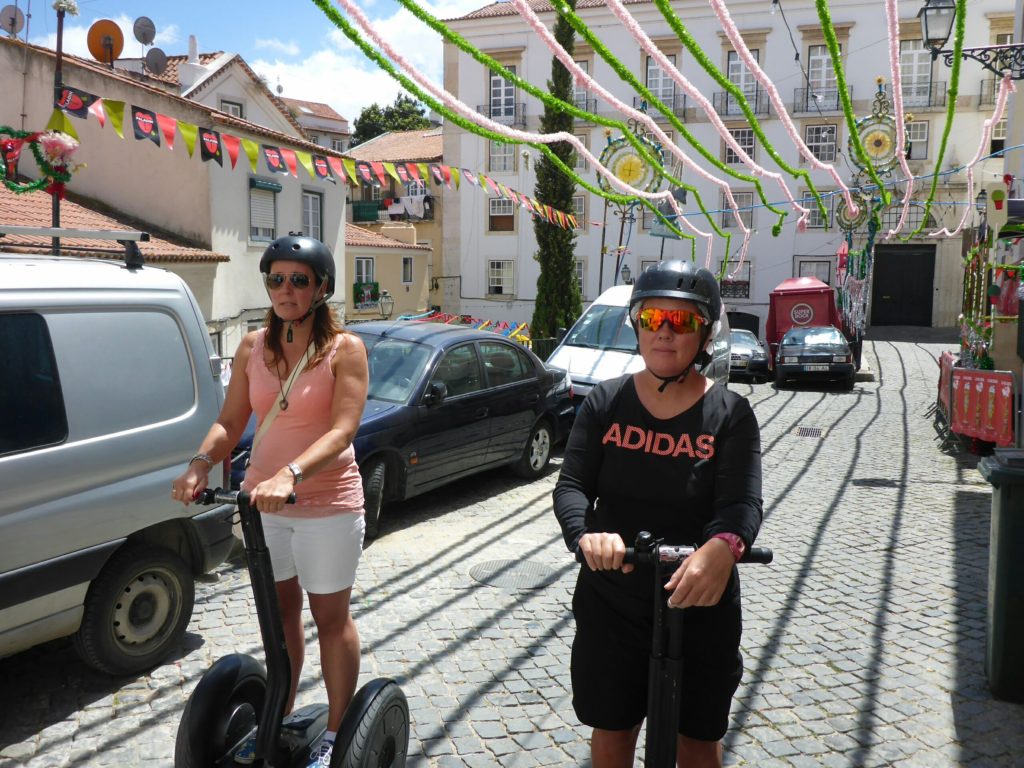
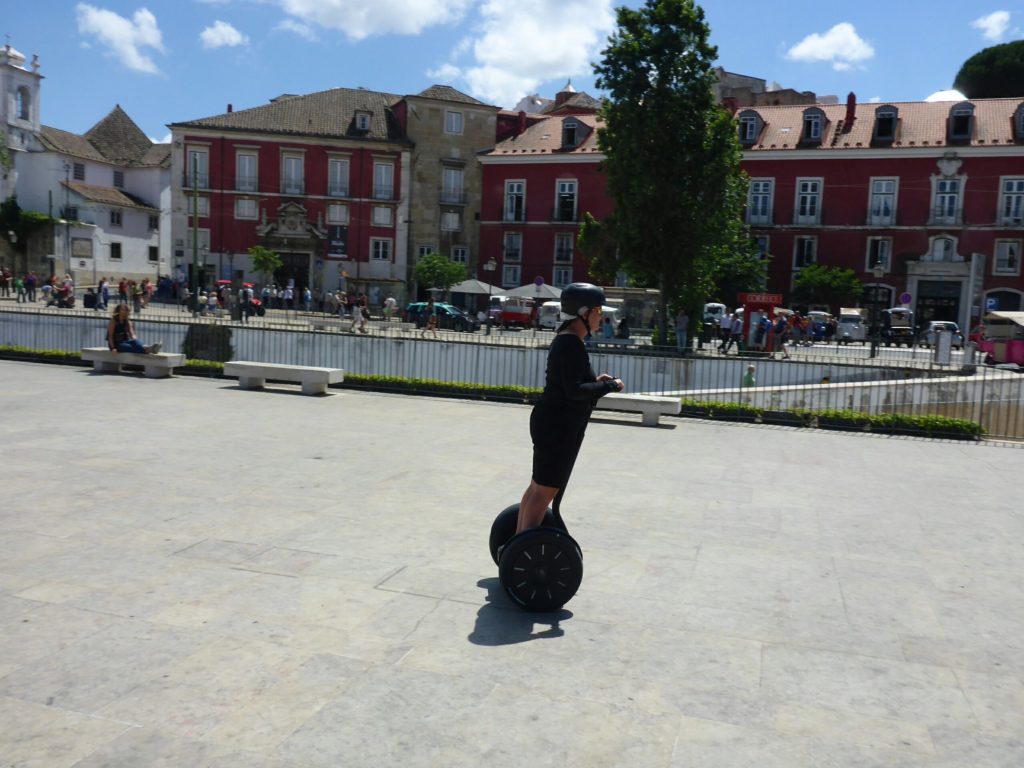
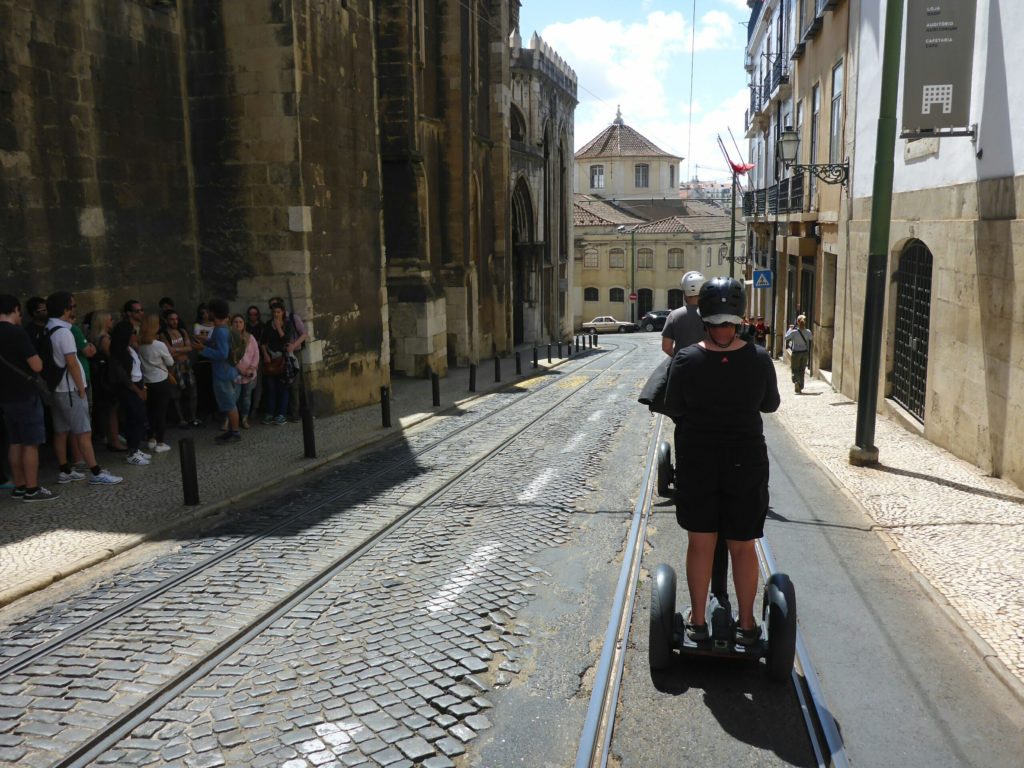
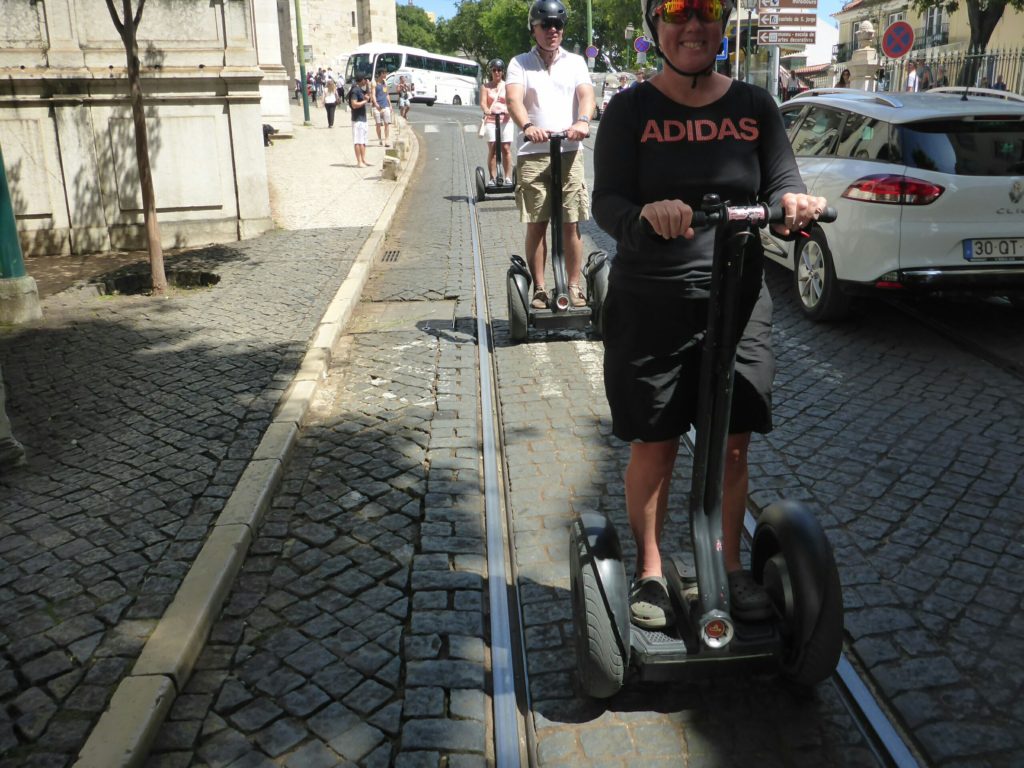
Because its foundation is dense bedrock, it survived the 1755 earthquake, and a walk through this old-fashioned residential neighborhood is now a step back in time. It is a village within a city still made up of narrow streets, tiny squares, churches, and whitewashed houses with tile panels and wrought-iron balconies adorned with pots of flowers, drying laundry, and caged birds.
Since we vetoed the bike yesterday, today we use the trams. Lisbon has a network of quaint, old-fashioned trams that lurch and screech around the narrow streets of the capital. No visit to Lisbon is complete without taking a ride on one of these classic, pre-war, Remodelado trams. OMG what an experience. They have such ‘olde world charm’ but they’re crowded, hot and so slow.
We head to the Chiado district, because we need to visit Basilica St Martines and pick up a Credencial del Peregrino for the Camino Portugués.
We also check out the shops and buy ‘The Little Princess’ in Portuguese for Ana,our couchsurfing host, from Barcelona ( She’s collecting this book in different languages). Another tram ride would’ve completed our day, but it’s so painfully slow, that we end up getting out and walking.
Friday 17th June
A launderette visit, followed by the post office, followed by a tandem check (yup it’s still there and in tact) and then geocaching. One cache takes us to the Elevador de Santa Justa. One of the city’s best-loved landmarks and also known as the “Elevator of Carmo,” this extraordinary structure was built at the turn of the century by the Portugal-born French architect Raoul de Mesnier du Ponsard (an apprentice of Gustave Eiffel, explaining the structure’s similarities to Paris’ Eiffel Tower), to connect downtown to Bairro Alto (the lowest and highest points of the city).

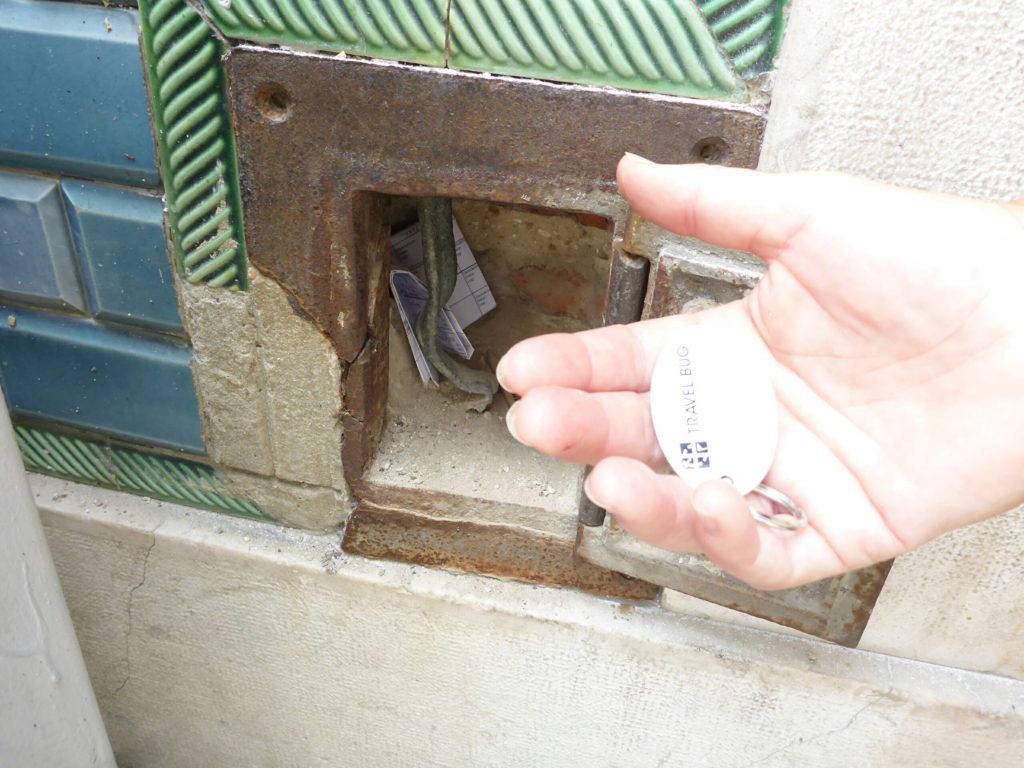




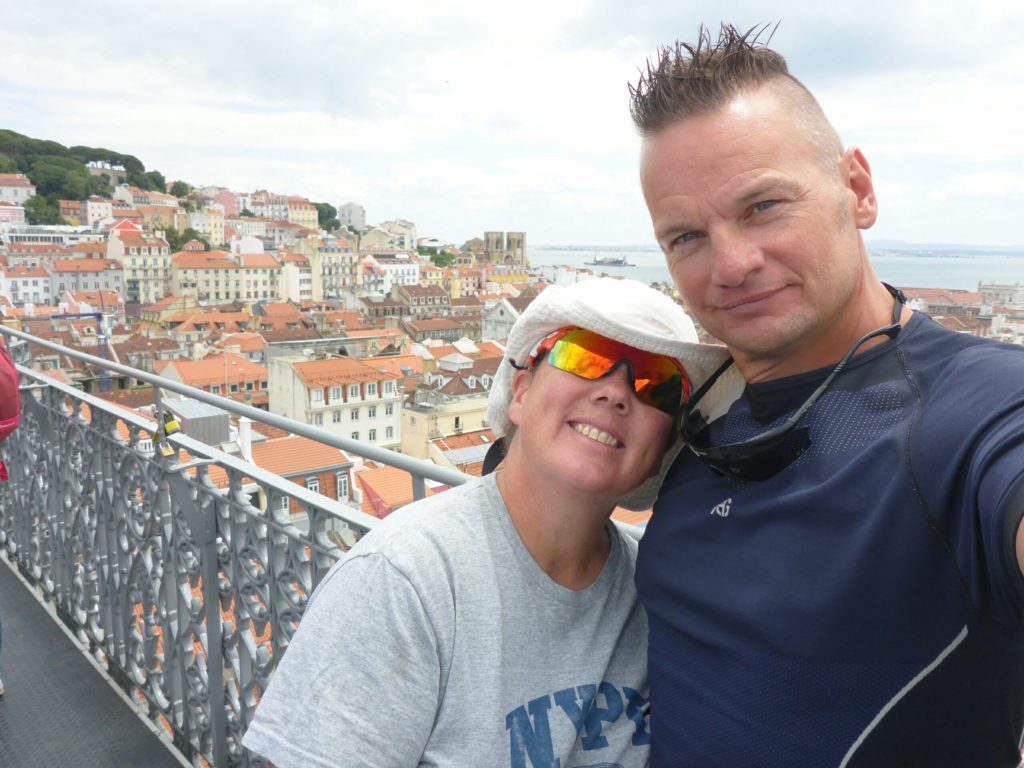
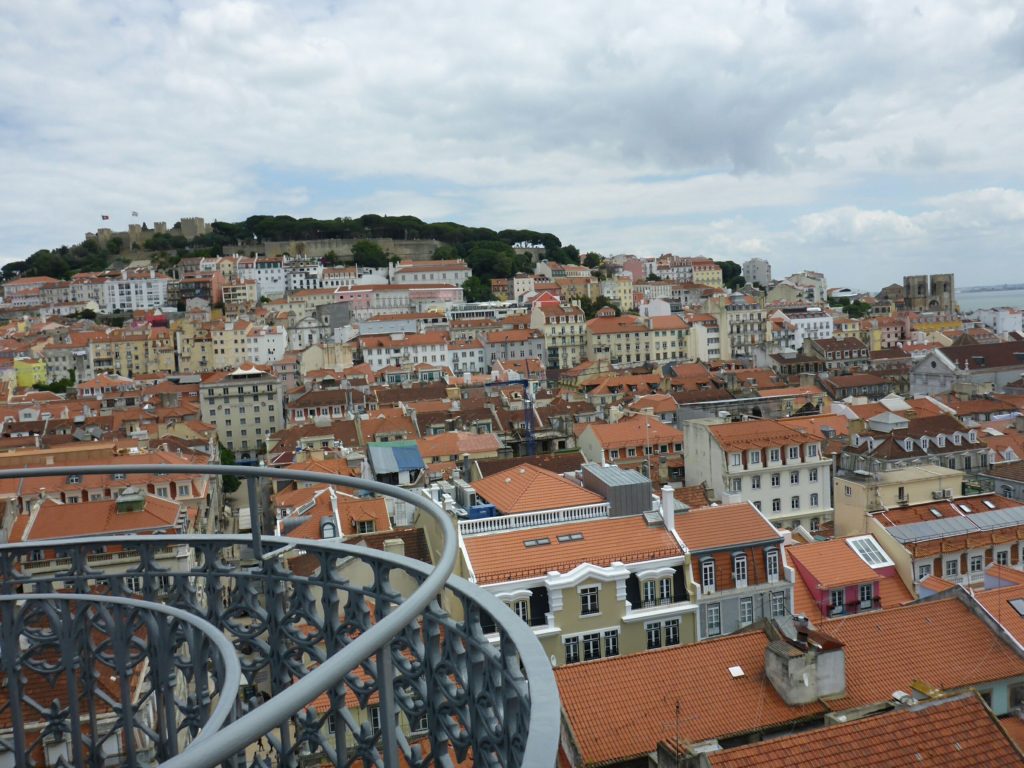
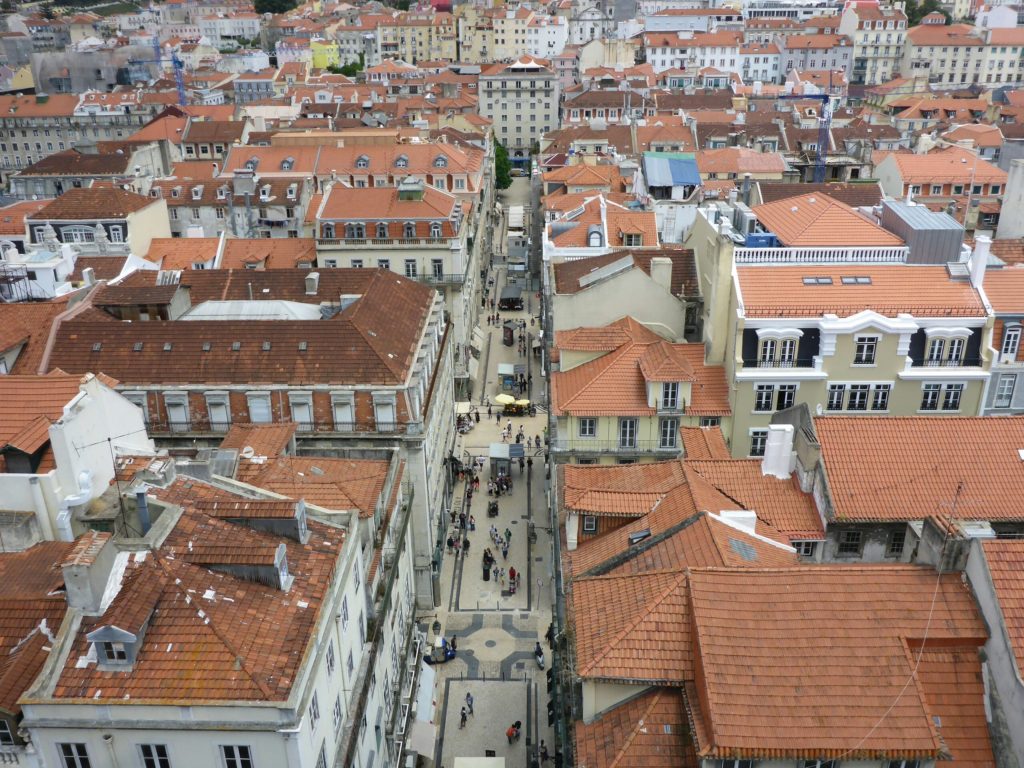
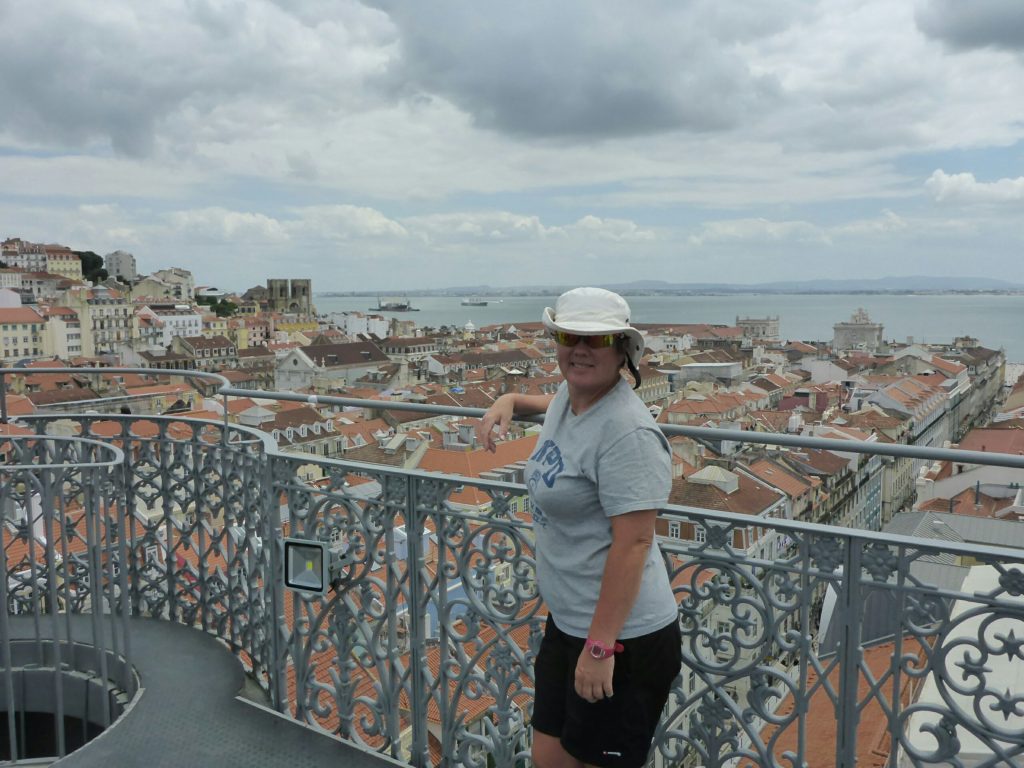
Originally powered by steam, it is 45 meters (147ft) high, and remains an interesting example of post-Eiffel iron architecture. The top of the Neo-Gothic tower, reached via a spiral staircase, has a cafe with splendid views of the city, including over Rossio Square, the castle and the river.
Another cache takes us to a Miradouro.
Lisbon’s topography, with its many steep hills, allows for many great look out points with magnificent views over the city. Many of these so-called miradouros are in the form of public terraces or plazas, where pedestrians can let their weary feet rest while admiring the views.
The miradouro most popular with tourists is undoubtedly the Miradouro de Santa Luzia, a relatively small but romantic looking terrace embellished with plants and azulejo panels (ceramic tiles) with a beautiful view over the old Alfama district and the river Tagus. .
Another cache takes us to the castle. Saint George’s Castle can be seen from almost everywhere in the city. Its oldest parts date from the 6th century, when it was fortified by the Romans, Visigoths, and eventually the Moors. It served as a Moorish royal residence until Portugal’s first king Afonso Henriques captured it in 1147 with the help of northern European crusaders on their way to the Holy Land. It was then dedicated to St. George, the patron saint of England, commemorating the Anglo-Portuguese pact dating from 1371, and became the royal palace until another one (that was destroyed in the Great Earthquake) was built in today’s Comercio Square.
Our final cache is at the cathedral. We also stop for another stamp in our Credencial del Peregrino. Lisbon’s ancient cathedral was built by Portugal’s first king on the site of an old mosque in 1150 for the city’s first bishop, the English crusader Gilbert of Hastings.
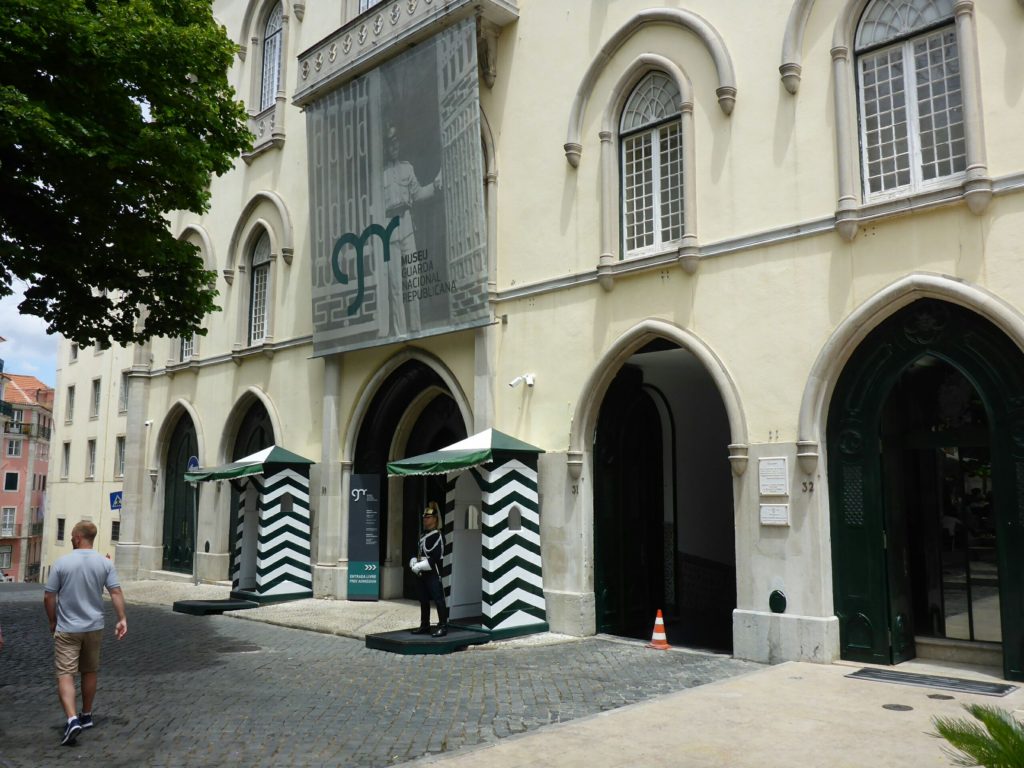
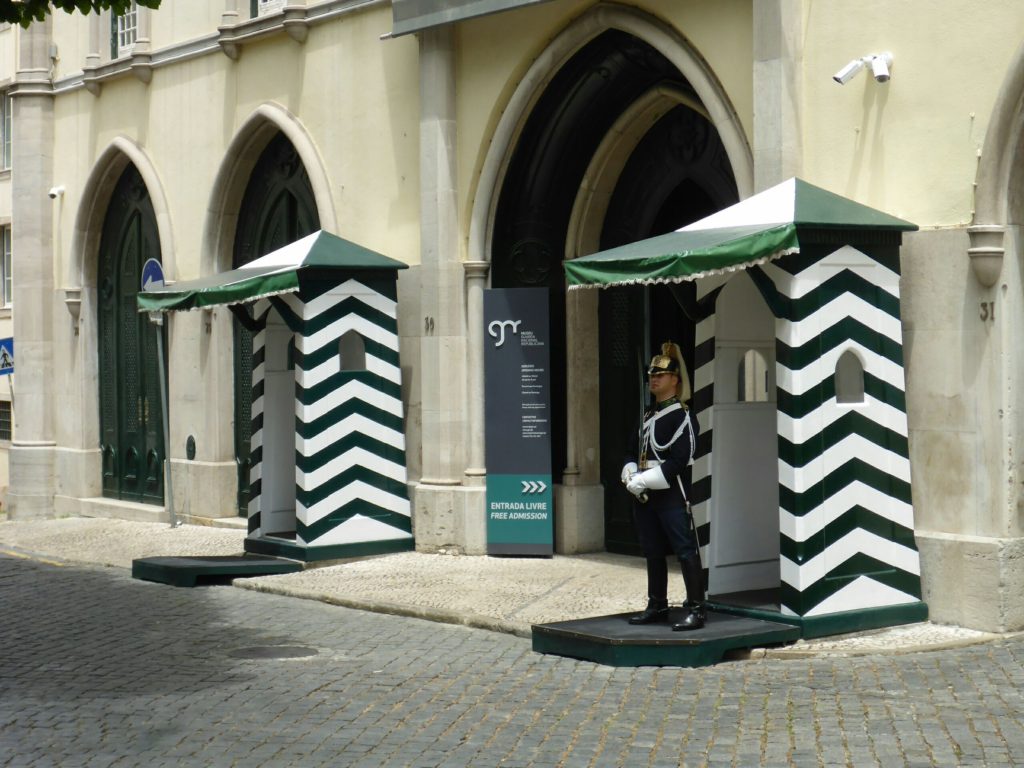
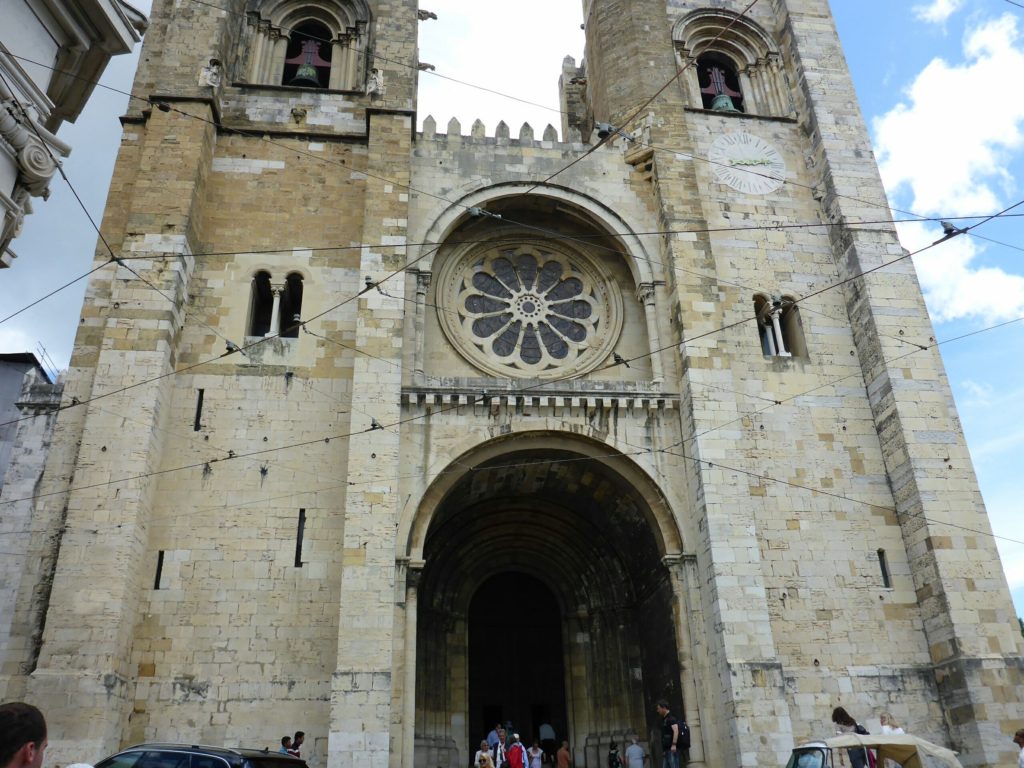
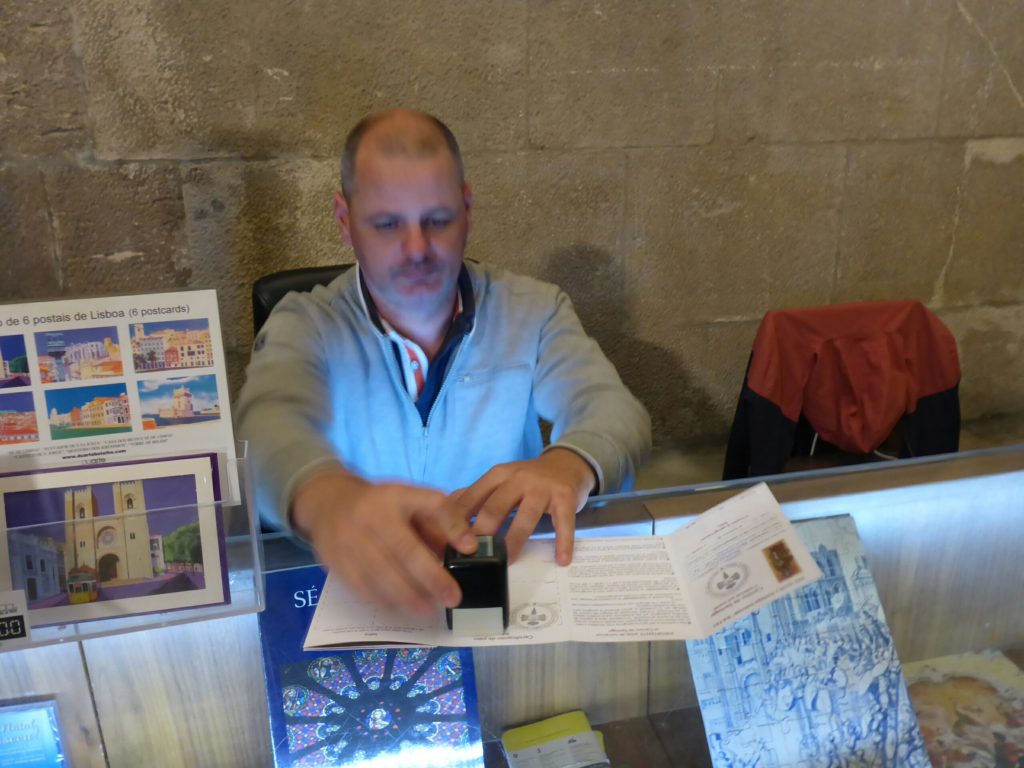
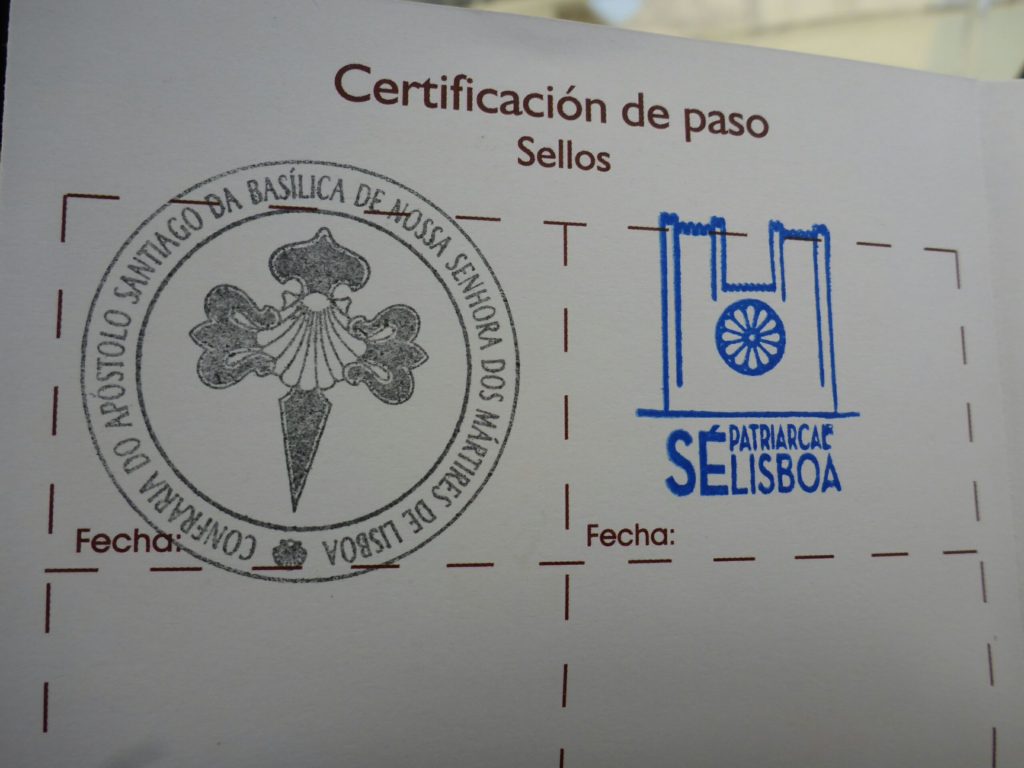
From outside (with two bell towers and a splendid rose window) it resembles a medieval fortress, while inside it appears predominantly Romanesque, with a Gothic choir and ambulatory.
Whilst geocaching we also remember to sample the cherry liqueur, famous in Lisbon, and served in a chocolate cup.
After a quick snack and refreshment stop we are back to the guest house for an early night!
